The Best 10 Day Kenya Itinerary!
Looking for that perfect 10-day itinerary in Kenya? Look no further. We’ve made an itinerary for you to get the most out of your travel experience in Kenya with culture, safari and relaxing time on one of the most beautiful beaches of Kenya.
This 10 day Kenya Itinerary is a unique roundtrip where you’ll visit the highlights of Kenya. It includes a safari, you might be able to spot the big five! A citytrip to Nairobi, and days of relaxing at the Kenyan Beaches!
- Nairobi – 1 day
- Kenya – 1 day
- Lake Nakuru & Lake Naivasha – 2 days
- Maasai Mara Game Reserve – 3 days
- Mombasa (Diani Beach) – 3 days
Kenya will have you falling in love with the landscape, wildlife and culture the moment you step off the plane. It’s the best safari destination in the world, but Kenya has so much more to offer than just wildlife. So let’s get started!

Make sure to read are other blogs about Kenya:
- The 10 most beautiful beaches in Kenya
- Kenya Travel Guide (practical information)
- 13 mindblowing things you need to know about the Maasai Tribe
- Kenyan Tribes: Everything you need to know before you travel to Kenya
- 20 awesome things to do in Nairobi
10-day Kenya Itinerary
1. nairobi – 1 day.
The first stop on your 10-Day Kenya Itinerary is Nairobi. Typically, when you fly into Kenya, you will fly into Nairobi International Airport. Or you fly into Mombasa the exotic town at the coast of Kenya with stunning beaches. It’s what you prefer. Nairobi is closer to the best safari parks and ending your trip in Mombasa is what we advise you to do.
So while already in Nairobi, why not make the best of it for a day before you head out to your first destination. Stay the night at Giraffe Manor and have breakfast with giraffes. An alternative is to visit the Giraffe Centre close by where you be able to feed the endangered Rothschild Giraffes. And learn more about this endangered giraffe species. Or visit the David Sheldrick Wildlife Trust to get close to orphaned elephants and rhinos.
A few top places add to your Kenya Itinerary is visiting the Parliament Building , the City Market with local produce and craft markets in Nairobi and get some cultural history at the Nairobi National Museum . And if you are a carnivore you should definitely eat at the famous Nairobi restaurant: Carnivore .
Nairobi is the gateway to your Kenya safari and an excellent place to learn more about the culture and people of Kenya. Another tip is to check the events before you travel to Kenya. A great event to experience the local vibe is the Blankets and Wine Event that’s every first Sunday of the month.
The best venue to catch some live music is at the Live at the Elephant. It’s the perfect location in Nairobi to relax and enjoy listening to some local live Kenyan music.
Useful information
- Read our Nairobi article: 20 awesome things to do in Nairobi
- Places to stay in Nairobi (check the latest prices on Booking.com)
2. Mt. Kenya – 1 day
The Mount Kenya National Park is the second stop in your Kenya Itinerary. Mt. Kenya is the highest mountain in Kenya and the second highest mountain in Africa (highest: Kilimanjaro). The highest peaks are covered with snow and it’s the perfect backdrop for a safari filled with elephants. Well, hopefully, because the surroundings of Mt. Kenya are perfect for spotting the beautiful African elephants. So make sure to go on a walking or 4WD safari when you’re in the area.
Unfortunately, in this 10-day itinerary, there isn’t enough time to climb Mt. Kenya, but that’s a great activity to do when you come back for another time in Kenya. In this itinerary there sure is enough time to hike around Mt. Kenya and sit back and relax on the porch of the many lodges in the area. Having a cold beer overlooking the beautiful landscape and spot great wildlife is also enough for a day. And a great start to the rest of your trip through Kenya.
- Places to stay Mt. Kenya (check the latest prices on Booking.com)
- Activities to book Mt. Kenya (Book your activities via GetYourGuide!)
3. Lake Nakuru/ Lake Naivasha – 2 days
Lake nakuru.
The third stop on your 10-Day Kenya Itinerary is Lake Nakuru. Here you will want to spend a couple of days, with all there is to see. Lake Nakuru National Park is located in central Kenya and is the perfect spot to see a wide variety of African wildlife. It is a beautiful natural escape you will fall in love with, which is why it is noted in this Kenya Itinerary. It’s a destination in Kenya you won’t want to miss.
You can explore the national park and see beautiful animals such as rhinos, hippos, leopards and many others. One unique thing that makes this location a top spot in your Kenya Itinerary is that it is the best spot to see the Lesser pink flamingos. The algae in Lake Nakuru is what attracts these flamingo’s to this lake in is the reason why the lake and flamingo have a pinkish colour. It is a beautiful site and one of the highlights of your Kenya Itinerary.
There are several safari resorts and lodges right in the National Park so you can wake up amidst the natural beauty of wildlife surrounding you. Or you can stay in the town, Nakuru, nearby so you can get the local town feel.
Due to dry periods in the past in Kenya Lake Nakuru shrinks from time to time. The abundance of water depends also if you’re visiting Lake Nakuru during the rainy or dry seasons of Kenya.
Kenya has two rainy seasons. The long rain season is from April to June and the short rainy season is from October to December. The hottest period in Kenya is in February and March.
- Best places to stay Lake Nakuru (check the latest prices on Booking.com)
Lake Naivasha
The other option in your Kenya Itinerary is to visit Lake Naivasha instead of Lake Nakuru. Both are nearly close to each other so it’s up to you. If you’re a quick traveller and driver maybe you can do both.
Lake Naivasha is a freshwater lake and is a totally different experience to Lake Nakuru. You can spot crocodiles and hippo’s coming out of the water every evening and this lake is a recreational area to many Kenyans. So there are a lot of activities to in and around Lake Naivasha. Go on a boat safari and spot an incredible variety of bird species. And at Hell’s Gate National Park you can go on walking or horseback riding safari and spot wildlife like giraffe, buffalo, Colobus monkeys, hartebeest and many more.
An easy day trip from Lake Naivasha is to climb Mt. Longonot . It’s an adventurous 4-5 hour hike into the crater of Mt. Longonot where you can spot buffalo, antelopes and maybe even leopards. If you’re lucky ;).
Another great activity is to visit Elsamere . Visit the beautiful lodge with an amazing view over Lake Naivasha, have a delicious cup of tea and learn more about The Joy Adamson Story. The women who raised the lion cub, Elsa, and successfully released her into the wild many years later. Her best-selling book, Born Free, is definitely something you want to read while you travel through Kenya.
- Best places to stay Lake Naivasha (check the latest price on Booking.com)
- Interesting Book to read: Born Free (check the latest price on Amazon)
4. Maasai Mara Game Reserve – 3 days (Best stop in the Kenya Itinerary)
The next stop on your 10-Day Kenya Itinerary is the Maasai Mara Game Reserve and the most exciting one. You haven’t travelled to Kenya if you haven’t visited the Maasai Mara, so put this for sure in your itinerary. In this park, you will have the ultimate safari experience as you have seen on the National Geographic channel and dreamed about after watching.
We recommend spending a good three days in this stunning location. This is the picture perfect destination to get your full safari experience and see the big five on your game drive.
What is the big five? It’s a bit outdated but the big five is actually an old hunting term. It refers to the five most difficult animals in Africa to hunt on foot: the rhino, leopard, buffalo, elephant and lion. Now it’s used as a safari term by African tour operators.
Best Game Reserve to visit in Kenya
The Maasai Mara is one of the best game reserves in the country due to its abundance in wildlife. This will mean that your chances of seeing all the magnificent animals you want to catch a glimpse of are much more likely than in other areas or parks in the country. And you need three days to give you a chance to spot them all (if you’re very lucky) and make the most out of your African safari experience. There is such a variety due to the vastly different terrains all located in this reserve. You will want to get your camera ready!
And visiting a Maasai village is a must-do as well. It’s a once-in-a-lifetime-experience you must add in your Kenya Itinerary. This tribe has become the symbol of Kenya and is one of the more traditional tribes of Kenya . Known for the tall men jumping very high in the air wearing red clothes. We wrote an article about the Masaai Trib that you might find interesting:
- 13 Mindblowing Things About the Maasai Tribe .
Whether you take a bush walk or go on a game drive, you will be amazed at the landscape and the beautiful animals surrounding you in their natural habitat. Where else would you be able to have a lion or rhino walk right up beside the vehicle you are sitting in. It is one of the prettiest places to explore in Kenya, thus making it a top destination in your Kenya Itinerary.
The most extravagant way to experience the Maasai Mara is to book a hot air balloon safari. You will be picked up before sunrise and just as the sun is coming up you will fly in the air to spot the wild animals at their most active time of day. Oh, and when you land in the middle of the savanne there will be a champagne breakfast waiting for you……
The best time to watch the annual migration of wildebeest and zebra in the Masai Mara is between June and September right after the long rain season.
- Best places to stay Masai Mara (check the latest price on Booking.com)
- Interesting Book to read: The White Maasai (check the latest price on Amazon)
- 13 mindblowing things about the Maasai Tribe (Made For Travellers article)
5. Mombasa (Diani Beach) – 3 days
The last stop on your itinerary for Kenya is Mombasa. This is the perfect destination for a little relaxation after your exploration of Kenya’s National Parks. Kenya’s beaches are quite stunning and a stop is definitely worth multiple days. So you have enough time to relax and process al the amazing experiences and memories you’ve made in Kenya.
Diani beach, in particular, has a little bit of everything. Located on the Southern portion of Kenya’s coast, Diani Beach is about an hour South of Mombasa. There are plenty of resorts along the beach that will provide perfect accommodations for your stay.
During the day you have the crystal-clear waters and sandy beaches to dip into. Lined with coconut palm trees the beach offers great snorkelling and marine life. You can even spot whale sharks. In the evening, you will be able to peruse the different shops and boutiques. There are several restaurant options for when meal time comes around. If the nightlife is your scene, there is a lively nightlife scene surrounding Diani Beach as well. Since your schedule is packed with so much to do, Diani really is the perfect beach option. You can relax and still having plenty to explore. It is the perfect stop in your Kenya Itinerary!
There are many stunning beaches along the coast of Kenya. We’ve made a list of the 10 most beautiful beaches in Kenya . So you can make the best decision to end your trip in Kenya.
- Read our Practical information Kenya Travel Guide
- Best places to stay Mombasa, Diani Beach (Check the latest price on Booking.com)
- Activities to book Mombasa (Book your activities via GetYourGuide)
Additions and Alternatives for Your Kenya Itinerary
- Visit Amboseli National Park instead of the Masai Mara. It’s near the border of Tanzania and during your safari, you’ll have an amazing view of the Kilimanjaro in the background. It’s a lot smaller than the Masai Mara but the view of the Kilimanjaro makes up for it.
- Go to Aberdare National Park instead of Mt. Kenya and spot beautiful waterfalls like the Karuru Falls, Thomson falls or the Chania Falls.
- Explore Tsavo National Park as an additional safari experience. It’s one of the oldest and largest national parks of Kenya. The park lies between Nairobi and Mombasa. Instead of flying to Mombasa from Masai Mara or Nairobi you can drive to Mombasa and you will drive through Tsavo National Park. Or take the train from Nairobi to Mombasa and you can spot wild animals from the train.
- Fly to Zanzibar (Tanzania) for the last few days relaxing in the sun at the end of your Kenya Itinerary. It’s a beautiful and exotic island of the coast of Tanzania with beautiful white sandy beaches, turquoise water and a lot culture to explore in Stone Town .
Similar Posts
13 mindblowing things you need to know about the maasai tribe | kenya, kenyan tribes: everything you need to know before you travel to kenya, the most beautiful beaches in kenya, 20 awesome things to do in nairobi, kenya.
14 things you need to know before traveling to Kenya

Nov 21, 2023 • 7 min read
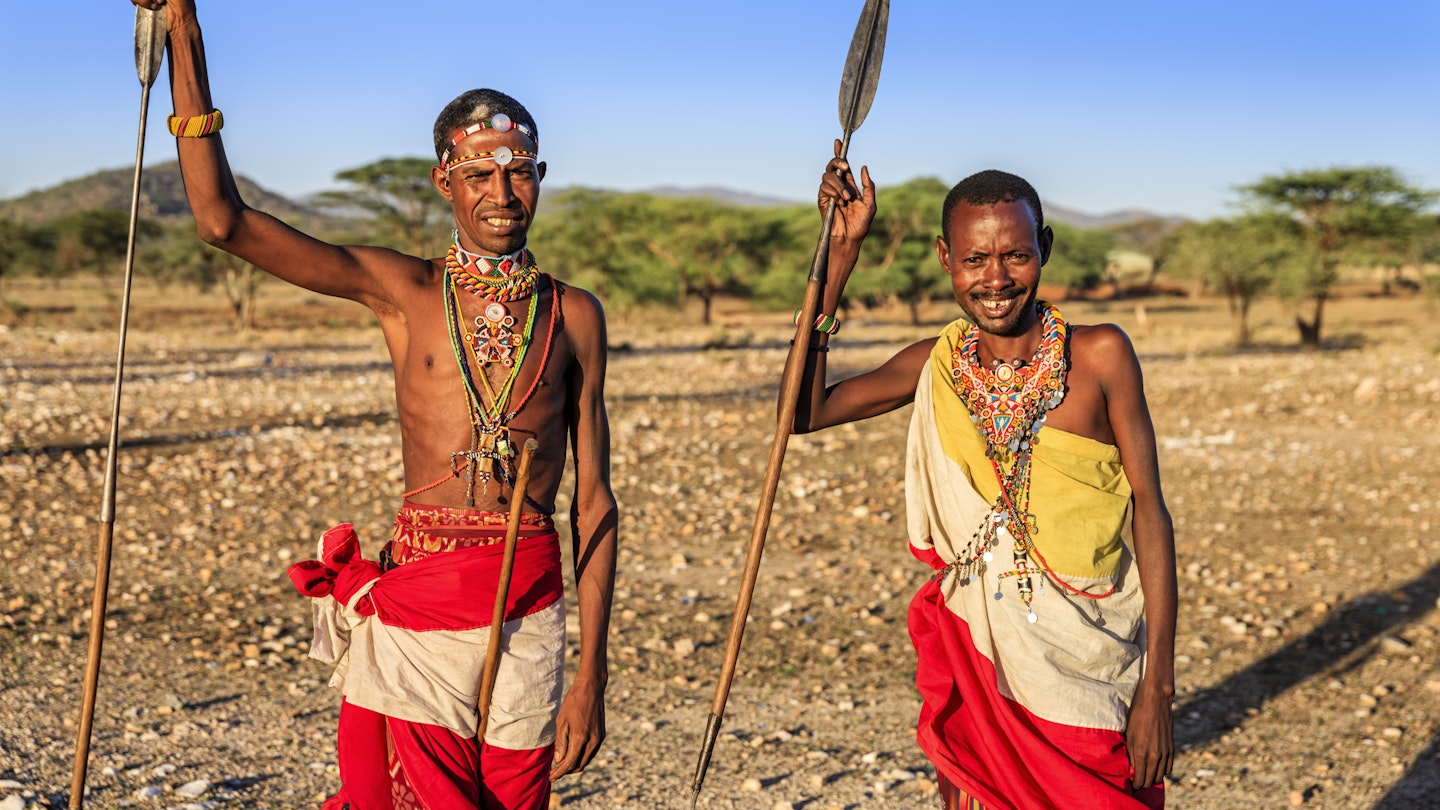
Make the most of your travel through Kenya with these practical tips © Bartosz Hadyniak / Getty Images
Think of Kenya and your mind instantly fills with exquisite scenes of safari jeeps and beautiful beaches lapped by the Indian Ocean.
But the incredible experiences stretch beyond Kenya's natural landscapes – Nairobi offers exciting urban and cultural encounters, too.
Here’s everything you need to know to make the most of a trip to this East African nation, from clothing and etiquette to safety and visas.
1. Check the visa requirements for Kenya
Many nationalities need to obtain a visa before departing for Kenya. Check the official visa website and allow time to complete your application. Random checks can mean extra questions for some travelers, even after submission and payment.
You won’t receive an email confirmation of your Kenya visa application or payment, so you need to log in to check its status. Once issued, print a color copy (or two) of the visa and payment and keep them on hand, even for domestic flights, such as between Nairobi and Mombasa.
The good news for citizens of African countries is visas for Kenya will be a thing of the past next year. The Kenyan President, William Ruto, recently announced that visa requirements will end for all African nations by the end of 2023.
Proof of a COVID-19 vaccination and a negative PCR test is no longer required to enter Kenya. However, travelers exhibiting flu-like symptoms will be required to take a PCR test and fill out a passenger locator form.
2. Pack smart for Kenya – it’s not always hot
Early morning safaris can be chilly, so it’s wise to take layers for a trip to Kenya. Similarly, temperatures can drop at night in the highlands. Fleeces and even windproof waterproofs are recommended.
On the other hand, staying cool is key by the coast or in the city. Pack cool, breathable fabrics and always cover up in the midday sun.
3. Leave your plastics at home
Kenya banned single-use plastic bags in 2017, so leave any carrier bags (and preferably single-use plastic water bottles and straws) at home. The bag ban is countrywide – luggage is often scanned, so don’t pack shoes or other items in plastic bags.
Single-use plastic bottles and straws are banned in national parks – bring a reusable water bottle from home.
4. Do you need malaria tablets for Kenya? Probably.
The risk of malaria is low in Nairobi, and in the highlands above 2500m (8200ft), but you should still avoid being bitten. The majority of Kenya falls into a malarial zone, so take advice on which antimalarial is best suited to you between atovaquone/proguanil, doxycycline or mefloquine.
Brand names you might be more familiar with include Malarone and Lariam, but check with your physician, pharmacy or travel clinic. Ideally do this a month in advance of your trip, as you may have to begin taking the pills some time before your trip begins.
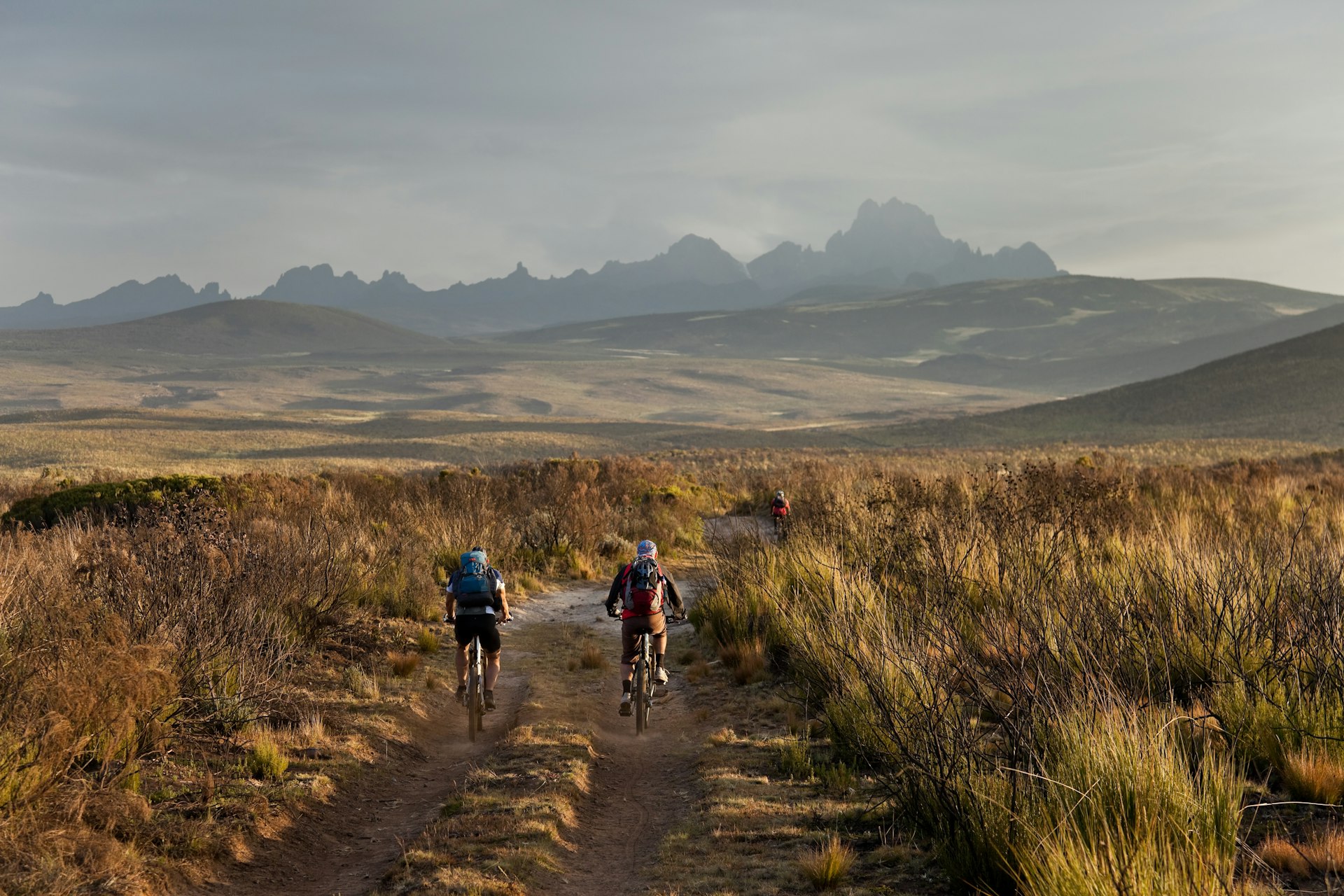
5. Greet people with “ mambo ” or “ niaje ”
“ Jambo ” is the best-known greeting in this fantastically friendly country, but if you want to show off your sheng (a Swahili and English combo originating among Nairobi’s younger population), try greeting people with “ mambo vipi .” The common reply is “ poa .” Alternatively, say “ niaje ,” to which someone will reply with “ niaje .”
6. Feel free to bargain, but don’t go too far
A sense of humor is essential when bargaining. It’s fine to offer a lower price in markets and some shops – many sellers will start with a higher price, and it can be fun to barter and meet in the middle.
Few sellers will accept an offer that's too low so have some fun with it – just bear in mind what you’re prepared to pay, be respectful and don’t over-haggle.
7. Leaving a tip goes down a treat
Tipping isn’t expected in Kenya, but if you’ve had a good meal or service, leaving around 10% is appreciated. In hotels, you can also tip porters and housekeeping staff. Some calculate it at Ksh100 to Ksh200 a day while others round it up at the end. Keep small change on you for tips and shopping in markets.
If you’re taking a taxi, round up to the nearest 100, but tips are not always necessary. Taxi apps are popular, and you can add a tip at the end of the journey through the app. Avoid giving money in exchange for preferential service.
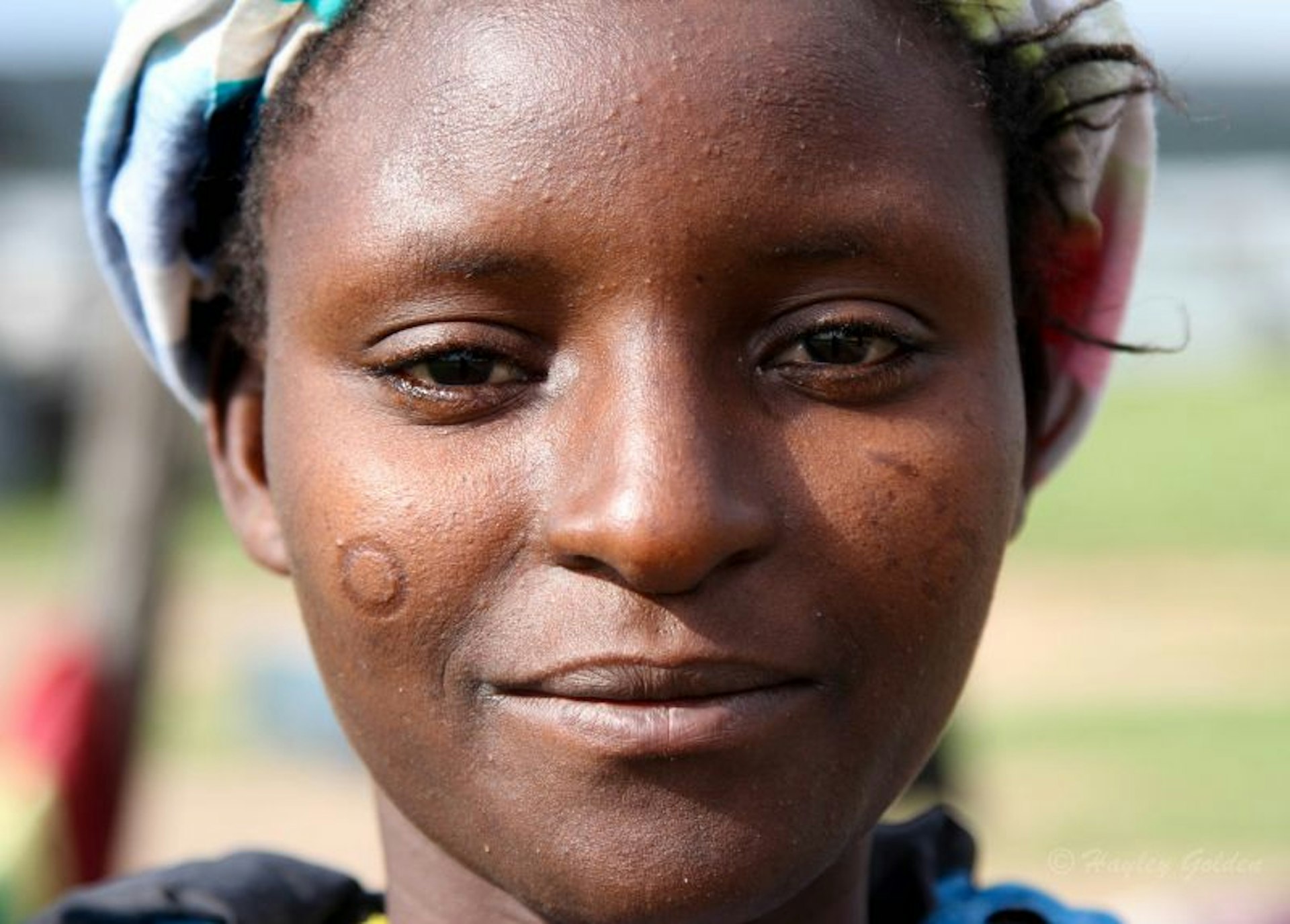
8. Be respectful of local communities
Never take photos of people without asking permission, particularly in rural areas and in Mombasa . If you want to publish any photos, even on social media, it’s respectful to carry a consent form and say “ asante ” (thank you).
Be particularly conscious around children or other vulnerable people. If you’re given the OK to take a photo, show it to them after you've taken it. Think twice before visiting a school (or anywhere that would be strange or inappropriate for you to go to in your home country).
Also note: anyone taking photos of infrastructure, airports and the military may come under suspicion.
9. Dress appropriately – but don’t overthink it
Kenya is moderately conservative, but that doesn’t mean you need to cover your shoulders and knees everywhere. In Nairobi, in towns and on safari, shorts, dresses and sleeveless tops are fine to wear, and the same goes for most beach resorts , although walking around in swimwear isn’t appropriate.
In Muslim communities such as Lamu Town, dressing more conservatively is advised. Loose clothing can be more comfortable in the heat.

10. Don’t rush – go with the flow
It’s misleading to suggest the whole of Kenya operates on some slower “Kenya time” – Nairobi can have the same pace and rhythm as any major city. But the heat and humidity of the coastal areas, around Mombasa, Malindi and Lamu for example, can mean life needs to be lived at a more relaxed pace.
Bear that in mind before expecting certain tasks and services to be carried out immediately, and instead, go with the flow and enjoy a pole pole (“slowly” in Swahili) way of life.
11. You can boil the tap water in Kenya and drink it
Tap water in Kenya isn’t off-limits. If you have the facilities, you can boil the tap water – it’s soft and sweet – and drink it once cooled.
Obviously, that's not always an option, in which case filtered water in restaurants and hotels is safe. You can buy plastic-bottled water, but it’s obviously a lot more ecofriendly to bring your own reusable bottle and water filter or tablets.

12. Pack a power bank
Power cuts in Kenya can occur (they’re usually not for long), so if you rely on your smartphone, take a power bank and ensure it’s always charged. Take a spare camera battery if you're going on safari – and a decent flashlight is helpful in case of power cuts but also when walking around the safari camp at night.
In addition to helping you navigate in low light, it will help you look out for insects and snakes. Headlamps are especially handy on a campsite for reading and for nighttime bathroom trips.
13. Don’t be scared by headlines, but know your geography
People often ask, “Is Kenya safe for tourists?” Few incidents involve tourists, especially in game reserves and tourist areas, but there are a few areas it's better to avoid.
These include but are not limited to, within 60km (37 miles) of the Kenya-Somalia border, Garissa County and Lamu County (excluding Lamu Island and Manda Island – travel by air if you're planning a visit).
Check the latest guidelines from your government before traveling. In Nairobi, as with any major city, keep valuables safe and your wits about you.
14. Keep embassy and consulate details to hand
Wherever you’re from, it’s savvy to know the contact details of your embassy or consulate. Take photos of your passport, visa and other documents, so you can access them on your phone or email.
Carry an original form of ID if possible. A driver's license is useful if you don’t want to carry your passport with you every day.
This article was first published March 2022 and updated November 2023
Explore related stories
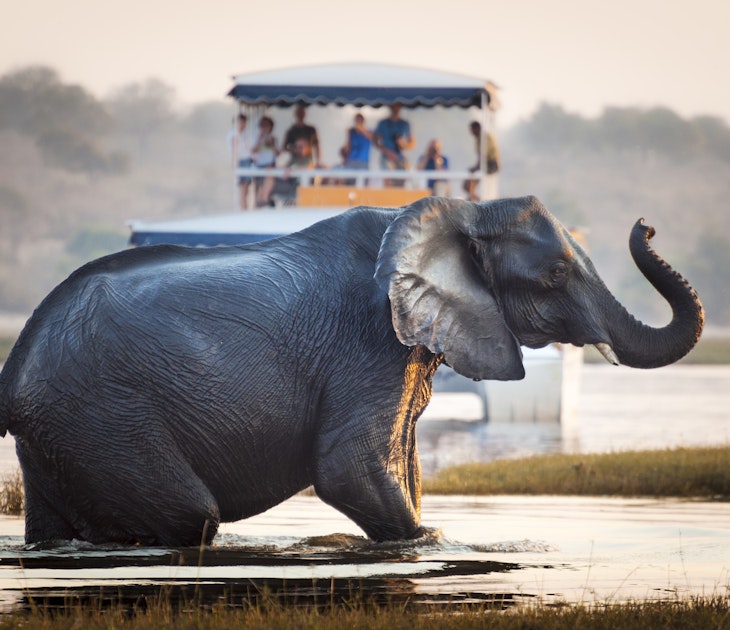
Wildlife & Nature
Feb 20, 2024 • 17 min read
If you’ve never been to Africa before, you’ve much to look forward to. But choosing where to go on your first safari is quite daunting. Here is our guide.

Jan 30, 2024 • 9 min read

Jan 5, 2024 • 20 min read
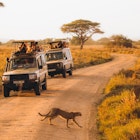
Dec 8, 2023 • 4 min read

Nov 30, 2023 • 9 min read

Nov 29, 2023 • 4 min read
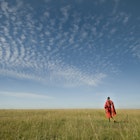
Nov 28, 2023 • 8 min read
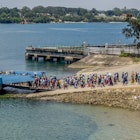
Nov 19, 2023 • 10 min read
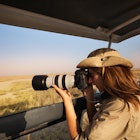
Nov 17, 2023 • 7 min read
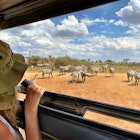
Nov 15, 2023 • 6 min read

An Epic 2 Week Kenya Itinerary: Plan the Trip of a Lifetime
Looking for a Kenya itinerary to help you save time planning your trip? You’ve come to the right place with this 2-week itinerary from a local.
Kenya offers a varied and captivating experience that satisfies every traveller’s desire, from the renowned savannahs of the Maasai Mara to the pristine beaches of the Indian Ocean shoreline. It’s on the top of many people’s bucket list, and for good reason.
In this detailed 2-week Kenya itinerary I’ll outline all the must-do activities which include unforgettable safari adventures, awesome beach destinations as well as an exciting city break in the capital, Nairobi. This itinerary will hopefully make the most of your stay in East Africa’s gem.
Let’s dive right in, shall we? Karibu sana!
This blog post may contain affiliate links, meaning if you book or buy something through one of these links, I may earn a small commission (at no extra cost to you).
What's in this article (Click to view)
How to get to Kenya
Kenya has two main international airports:
- Jomo Kenyatta International Airport in Nairobi (JKIA)
- Moi International Airport in Mombasa
Most people fly into Jomo Kenyatta International Airport as it provides the best connections and also the most flights. Most of the people who fly into Moi International Airport usually decide to start off their Kenya itinerary with a beach holiday. This is fine, however, based on my own personal experiences and also having had conversations with countless travellers, beach destinations are best visited towards the end of the trip as a relaxing “cherry on top” after having completed a comprehensive safari adventure.
When to visit Kenya
Depending on your interests and travel goals, there is no one optimum time to visit Kenya. The two main rainy seasons and two dry seasons that Kenya experiences might affect outdoor activities, wildlife viewing and the overall tourism experience. Generally speaking, the two dry seasons are the ideal periods to travel:
1st dry season (January to March): Between the light rains in November and the heavy rains in April and May, there is a brief dry period. It’s an excellent time to see wildlife because the weather is generally dry and mild at this time. In national parks and reserves, it’s simpler to see animals because the foliage is less dense. Many animals are giving birth during this time, so you could get lucky and view some young creatures coming into the world!
2nd dry season (June to October): This is the long dry season and basically Kenyan “winter” as the locals would describe it. It’s regarded as the ideal time to go on safari and see the wildlife because of the pleasant climate. Furthermore, between July and August, the Maasai Mara experiences the famous wildebeest migration, which draws tourists from all over the world. Although it might get chilly in the mornings and evenings, the weather is normally pleasant and the days don’t get too hot.
Find out what you need to pack for a trip to Kenya with this East Africa packing list .
How to get around Kenya
Short trips around nairobi…..
Uber will definitely be your best bet. It’s the safest and most cost-effective option. The only thing you’ll need is a sim card, which you can either get at the airport or you can visit one of the many shopping malls in Nairobi. Personally I prefer using Safaricom as it has the best connectivity and buying internet bundles are super affordable (1GB for 99 Kshs, which is about US$0.70).
If you feel adventurous, you can also use motorbikes, or locally known as boda bodas. They are in abundance here in Nairobi and quite cheap, however, it’s not the safest option to get around. I’d recommend this only for very short trips, however, for anything longer than a kilometre, Uber will be your best option!
Day trips around Nairobi….
Hiring a private driver is the most practical option. Once you agree a daily rate with them, the driver can pretty much stay with you, wait for you while you’re doing various activities, and then take you back to your hotel/Airbnb. It’s super flexible and although a little pricier than the Uber route, you’ll have less stress and fewer worries about someone running up your tab because you might want to spend a few more hours outside exploring.
Insider tip : Personally, I tend to hire Paul, one of the local drivers who has his own car and has extensive experience taking clients to various destinations. As I run an Airbnb , I work with tourists and explorers on a daily basis and they all have nothing but amazing things to say about him. You can also find him featured in the popular YouTube channel Fernweh Chronicles here . His contact information is in the description of the video.
For your safari trip…
Definitely go with a professional safari company. The guides and drivers who work for these companies are highly knowledgeable, take care of all the practical things like paying park fees, have lots of experience and know exactly how to get you from A to B, while maximising your chance of wildlife encounters and providing a comfortable travel experience. I’ve got more tips on how to pick a safari guide in East Africa .
There are lots of safari companies out there, so a simple Google search will provide you with lots of info. I’ve also outlined below some of the most popular international and local travel companies:
International safari companies
- Micato Safaris
- Wilderness Safaris
Local safari companies
- Bonfire Adventures
- Gamewatchers Safaris
Companies are usually very flexible and you can either create your own custom itinerary or join a group tour. Going solo is usually more expensive, however, you’ll have complete freedom over how you spend your time, can make last-minute changes to your itinerary if you feel like it and are generally more in control of your trip.
2 weeks in Kenya itinerary
So, now that we’ve covered the basics, let’s jump into the 2-week Kenya itinerary!
Summary of itinerary for Kenya trip
- Day 1: Arrive in Nairobi via JKIA
- Day 2: Explore Nairobi
Day 3: Visit to Lake Naivasha
- Day 4: Maasai Mara
- Day 5: Maasai Mara
- Day 6: Maasai Mara
- Day 7: Maasai Mara
- Day 8: Tsavo National Park
- Day 9: Tsavo National Park
- Day 10: Diani Beach
- Day 11: Diani Beach
- Day 12: Diani Beach
Day 13: Lamu
Day 14: nairobi.
Top tip: If you’ve got more time up your sleeve, why not tack on some more time in East Africa? I have an amazing Tanzania itinerary and guide to visiting Uganda to inspire you!
Day 1: Arriving in Nairobi
Once you arrive at JKIA to begin your amazing 2 weeks in Kenya, it’s usually a good idea to take it easy the first day and get used to the city. Day 1 can be used for light exploring, perhaps getting a sim card so that you’ll be well connected for the rest of your stay and will also be a good opportunity to go out for dinner at one of Nairobi’s popular restaurants.
If you arrive in the morning, you can even start exploring right away. I’d recommend visiting the Giraffe Center , one of the most popular things to do in Kenya. It’s quite easy to get there and not very time consuming, so it’s the perfect light activity for your first day in Kenya. Combining it with a late lunch at Boho Eatery would be an amazing way to kick off your Kenya adventure!
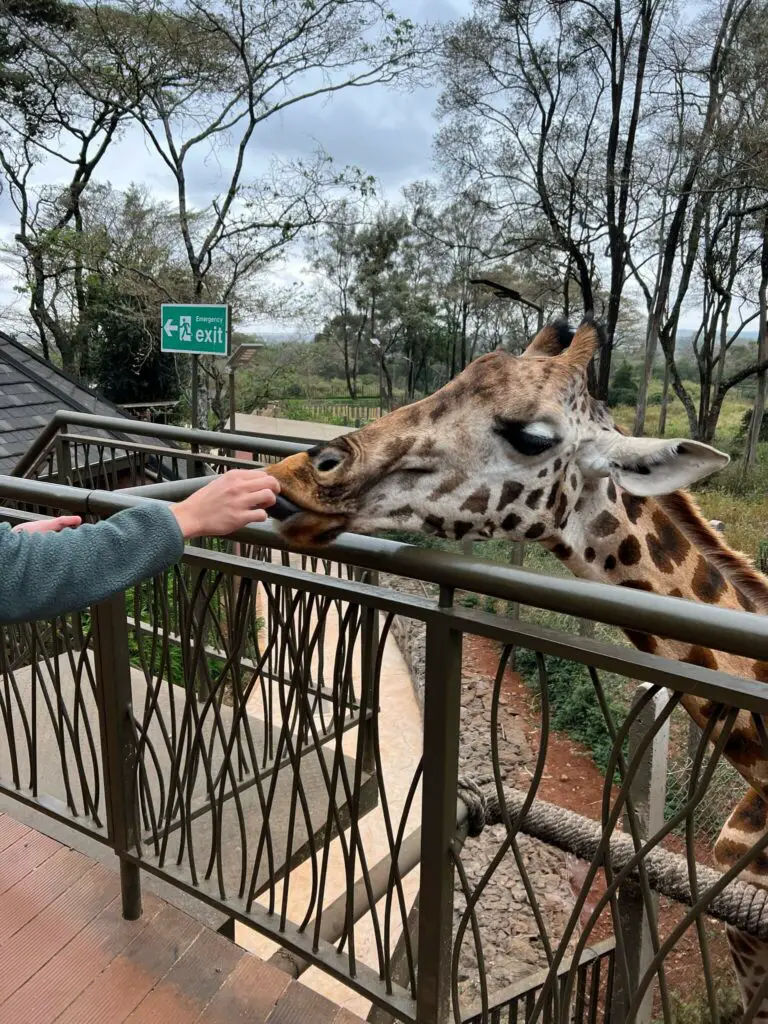
Where to stay in Nairobi
There are plenty of great accommodation options in Nairobi, so it just depends on your budget. I’ve listed some of the most popular stays below:
- Luxury: Tribe Hotel – with stunningly designed rooms, a pool and gym, you’ll be pampered here
- High end: Best Western Westlands – in a great location close to many Nairobi attractions
- Budget: Edaala Comfort Cottage Rooms – lovely B&B in lush gardens, run by a local couple who aim to create a home away from home
Day 2: Exploring the city
This is where the fun begins. If you are interested in the lesser-known, more “real” aspects of Nairobi life, I’d recommend starting this Kenya trip by joining an authentic Nairobi city street tour hosted by former street kids . The social enterprise is called Nai Nami and empowers former street kids to tell their stories about growing up on the streets of Nairobi. Having lived in Nairobi for a long time, I’ve only recently gone on this tour and learned so much!
David Sheldrick Wildlife Trust is another place that should be on your list. It’s a very popular tourist destination where you can watch baby elephants get nursed and taken care of – these are babies whose mothers have been killed by poachers. It’s an amazing sight to see and quite popular!
Pro tip : Make sure to book this well in advance as spots are usually booked out months in advance!
If you’re a history buff then I’d definitely add the Nairobi National Museum to your list. The Nairobi National Museum, one of the most well-known museums in the country, exhibits Kenya’s enormous cultural and natural history. It was established in 1910 and is one of the oldest museums in East Africa.
Another museum you should visit is the Karen Blixen Museum . The museum focuses on the renowned Danish author Karen Blixen and provides information about Karen Blixen’s life as a coffee plantation owner here in Kenya. If you’re a fan of Karen Blixen’s book or the movie Out of Africa (starring Meryl Streep), you should definitely add this to your list of things to do in Nairobi!
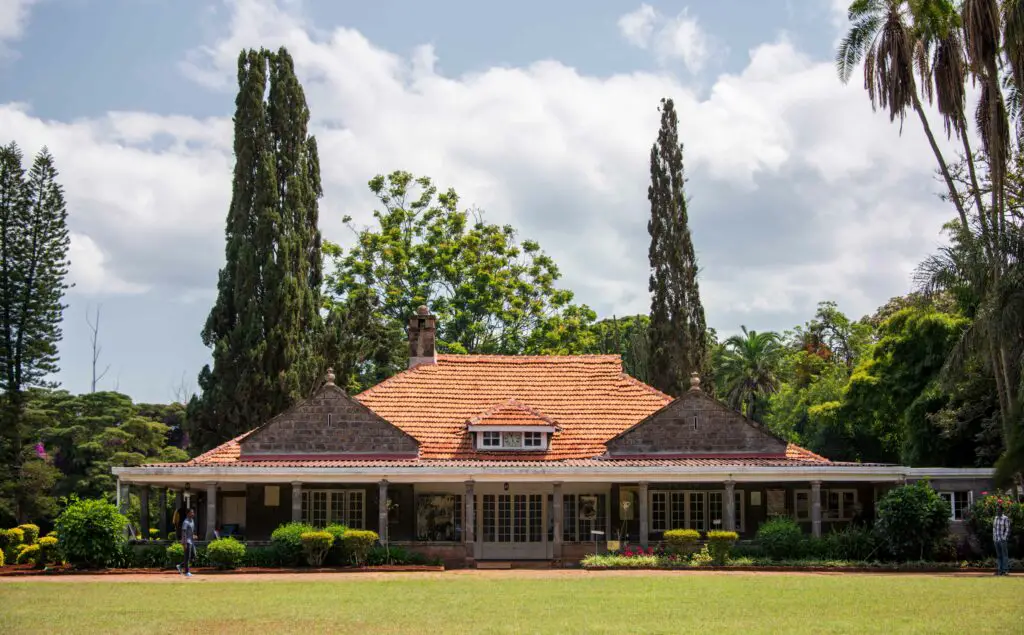
I added Lake Naivasha to this Kenya travel itinerary because it’s a personal favourite. Some like to head straight to the major national parks, however, I find Naivasha to be a little bit underappreciated as you can have an amazing time there and see great wildlife. Here are some of the activities you can do while in Naivasha.
Visit Crescent Island
On the east shore of Lake Naivasha, Crescent Island is a tiny slice of paradise. It’s frequently referred to as “Naivasha’s best-kept secret”. The island is ideal for nature walks, wildlife viewing and bird watching. A close-up view of the island and views of local wild species including hippos, zebras and giraffes can be seen on boat trips on Lake Naivasha. Please be aware that the only way to get to the sanctuary is by boat, which costs about USD$30 roundtrip, but it’s advised to have a look at the latest rates on the sanctuary’s website.
Spend a day hiking at Mount Longonot National Park
If you appreciate hiking as much as I do, then this should be on your list. It takes roughly five hours to complete the well-marked track. The trek to the mountaintop and along the crater’s rim is the park’s main draw. It provides stunning views of neighbouring hills, the Great Rift Valley and Lake Naivasha.
Hell’s Gate National Park
A picture of stunning scenery and riding among wildlife comes to mind when you think of Hell’s Gate. That and so much more can be found in this national park. I went to the park almost every weekend for the three months I lived in Naivasha. I was drawn to it because of its distinctiveness, and writing this piece makes me want to go back. Although a game drive is an option, cycling through the park is highly advised. In ways you can’t imagine, it draws you closer to nature.
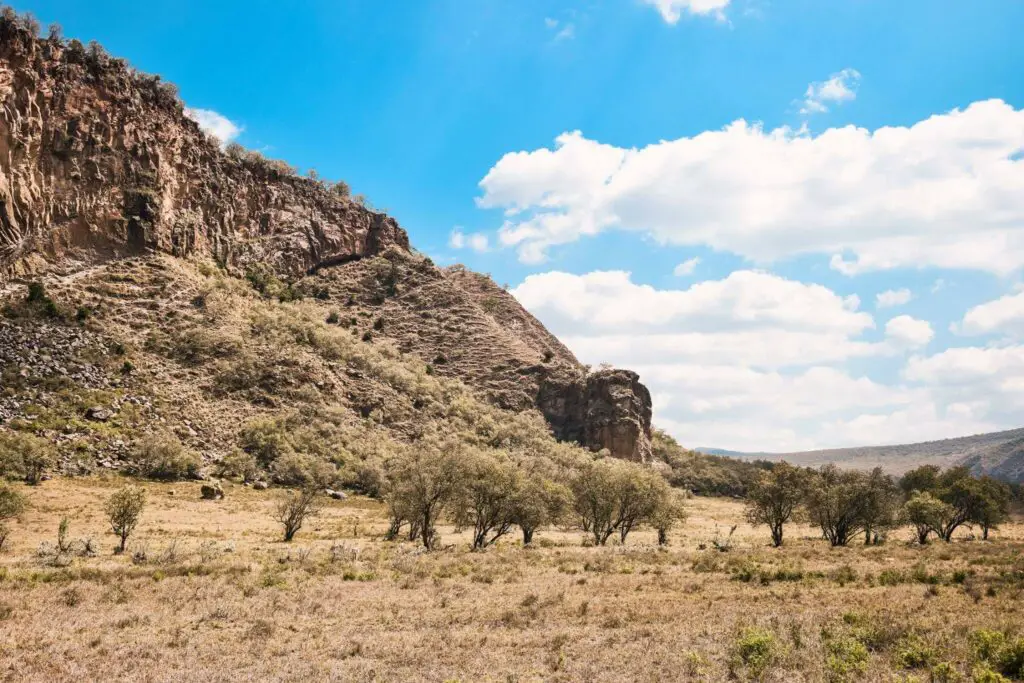
Days 4-7: Head to Maasai Mara
Next on the list is probably the highlight of the entire trip when it comes to wildlife viewing.
One of the most amazing things to do in Kenya due to its diverse range of animals, breathtaking landscapes and cultural value, visiting the famous Maasai Mara national park is an experience you won’t forget.
The Mara is well known for having a wide variety of animals as well as for hosting the famous Great Migration. Millions of wildebeests, zebras and other species traverse the Serengeti-Mara ecosystem in search of new grazing land during the yearly Great Migration, which is a stunning display. It’s a one-of-a-kind chance to see one of the most amazing natural phenomena in the world on game drives through the national park.
It is also home to the “Big Five” (lion, elephant, buffalo, leopard, and rhinoceros) as well as a large number of other species. The only thing Kenya is missing is gorillas, which you can easily visit in Uganda or Rwanda !
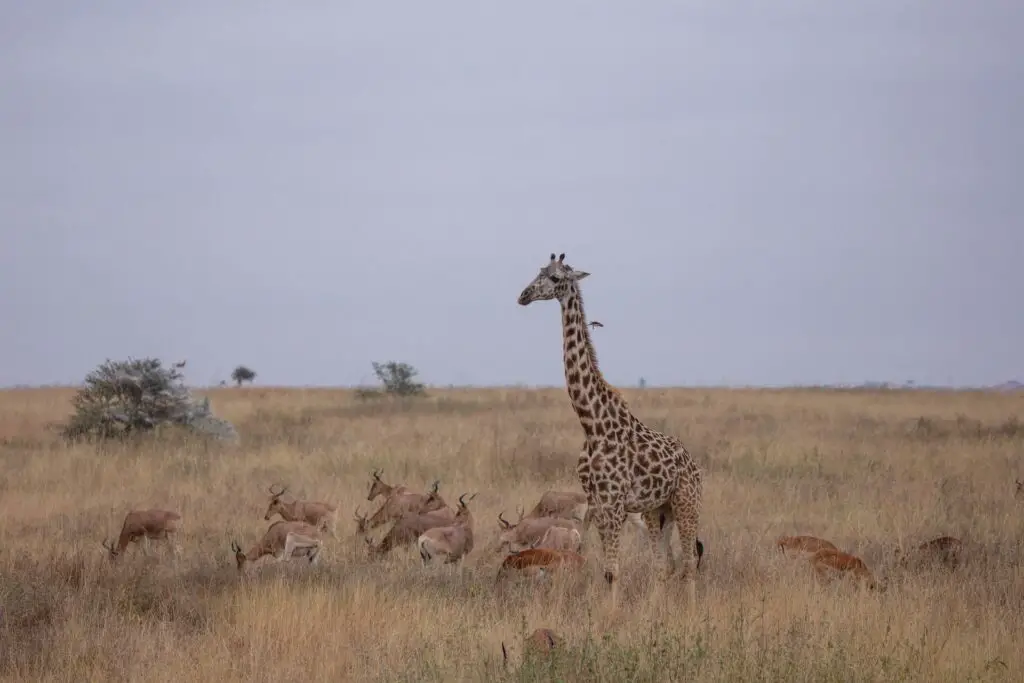
Where to stay near Maasai Mara National Reserve
- andBeyond Kichwa Tembo Tented Camp
- Saruni Mara
- Governors Camp
- Mara Explorer Camp
- Angama Mara
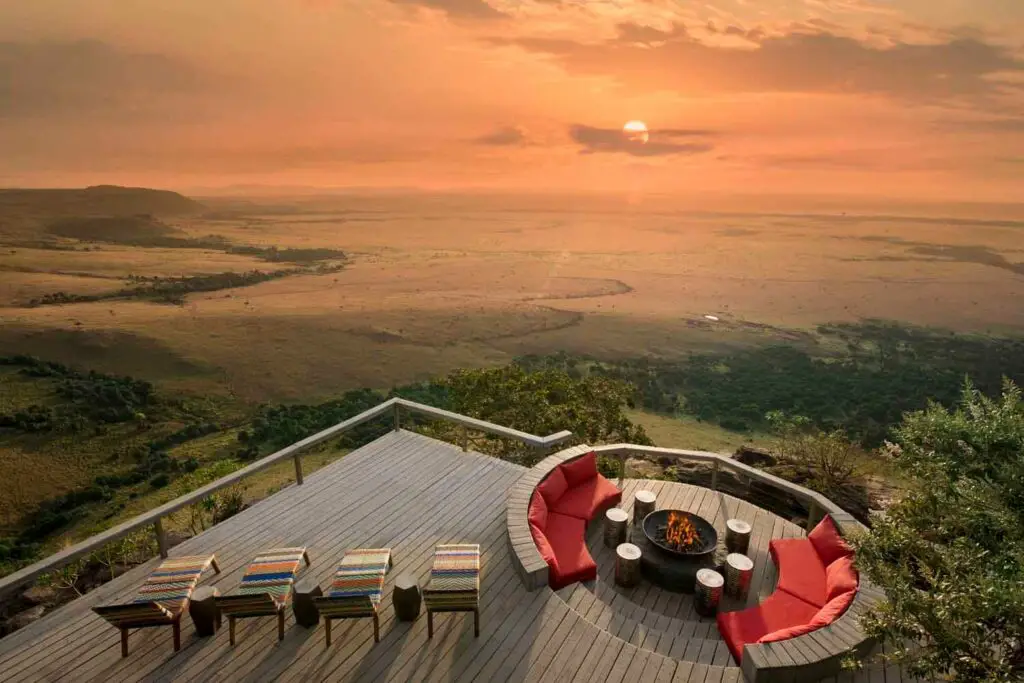
Pro tip: If you’re not a fan of spending many hours in the car and want to save some time, you can also fly to the Keekorok Airstrip. It might be a bit pricey but if you’re on a tight schedule, I’d definitely consider it.
Days 8-9: Tsavo National Park
Tsavo National Park, which is split into East and West, calls with its wild beauty and appeal, making it an alluring location for nature lovers and explorers alike. You can experience a true African safari in the huge stretches of Tsavo East and its rocky terrain, where you can see a wide variety of species against the striking backdrop of the Yatta Plateau.
Tsavo West is home to stunning settings like the Mzima Springs, where clear waters flow amid thick flora and draw a variety of species. The park is also a hotspot for hiking and geological study thanks to the Shetani Lava Flows and the charming Chyulu Hills.
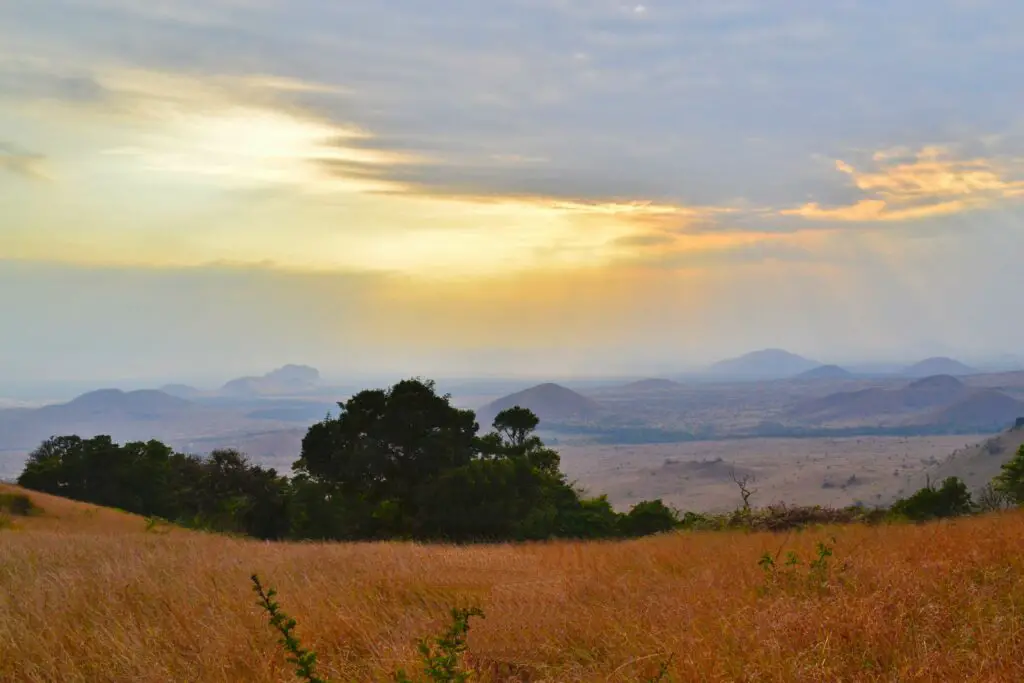
Where to stay near Tsavo National Park
There are various great places to stay during your Tsavo trip. I’ve listed below some of the best-rated camps:
- Finch Hattons Luxury Tented Camp
- Salt Lick Safari Lodge
- Ashnil Safari Camp
Pro tip: Alternatively you can switch Tsavo National Park with Amboseli National Park on this Kenya itinerary, if you prefer. Tsavo lies right in the middle between the coast and Nairobi, hence why it’s a convenient destination in the itinerary. Because Amboseli is a little further away, I’d add an extra night to make sure you get the most out of your Amboseli experience.
Days 10-12: Diani Beach
You can’t have 2 weeks in Kenya without some beach time. After a busy week of wildlife viewing at the Mara and Tsavo, I always recommend visitors to set aside a couple of days for a relaxing time at the beach.
Daini Beach has won various awards in the last couple of years for being the best beach destination in Africa. Due to its pristine beach and abundant marine life, it serves as both a getaway and a hotspot for water activities including snorkelling, scuba diving, kite surfing and deep-sea fishing. I’ve listed below a few recommendations of how you can best spend your time in Diani.
Relax by the white sand beach
Sometimes doing nothing is just as good as doing something, especially if you’ve just come back from a week of safari. Diani is the best spot to just sit by the beach, read a book, listen to some music and just let the day go by.
Go scuba diving/snorkelling
If you are into some adventure, then I’d definitely recommend scuba diving in Diani Beach. I obtained my PADI Open Water Diver certification earlier in the year and had an absolute blast doing it. The place I’d recommend is Diving the Crab . Their instructors are super professional and they always have the most-up-to date equipment at hand.
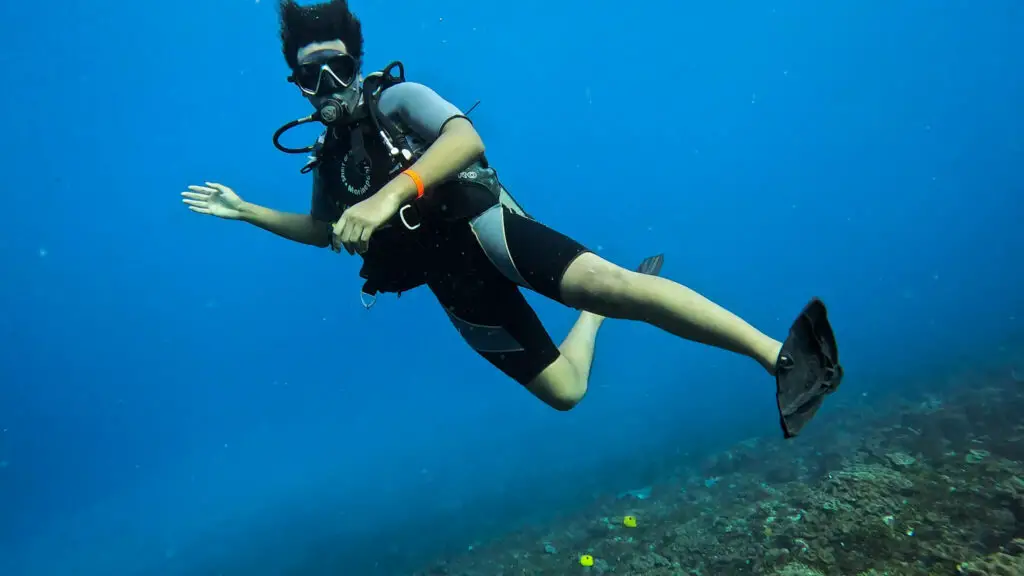
Have lunch at The Salty Squid
The Salty Squid is a popular beach restaurant and personally my go-to place when in Diani. Their food is delicious and they also have great outdoor seating right by the beach where you can spend a day working and enjoying the views of the ocean. Their wifi speed is quite good too!
Have dinner in an actual cave
Ali Barbours Cave Restaurant is a must-do when in Diani. The setting is quite unique as you’re having dinner in an actual cave. The ambience is quite nice and romantic which makes it the perfect place to go for dinners, especially if you are travelling with your significant other.
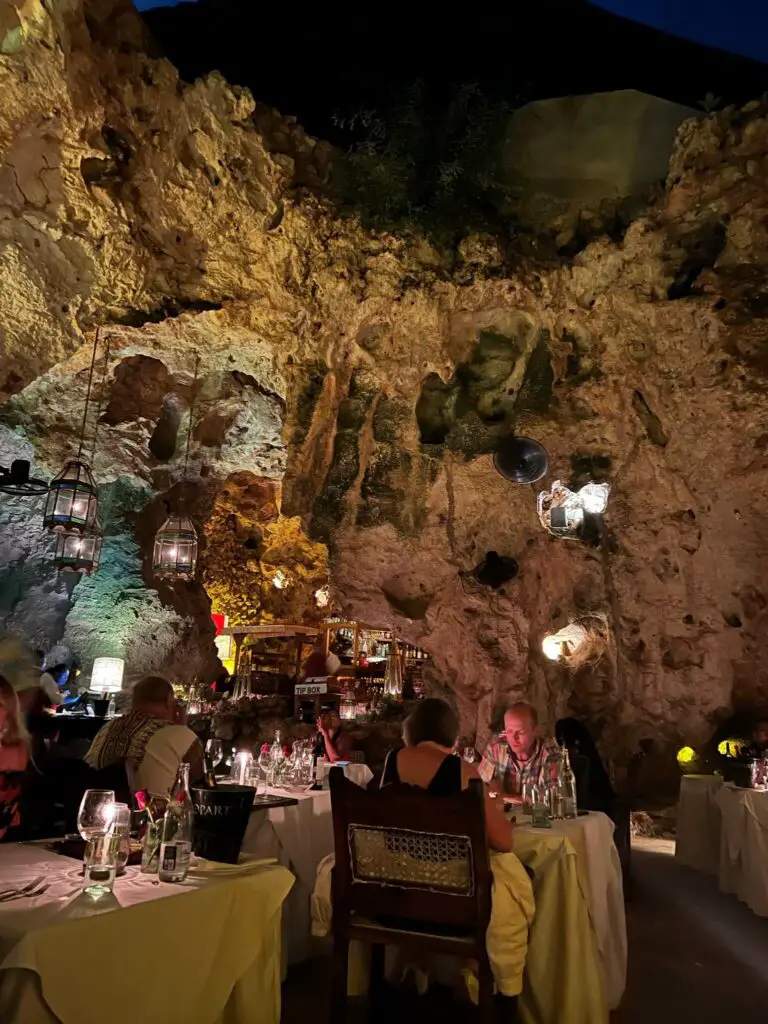
Where to stay in Diani Beach
Diani offers a wide range of accommodation options such as luxury resorts, boutique hotels and beachfront cottages. When I go, I usually stay at self-catering accommodation due to the flexibility it provides.
Places I would recommend are:
- Amani Luxury Apartments : Spacious self-catering apartments which are actually quite affordable. Due to its popularity it’s wise to book early, especially if you’re planning to visit during the high season.
- Swahili Beach : High-end luxury resort with excellent facilities.
- Diamond Leisure Beach and Golf Resort : If you’re into golfing, then this is the best place to stay. Not as pricey as Swahili Beach but still quite luxurious with excellent facilities.
Lamu is a lovely island off the coast of Kenya where ancient traditions and stunning nature combine to create an exceptional vacation destination. Lamu is a place where time seems to have stopped in the midst of stunning natural scenery. The lengthy Swahili cultural past is preserved there.
This East African treasure, with its beautiful beaches, magnificent architecture, and courteous hospitality, is for anyone looking for a real and immersive Swahili experience.
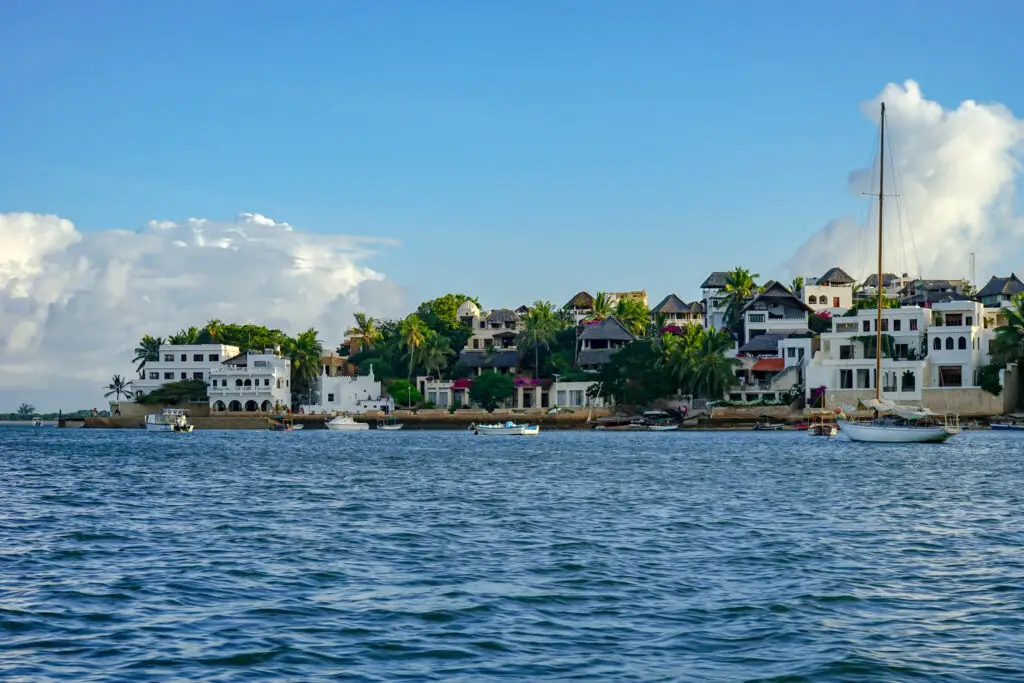
There’s no shortage of things to do in Lamu to fill the last few days of your Kenya itinerary.
However, there are two things everyone NEEDS to do when in Lamu:
Visit the Lamu Museum
One thing I’d definitely recommend is to visit the Lamu Museum. The museum houses a collection of the island’s extensive history, cultural legacy and maritime customs. It’s set in a gorgeously restored Swahili structure that displays the unique architectural design of the island.
Take a dhow ride (traditional Swahili sailboat)
The other must-do in Lamu is to take a dhow ride around the Lamu archipelago. There are various tour operators who offer such rides, which are quite amazing! You’ll set sail early in the morning and spend a couple of hours on a dhow taking in all the beauty that Lamu has to offer. The people working on the boat will also prepare fresh seafood, which is absolutely delicious! This is a must do activity for anyone visiting Lamu.
I would usually do the dhow ride early in the morning so that you can catch your flight back to Nairobi late in the afternoon. To save time, you’ll be able to also take your luggage with you so that you don’t have to go back to the hotel.
Pro tip: Make sure to let the dhow operator know when you have to be at the airport so that they time their ride in accordance to the tide. The last time I was there I almost missed my flight because we mistimed our schedule and had to wait until the tide was high enough to reach the part of the island where the airport is located.
Where to stay in Lamu
- Lamu House : Small boutique hotel in the heart of Lamu town
- The Majlis Resort : A luxury beach hotel, located on Manda Island in the Lamu archipelago, where you have panoramic views of Lamu Island and the Ras Kitau beach
- Various Airbnbs: Lamu is also home to various great Airbnbs . You can either stay in Lamu town, or in the more secluded Shela beach which is only a short boat ride away from the main town.
This is the last leg of the 14 day Kenya itinerary. It’s usually most practical to return to Nairobi as Jomo Kenyatta airport has the best international flight connections.
If your flight home is late at night, make sure to leave Lamu on the morning flight. Domestic flights can sometimes be unpredictable (including unexpected delays) so make sure to give yourself enough time between the Lamu to Nairobi flight and your flight back home.
Practical information
Kenya visa requirements.
An Electronic Travel Authorization (ETA) is required to enter Kenya for tourism-related purposes. By completing a very easy online eVisa application, applicants can get a Kenya Electronic Travel Visa. Kenya’s ETA is good for either 90 or 30 days, depending on the application type. In two to three days, applicants might receive an approved Kenya ETA. Passports must be valid for at least six months from the date of entry.
Before applying, please review the list of nations eligible for Kenya ETA.
Is Kenya safe?
I’ve been living in Kenya on and off since 2009 and believe it’s quite safe. When going on safari I don’t think there is anything to worry about when it comes to safety. The camps, their guards and drivers are all very professional and know the dos and don’ts when viewing wildlife. Therefore it’s always good to listen when they give instructions on how to behave during a safari and during a wildlife encounter.
When exploring Nairobi make sure you are always aware of your surroundings. Avoid crowded areas as this is where you will usually encounter pickpockets. Always stay in safe areas of town after dark i.e. I would personally avoid the CBD after dark, but areas such as Westlands, Lavington, Gigiri and Karen are usually very safe.
Political demonstrations do happen from time to time so it’s good to check your country’s government warnings before travelling. Here’s a link to Australia’s advice on travelling to Kenya, as well as the United Kingdom and the United States .
Kenya itinerary: Final thoughts
A trip to Kenya is one of those bucket-list vacations that you’ll never forget. With a magical mix of wildlife, history and natural beauty, I hope this 2 weeks in Kenya itinerary has given you some inspiration to plan and book a trip to this incredible country!
About the author
Sidney is the founder of Discovering Kenya , a Kenyan travel blog that focuses on providing travel guides to anyone interested in visiting Kenya. He is passionate about Kenyan tourism and showcasing Kenya’s natural wonders to the world. In his free time he loves spending time in the ocean either by scuba diving or kitesurfing. Find him on Instagram and Facebook .
Did you find this article helpful? Consider buying me a coffee as a way to say thanks!
Is Kenya on your bucket list?
Related posts
Before you go… you might like these other East Africa travel blogs:
- East Africa Packing List: What to Wear on Safari and Beyond
- A Unique 2-Week Tanzania Itinerary: Adventure, Safaris and Beaches
- A Wildlife-Packed Uganda Itinerary: One Week in the Pearl of Africa
- Gorilla Trekking in Uganda and Rwanda: What You Need to Know
KENYA ITINERARY: PIN IT FOR LATER
Planning your own trip to Kenya? Save this Kenya itinerary to Pinterest for later.
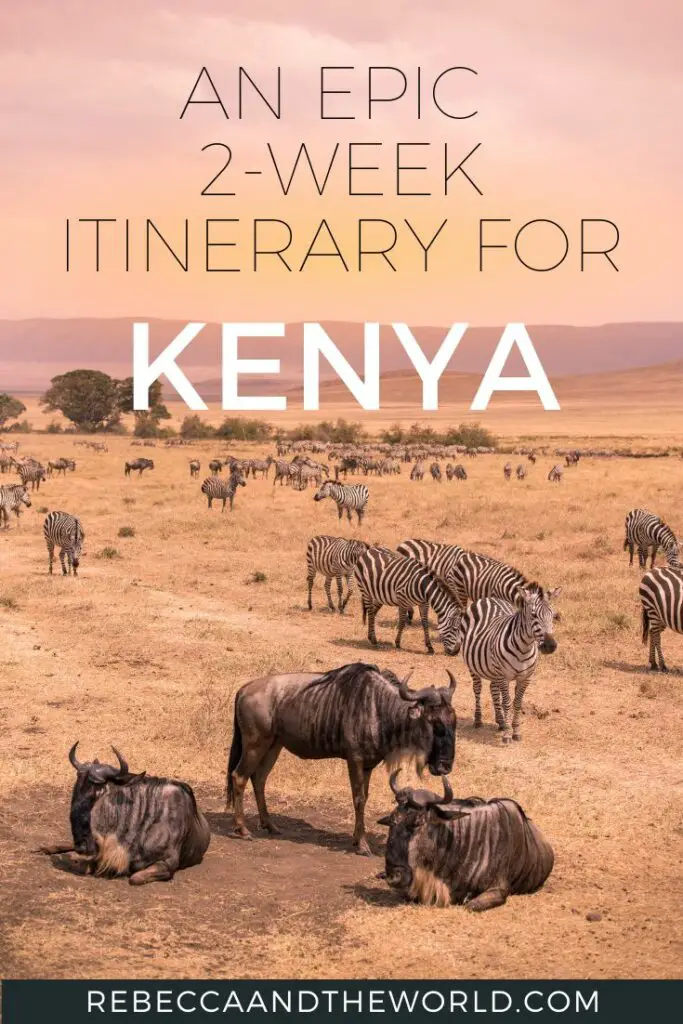
About REBECCA
I'm a travel junkie who started dreaming about seeing the world from a very young age. I've visited more than 40 countries and have a Master of International Sustainable Tourism Management. A former expat, I've lived in Australia, Papua New Guinea, Argentina and the United States. I share travel resources, tips and stories based on my personal experiences, and my goal is to make travel planning just that bit easier.
Leave a Comment Cancel reply
MORE INFORMATION
ABOUT WORK WITH ME CONTACT PUBLISHED WORK
AFFILIATE DISCLOSURE
AS AN AMAZON ASSOCIATE I EARN FROM QUALIFYING PURCHASES
© 2024 REBECCA AND THE WORLD
Privacy Policy
I ACKNOWLEDGE THE WURUNDJERI AND BOON WURRUNG PEOPLE OF THE KULIN NATION AS THE TRADITIONAL OWNERS OF THE LANDS AND WATERWAYS OF THE AREA I LIVE ON. I PAY MY RESPECTS TO ELDERS PAST AND PRESENT AND CELEBRATE THE STORIES, CULTURE AND TRADITIONS OF ALL ABORIGINAL AND TORRES STRAIT ISLANDER PEOPLE ACROSS AUSTRALIA.

- Privacy Overview
- Strictly Necessary Cookies
This website uses cookies so that we can provide you with the best user experience possible. Cookie information is stored in your browser and performs functions such as recognising you when you return to our website and helping our team to understand which sections of the website you find most interesting and useful.
Strictly Necessary Cookie should be enabled at all times so that we can save your preferences for cookie settings.
If you disable this cookie, we will not be able to save your preferences. This means that every time you visit this website you will need to enable or disable cookies again.

- South Korea
- Indonesia (Bali)
- Central Asia
- African Safari
- South Africa
- Itinerary Ideas
How to Plan a Lifetime Trip to Kenya
Kenya will abolish visa requirements for global visitors starting in January 2024, guaranteeing a smooth and expedited entry process.
Kenya, with its thrilling wildlife and warm beaches, is a perfect destination for family vacations, romantic getaways, and bucket list expeditions.
However, planning a trip to Kenya can be overwhelming when it comes to selecting the perfect safari parks and deciding on accommodation. Any wrong decision may ruin your trip. For instance, you wouldn't want to find yourself amidst a swarm of vehicles in a park on a honeymoon tour.
So, we are here to help you plan your Kenya trip, whether you are a family seeking unforgettable adventures, a couple looking for a romantic getaway, or bucket list travelers wanting to scratch that one significant trip off your list.
1. Choose the Best Time to Go
While most guidebooks might tell you the best time to visit Kenya is during its dry season. In reality, the best time depends largely on your personal preferences , whether that's going on a safari, relaxing on a beach vacation, or enjoying a quiet trip. We've experienced Kenya's diverse attractions in different seasons and we provide you with our top recommendations below.
a) For a Thrilling Safari Trip
The best times for a safari trip weather-wise are from June to October and from January to March during the dry season in Kenya. During these periods, you will have the chance to see the animals as they gather around the water sources. Also, you'll encounter the most comfortable weather, with warm days and cool nights.
If you want to see the migration of the wildebeest in Maasai Mara, the best time to travel is from July to September (consider September if you are flexible in travel dates) as July and August typically see the most crowds due to the summer holidays.
b) For a Beach Vacation
Most travelers want to combine their safari experience with a relaxing beach vacation at Kenya's inviting beaches, especially families and couples.
The best times for a beach getaway are from July to October and from January to February. Conveniently, these periods align with the best times for a safari. After busy game-viewing days, retreat to the warm beaches to unwind with your family.
c) For a Quieter Trip
If you want to escape the crowds , we suggest you travel from November to December. This period falls in the short rainy season, which doesn't usually see heavy rainfall but still offers good opportunities to encounter various wildlife. It's also a prime time for visiting Kenya's beaches.
According to our experience, if your travel dates are flexible, we suggest you travel from January to March. The weather during this period is dry and there are fewer tourists compared to the rest of the dry season.
Don't worry if you cannot visit Kenya during the best seasons , as you can have a great safari trip during the rainy season if you make good preparations with a well-planned itinerary. We have traveled during the rainy season. The experience of having no crowds around you when you spot a big cat is exceptional.
2. Choose What to Do and Where to Go
You may know Kenya mainly for its incredible wildlife and warm beaches. There are many other things worth your time if you want to explore the country further, such as engaging with diverse local cultures, going on short hikes, and more. Even within safaris, the options are plentiful.
It can be challenging to choose where to go. We are experts and especially excel at helping families and couples to tailor-make a suitable itinerary by combining their needs with the best of this country. Here, we have detailed the top things to do and where to do them.
a) Embark on a Safari Experience: Which Game Reserve Would Suit You?
You have probably heard of the Maasai Mara National Reserve. However, if you want to have a quiet safari experience, Maasai Mara may be not the best choice for you.
- If you want to have a luxury safari and see the most animals , Maasai Mara National Reserve is the best choice. The park offers private game lodges for couples.
- If you want to have family-friendly game-viewing , go to Maasai Mara, Lake Naivasha, or Tsavo National Park. These parks are easy to access and have children-friendly lodges.
- You may want to drive yourself , in which case Tsavo National Park is a great choice.
- Do you hate having crowds around you? If so, a quieter safari destination , such as Samburu National Reserve or Meru National Park, is a good choice.
Let us know your interests and requirements, and our experts will recommend the reserves that are best suited to your needs.
Insider's tip: For the best wildlife viewing experience, book your safari for the morning when there are more animals out.
b) Relax on a Warm Beach
After a few days of game viewing, we suggest you relax at Kenya's Indian Ocean beaches, which are some of the best in Africa.
Relax on the beach or by the pool with your family. If your family is up for more activity , consider a snorkeling or diving excursion. Kenya's most renowned beaches include Diani, Lamu Island, and Watamu. Let us help you decide which one to pick.
Diani Beach : For a family trip , we recommend you choose Diani Beach. It is the most famous beach in Kenya. The area offers numerous family-friendly activities, such as camel rides, watersports, and snorkeling. There is also a range of accommodations from budget hotels to luxurious resorts.
Lamu Island beaches : Couples may prefer the romantic atmosphere at one of Lamu's beaches. Whether you are traveling for an anniversary or honeymoon , you can enjoy each other's company in this serene and romantic setting. Lamu Island also hosts numerous private villas and luxurious resorts, offering unforgettable accommodation experiences for couples.
Watamu Beach : If you prefer nature and adventure activities , Watamu Beach is a great choice. The nearby Watamu Marine National Park and Reserve is a popular spot for diving and snorkeling. Watamu Beach is also less crowded, offering a peaceful vacation.
c) Going for a Short Hike
If you like nature and adventures , you may add some hiking activities to your itinerary. The ideal route for families and couples in Kenya is through Karura Forest. This spot is a paradise for nature lovers, featuring marshland, a rich diversity of tree species, and abundant birdlife.
d)Explore Local Culture
It is recommended to learn a bit about the local culture and its people in Kenya. We suggest visiting a local village in Masai Mara.
Tell our travel advisors what you want to do in Kenya. They will tailor-make a personal itinerary for you .
3. Decide How Many Days to Stay
For first-time visitors , 2 weeks is an ideal time for a trip to Kenya to discover the highlights of the country. With a 2-week vacation, you could go on a safari trip in Maasai Mara and have a few relaxing days on Kenya's best beaches.
If you are tight on time , a short trip of about 7–8 days is also possible if you concentrate your safari experience on smaller parks near Nairobi, such as Amboseli National Park, Lake Nakuru National Park, or Lake Naivasha to maximize your time. Don't worry about missing out on lots of animals as these parks also boast a great variety of wildlife.
If it is your bucket list trip and you wish to explore Kenya more extensively, you may consider a longer stay of about 3 weeks. This duration would allow for seeing wildlife, exploring Kenyan culture, and hiking in the mountainous regions.
It is also very easy to combine a Kenya trip with a visit to Tanzania for a comprehensive East Africa experience. This enables you to explore diverse landscapes, wildlife, and cultures in one trip. You could, for instance, we can arrange your trip to start with a safari in Kenya's Maasai Mara National Reserve, then cross the border to visit Tanzania's Serengeti National Park and the Ngorongoro Crater.
You might want to contact a travel specialist to meet your requirements , including the length of your vacation, and design a fulfilling tour that's uniquely planned for you.
4. Consider Your Budget
Kenya offers a cost-effective travel experience when compared with destinations in the United States and Europe. Accommodation in Kenya is widely known for its reasonable pricing, offering fantastic value for money.
Hotel costs : For a truly luxurious experience , high-end resorts in Nairobi and beach locations charge US$200 to US$500 per night. However, there are also mid-range hotels available that range from US$150 to US$250 per night.
Safari costs: Most of your budget for a trip to Kenya will likely be allocated to safari experiences. Luxury safari lodges and camps, such as Governors' Camp in Maasai Mara, charge about US$750–1,500 per night. These prices often include meals, game drives, and other activities or services. Lodges and camps in other national parks are a bit cheaper than in Maasai Mara.
Air ticket costs : When planning a trip to Kenya, you should be aware that international flight tickets can represent a significant portion of your budget.
However, in Kenya, domestic flights are sometimes the most convenient way to travel long distances, especially to remote areas or game reserves. A round-trip flight between Nairobi and Mombasa can run from about US$60 to US$150. Flights to Maasai Mara National Reserve can cost significantly more (expect to pay from US$200 to US$400 for a return ticket).
Taking a private tour is the best way to travel across Kenya even though it may be a bit more expensive. You may not want to be stuck with many strangers around you when game viewing. A private tour is often the perfect solution to fully savor a trip to Kenya, making it a particularly good option for families and couples.
Please feel free to contact us and we will be delighted to create a customized itinerary and provide you with a personalized quote.
5. Getting To and Getting Around Kenya
The major gateway to Kenya is the capital of the country: Nairobi. Jomo Kenyatta International Airport (NBO) is the primary point of entry, with flights originating from various locations across America and Europe. For example:
- For travelers from the United States : Delta Air Lines provides a direct flight service from New York's John F. Kennedy International Airport (JFK) to Nairobi's Jomo Kenyatta International Airport (NBO)
- If you're traveling from Europe , British Airways offers a non-stop flight from London Heathrow Airport (LHR) to Jomo Kenyatta International Airport (NBO).
Best Ways to Traveling from Nairobi to Safari Destinations
Upon landing in Nairobi, numerous flights are available from the city's Wilson Airport to most safari destinations. Taking a flight is the most comfortable way to reach your safari destinations. There are several flights each day, so you won't need to worry about missing one. Take Maasai Mara, for example. There are multiple flights per day from Wilson Airport to Maasai Mara National Reserve each day by different providers.
Please note that these routes typically use small, light aircraft with 12 to 50 seats.
You may consider using a private transfer by land , but we don't recommend it. Traveling by land in Kenya is challenging because of the long journey on bumpy and dusty roads. Your comfort and enjoyment of the safari experience are our priorities, and we believe air travel provides the best solution for these long distances.
There are also flights between different Safari destinations. By taking a private tour with us, your guide and private car will transfer you to the airport for your flight to the next destination. It will save you a lot of hassles.
Why Global Highlights (10,000+ reviews & 98.8% 5-star rating)
- Save Your Time:
- Less research, more enjoyment!
- Real-time 1V1 expert planning
- Maximize Your Flexibility:
- Personal local guide and ride
- Explore at your own pace
- Celebrate Your Journeys:
- Specially-crafted family adventures
- Celebrate milestones with style!
Get Inspired with Some Popular Itineraries
More travel ideas and inspiration, sign up to our newsletter.
Be the first to receive exciting updates, exclusive promotions, and valuable travel tips from our team of experts.
Why Global Highlights
Where can we take you today.
- Southeast Asia
- Japan, South Korea
- India, Nepal, Bhutan, and Sri lanka
- Travel Agents
- Loyalty Program
- Privacy Policy
Address: Building 6, Chuangyi Business Park, 70 Qilidian Road, Guilin, Guangxi, 541004, China
The Ultimate Kenya Itinerary for 10 days

Kenya is a beauty to behold and this makes it a top tourist destination in Africa. Aside from its scenic landscapes, stunning beaches and a playground for the most amazing wildlife, the people of Kenya are very welcoming to tourists. Are you planning a trip to Kenya to see the diverse wildlife reserves, the panoramic geography and want to experience their rich culture but only have 10 days to visit Kenya?
Then this is your ultimate Kenya itinerary for 10 days. In a little more than 1 week I will bring you to some off the beaten path tourist destinations in Kenya, but of course also show you the Kenya top sights .
Ready to go on an Africa Safari? Check these Safari Quotes for your next Instagram caption!
Related: 23 Amazing Things To Do In Kenya or 33 Kenya Travel Tips !
you may also like...

Is Kenya safe for tourists?
Compared to most other Africa destinations Kenya is relatively safe for travelers. Of course always use common sense, dont be an ignorant tourists! Always be aware of petty theft, but in general no major incidents happen with tourists in Kenya. Don’t travel alone at night, stay in a group, take licensed taxi’s only, if you want to explore off the beaten path destinations take a guide… some general Kenya travel tips.
Some areas see a higher crime rate, but all the places that I am recommend you to visit on this Kenya itinerary are pretty much safe destinations in Kenya.

How to get around Kenya
Kenya has a great network of domestic flights and they are remarkably reliable for African standards. Kenya travel is pretty well developed and it is easy for tourists to go around.
Although you might be hesitating to drive in Kenya, one of the best ways to explore Kenya is to rent a car for this ultimate 10 day itinerary and do it all yourself. Rentals start already from $30 per day and gas in Kenya costs around $1,20 per Liter. Kenya traffic and road conditions can be challenging, but if you drive with care you will easily get through it.
To rent a car in Kenya you must be older than 23 years and be aware… in Kenya they drive on the left! ;)
Read all about how to get around kenya in my latest article in the link.
Kenya on a budget
Are you thinking about backpacking in Kenya but are not sure if that is possible. Here you go… you have my blessing, do it! There are many budget travelers in Kenya and it is very much possible. There are long distance busses and trains, connecting most of the most beautiful places to visit in Kenya.
Route for 10 days in Kenya
If you are looking to travel to Kenya for 10 days you have a pretty limited amount of time to experience the hugely diverse country with pristine sandy beaches, world-class game parks, reserves, picturesque mountains and lakes. But don’t worry you are still able to see some of the most beautiful places to visit in Kenya on this 10 day itinerary.
Selection is the most important part when planning a trip to Kenya. To make the most out of your trip, you ought to combine several Kenya travel destinations. Do this in such a way that you don’t reroute through Nairobi constantly, Therefore I designed this itinerary for Kenya for you so you don’t end up spending too much time on the road.
Skip the tourist trail, go off the beaten path in Kenya! Most tourists flock to the same old places to visit in Kenya, especially those who only have limited amount of time. Visiting the Masai Mara is definitely a highlight and absolutely amazing, but there is more. Therefore in my Kenya itinerary I suggest you some much more authentic highlights of Kenya as well.
10-day Kenya itinerary map
Here is my ideal 10 day Kenya itinerary to see unique and authentic places. The itinerary makes you go on safari, see various national parks, hike or mountain bike through the mountains, wake up in the forest, explore Nairobi for a day and end up relaxing on pristine beaches!

Day 1: Nairobi
Day 2: Aberdares National Park - Wildlife (B)
Day 3: Mt. Kenya National Park and Samburu National Park - Hiking & Wildlife (C)
Day 4: Mathews Range - Off the beaten path Kenya Destination (D)
Day 5: Marsabit National Park and Lake Turkana - Wildlife (E) + (F)
Day 6: Rift Valley) - Lakes and amazing landscapes (G
Day 7: Maasai Mara - Iconic Kenya Travel Destination (H)
Day 8: Amboseli National Park - Wildlife (I)
Day 9 & 10: Wasini Islands - Amazing Kenya Beaches (J)
Day 1: Nairobi - The Bustling Capital
Most Kenya tours start in Nairobi as this is where almost all tourists start their trip to Kenya. Begin your Kenya itinerary in Nairobi by visiting the Nairobi National Park which was established back in 1946. This for sure is one of the best things to do in Nairobi as here you can see four of the big five against a backdrop of not-so-distant skyscrapers. Breathe in the fresh air with the bustling city in sight just kilometers away and listen to the incredible chirping of the countless birds. Entrance to the Nairobi National Park for tourists is usually $50 for adults and $25 for children.
Other top tourist attractions in Nairobi are The Giraffe Center which was established in the 1970s and is located in the neighboring suburbs of Lang’ata. After tracking down the endangered giraffes, head over to the David Sheldrick Wildlife Trust Elephant Orphanage to spend time with orphaned elephants.
If you want something completely different then opt for one of the guided walking tours in the city itself and discover the craziness and bustling Nairobi by the hand of a local. I would actually suggest you do this at the end of your trip as then the contrast between fantastic landscapes and wonderful nature in one country is huge, but the crazy city life will still be captivating.
Where to stay in Nairobi?
Finding a hotel in Nairobi is pretty simple as there is a wide range of accommodation options available.
If you want to stay near the airport I can recommend you to check in to Crown Plaza Nairobi Airport , pricey but directly at the airport. But you can already find a 5 star hotel for a little over $100 per night so check out the prices of: The Concord or the Mövenpick .
If you have a lower budget I can recommend the Edmor Residence or the Acacia Tree Lodge for around $60 a night.
For solo budget travelers there aren’t that many hostels but a good place to stay in Nairobi is: Khweza Bed & Breakfast has private rooms for $20.
Day 2: Aberdares National Park - Wildlife
At Aberdares National Park it’s time to get started with your Kenya safari. Heading south from the mountainside you get to this beautiful National Park. Unique thing about the Aberdares National Park is that it is located between 2,100 meters (7,000 ft) and 4,250 meters (14,000 ft) above sea level. It has more of an alpine feel with mountains, streams, and moorland.
Kenya travel tip for Aberdares national Park bring some warm clothes it can get really cold here. Even in June it can still drop to freezing level during the night.

There are so many organized activities in Aberdares National Park. You can go lion-tracking, simply cycling around, safaris of course, or just hike through the lush beautiful landscapes. If you love to go camping in Kenya, pick a camping spot from one of the countless options in Aberdares National Park. This will be one of the most rewarding adventures on your Kenya holiday.
Where to stay in Aberdares National Park
Spend the night in the two unusual lodges inside the park: the Ark Lodge which is built in the shape of Noah’s Ark and Treetops where Princess Elizabeth stayed in 1952 on the night her father died and she was crowned queen. Cool fact about Kenya, right?
For budget travelers there are a bunch of homestay’s a little drive away from the park entrance with good ratings. Some lodges I recommend are: Kuniville Guest House ($60), Anka Resort with outdoor pool ($100) and The Great Circle Lodge who has dorms for $15 per night.
If you want to splurge there is also the Fairmont Mount Kenya Safari Club , 5 stars ultra luxurious but also around $400 per night.
Alternative things to do around Aberdares National Park: if you have extra time on your hands, squeeze in a visit to Ol Pejeta Conservancy on Laikipia Plateau. The conservancy is home to the last remaining near-extinct northern white rhino.
Day 3: Mt. Kenya National Park & Samburu National Park - Hiking and Wildlife
The journey from Aberdares National Park to Mt. Kenya won’t take that long. This is your first stop on day 3 before heading further north towards Samburu National Park.
In case you aren’t the active or adventurous traveler, or you just like watching wild animals much more, I recommend you to skip Mt. Kenya National Park and head straight to Samburu National Park.
But before you decide to leave Kenya’s Central Highlands I would recommend you to immerse yourself in some relaxing or intense moutainbiking or hiking through the picturesque trails and valleys of Mt. Kenya National Park. The views are extremely rewarding and there are many adventurous things to do in in Mt. Kenya National Park.

This place is heaven for travelers who are looking to be active on their Kenya vacation. One of the amazing things to do in Mt. Kenya National Park is hiking to Lake Michaelson or Lake Ellis. There are also mountainbike trails around for daredevils.
Of course is climbing to the top of Mt. Kenya also an option. There are actually three peaks, the easiest and most popular peak to climb is Point Lenana, but there are many tours leading you to either Batian peak or Nelion peak.
Are you having too much fun in Mt. Kenya National Park and want to stay there I can totally recommend you to stay at Besotted Farmstay . Im sure their friendliness helped a lot getting a great rating of 9.1 out of 10. The Besotted Farmstay only costs about $60 per night.
Do you decide to travel onwards after your adventures in Mt. Kenya then head north towards Samburu National Park which is about 3 hours away.
Another full game-drive around Samburu National Park awaits you in the late afternoon or even opt for a night safari. This park sits on the Ewaso Nyiro River and offers a different kind of safari game drive because the animals gravitate towards the river. Some animals to look out for include giraffes, elephants, lions, leopards, cheetah, hippos, crocodiles, buffalo, hyenas, Somali ostrich, Greyy’s zebras. Haha pretty much everything I would say. A cool travel tip for Samburu National Park is that here you can spot the Gerenuk, which is a special antelope that can reach up into trees. Also there are more than 365 bird species.

Visiting Samburu National Park is not on many standard Kenya itineraries and therefore a little more off the beaten path. Much less touristy and that is why Im recommending you to go.
Beyond seeing the animals along the river banks, you’ll also see them among the acacia, and river forests. There’s also a high likelihood of spotting the red-robbed Samburu tribesmen grazing their cattle.
Where to stay in Samburu National Park
Inside the national park there are two luxury accommodation options which are both amazing but also expensive: Elephant Bedroom Camp & Ashnil Samburu Camp . A little South you can find the city of Isiolo where you can find much more affordable accommodation like Bomen Hotel for $70. Also check out the boutique Sabache Camp north of Samburu National Park for $150 per night with great ratings.
Day 4: Matthews Range / Lenkiyio Hills - Off the beaten path Kenya travel destination
I am sending you even more off the beaten track on day 4 of your Kenya holiday. Continue the adventure trail leading to the desert frontiers in the Northern areas. But before you get there first make your way north past Samburu National Park and you will get to the Matthews Range.
There is excellent hiking in the Mathews Range and great for those looking for unique things to do in Kenya . There is no phone signal and walking safaris and guided hikes deep into lush green mountain range is what you will be doing here. There is wildlife around and you will for sure hear the sounds of the jungle, but spotting animals is hard in this thick vegetation. Guides can take you up to natural rock pools with rope swings, viewpoints, etc.
There is only one place to stay in Mathews Range: Kitich Forest Camp . This luxury tent camp will surely live up to your off the beaten path adventure in Kenya.
Day 5: Marsabit National Park and Lake Turkana - Wildlife and Lakeside
The road leads further through the barren but beguiling landscape North towards the Ethiopian border. Marsabit is a dusty tribal center and is also home to the Marsabit National Park & Reserve. The main tourist attractions here are extinct volcanic craters, Lake Paradise and of course its wildlife.
Marsabit National Park was once known as the place where you could find the elephants with the longest tusks in the world. Besides elephants you can also spot huge zebra populations and with more than 300 bird species Marsabit National Park is a real bird sanctuary.
Lake Turkana is not a usual Kenya travel destination, but even more so I included this place in the ultimate itinerary. For more secret Kenya travel tips, read my article with 33 things to know before you travel to Kenya .

After visiting Marsabit National Park take the western loop towards the Turkana Lake. From here, the trail leads south again passing all kinds of scenic landscapes and the lovely stopover towns like for example South Horr.
The other side of Turkana Lake has the lovely Eliye Springs where you will find lakeshore beaches. IT is a pristine place and one of the places often found on a list of tourists destinations in Kenya. Unfortunately the drive is too long (more than 10 hours) from South Horr to Eliye Springs and in my opinion therefore not worth it.
You can decide to overnight around South Horr. There are two amazing but also expensive lodges: Desert Rose Kenya and Samburu Lodge . More South towards your next day adventure you will find the much cheaper Ngari Hill Guesthouse & Campsite .
Day 6: The Rift Valley - Lakes, Waterfalls, Rock Formations
This is one of Africa’s most defining geological marvels and there are so many places to visit in the Rift Valley that I have to be included in anyone’s Kenya itinerary. Gorges, hot water springs, craters and waterfalls, you will find it all in Rift Valley.
Mount Longonot is one of Rift Valley’s prettiest vantage points. Afterwards, walk amid the dramatic rock formation and gorges of Hell’s Gate National Park. These two national parks are next to each other and can be visited on the same day. Lake Naivasha is also nearby.
More things to do in Rift Valley are the lakes of Baringo, Bogoria, as well as the Lake Nakuru National park. This national park is located just a stone throw away from the town and is one of Kenya’s compact and excellent parks. It is home to many pink flamingos and hippos. Other species that are found here are buffalos, antelopes, giraffes, zebras, lions, rhinos, and leopards.
Where to stay in Rift Valley
There are plenty accommodation options near Lake Nakuru. A great mid range option with very good reviews is Empolos Hotel Nakuru for $85 per night. The Ziwa Bush Lodge is about $150 per night but has meals included for 2 persons.
If you want to splurge the Enashipai Resort & Spa near Lake Naivasha is totally worth check out.
Day 7: Maasai Mara - Most Iconic Kenya Travel Destination
On your second day here, take a loop down to Kenya’s far southwest into the Maasai Mara National Reserve which is 5 hours away from Nakuru by road. Between July and October, the Mara hosts one of the greatest wildlife concentrations on earth: the annual wildebeest migration. Hundreds of thousands of wildebeest and a few zebras and antelopes arrive from Tanzania in search of fresh grazing.

No need to introduce the Maasai Mara even more or tell you what to do. Though the ultimate thing to do in the Maasai Mara Reserve is a hot air balloon ride. It gives you a magnificent view of the animals and the best opportunity to witness plenty of animal action.
Where to stay in the Maasai Mara
There are plenty Maasai Mara hotels, guesthouses and lodges to chose from. You can find incredibly luxurious lodges that charge close to $1,000 per night. Places for the more ordinary traveler I can recommend are: Oseki Maasai Mara Camp as well as Maji Moto Eco Camp both for around $130 per night.
There is even a Kempinski Olare Mara down here or check out the Olarra Lodge or the Entumoto Main Camp if you feel like a once in a lifetime experience.
Day 8: Amboseli National Park - Wildlife
Catch a glimpse of Africa’s highest mountain peak in Amboseli National Park. Home to lions, cheetahs, elephants, and more than 600 bird species in the shadow of Mount Kilimanjaro.
If at this time you still haven’t gotten enough from the spotting wildlife (this is why you traveled to Kenya, right?) then from Amboseli head southeast and make stops at the Tsavo West National Park which is home to all the big five as well as the outstanding Tsavo East National Park to get closer to elephants.

The driving time directly from Amboseli to Mombasa is 6 hours, from Amboseli to Tsavo is 4 hours while from Tsavo to Mombasa is 2 hours. Therefore Tsavo West National Park is worth another stop on your roadtrip through Kenya.
This day I would actually recommend you to drive to Mombassa already. It will be a little bit of an adventure during to drive in Kenya at night but nothing better than have 2 full days at one of the best Kenya beaches, right?
Day 9 & 10: Wasini Islands - Kenya Beaches
There are so many things to do at the Kenyan coast (check out my things to do in Kenya travel blog) which is very diverse and you are guaranteed to have lots of fun as you experience the beauty there. If you’re keen on diving or snorkeling, visit in October, November, or March for the clearest waters. Local marine includes crabs, starfish, turtles, and a variety of colorful corals. A trip in a traditional dhow should be top on your bucket list.
You can go fishing, surfing, snorkeling, paddle boarding, kite-surfing, or skydiving at Diani Beach. Make sure that you try some of the delicious Swahili food like pilau, biryani, mahamri, and madafu.
Learn everything there is to learn about Mombasa, a city with historical and cultural significance. From there you can either head to the fabulous beaches in Lamu or head over to Watamu to watch some majestic whales. In the Watamu Protected Area, tourists get to watch whales and dolphins jumping out of the water with their calves.
Heading south there’s Tiwi Beach which is a tranquil white-sand paradise that’s quite popular with independent travelers. Just down the road, make another stop at the perfect holiday destination of Diani Beach. Further south near the Tanzanian border are the Wasini Islands which provide a dose of unspoiled coastal life. These Islands offer easy access to the excellent Kisite Marine National Park where you’ll see lots of crocodiles along the mangrove-lined rivers.
A couple more amazing places to visit in Kenya can be found if you head north along the coastal trail. You’ll get to the charming town of Kilifi before pressing on to the Arabuko Sokoke Forest Reserve which is one of the largest remaining tracts of indigenous coastal forest in East Africa with prolific birdlife, forest elephants, and the golden-rumped elephant shrew. Further north is the Gede Ruins which is an ancient Swahili city that dates back to the 13th century. Another historic destination along the coast is Malindi which is one of Kenya’s leading beach destinations, especially for Italian holidaymakers.
From here you can either fly straight back home from Mombasa International Airport or go back to Nairobi to catch your flight from Jomo Kenyatta International Airport.
Best time to travel to Kenya
You have most probably already decided when you will travel to Kenya, but if you are still in doubt… you can visit Kenya year round! Different seasons attract different kind of tourists. The Kenya beaches can be visit year round, but January till March sees the least tourists and is dry season.
If you specifically travel to Kenya for the great migration of the Wildebeest, you want to be there in July and August as that is when they cross the Mara River. For hiking in Kenya I recommend you to plan your Kenya trip in the one of the dry seasons: January till March and July till October.
Check out the average rainfall, sunshine and temperature per month in Kenya on the Weather Atlas website .
Enjoy your trip to Kenya!
Don't forget to check out this blog with ideas for Instagram captions about Safari , in total 45 famous Safari Quotes!
Kenya is a vast country and as mentioned earlier on, there’s so much to do and see there. This means that you need at least a month to cover everything satisfactorily and still you’ll be left wishing you could stay longer. But if time is not on your side I hope that this piece helps you manage your time well and make the most out of it for an unforgettable trip.
If you’re looking to explore the beautiful country on a budget, it’s best that you avoid visiting during the peak season which is dictated by the weather. This slight compromise means cheaper rates for Kenya tours and accommodation.
If you have any more questions please leave me a comment below.
This Kenya travel blog is created with the help of Kim Paffen, one of the Traveltomtom team members . Her outstanding photography skills and multiple trips to Kenya contributed a lot creating this ultimate itinerary for Kenya.
- maasai mara
- Wasini Islands
- Amboseli National Park
- Rift Valley
- Marsabit National Park
- Lake Turkana
- Matthews Range
- Samburu National Park
- Mt. Kenya National Park
- Aberdares National Park

Navigate forward to interact with the calendar and select a date. Press the question mark key to get the keyboard shortcuts for changing dates.
Navigate backward to interact with the calendar and select a date. Press the question mark key to get the keyboard shortcuts for changing dates.
Kenya Trip Planner
Top destinations in kenya.

Top attractions in Kenya

Other notable attractions

Explore nearby places
- Mount Kenya National Park
- Kimende Town
- Aberdare National Park
- Lake Elementaita
- Lake Nakuru National Park
All related maps of Kenya
- Map of Kenya
- Map of Nairobi
- Map of Mount Kenya National Park
- Map of Embakasi
- Map of Kiambu
- Map of Kahawa
- Map of Kikuyu
- Map of Ngong
- Map of Kiserian
- Map of Athi River
- Map of Ruiru
- Map of Limuru
- Map of Kimende Town
- Map of Thika
- Map of Maai Mahiu
- Map of Machakos
- Map of Makuyu
- Map of Kajiado
- Map of Naivasha
- Map of Makutano
- Map of Sagana
- Map of Magadi
- Map of Aberdare National Park
- Map of Nyeri
- Map of Gilgil
- Map of Narok
- Map of Embu
- Map of Kiritiri
- Map of Lake Elementaita
- Map of Naro Moru
- Map of Lake Nakuru National Park
Kenya throughout the year
- Kenya in January
- Kenya in February
- Kenya in March
- Kenya in April
- Kenya in May
- Kenya in June
- Kenya in July
- Kenya in August
- Kenya in September
- Kenya in October
- Kenya in November
- Kenya in December
Q&A about Kenya
Add places from guides with 1 click, collaborate with friends in real time, import flight and hotel reservations, expense tracking and splitting, checklists for anything, get personalized suggestions.
4.9 on App Store, 4.7 on Google Play
- Destinations
Wild Junket

Kenya Travel Guide: All You Need to Know
Last Updated on March 7, 2024
Having been to Kenya 3 times, I’m sharing a detailed Kenya travel guide, from safety to vaccination requirements and how to arrange a safari.
If you’re looking for a diverse travel destination that packs in all the best of Africa, Kenya is probably the best choice. For first-timers, I always recommend Kenya as a place to get an introduction to this spectacular continent because of its diversity.
As one of the best wildlife destinations in the world , Kenya also offers pristine Indian Ocean beaches , world-class mountain trekking, unique tribal culture, and eclectic Swahili heritage. One thing’s for sure: t here’s so much to do in Kenya it’s impossible to see it all in one trip.
Having traveled to Kenya three times, I’ve come to know the diverse African nation pretty well. Here are some of my tips for traveling Kenya based on my first hand experience. I hope they help you plan your Kenya adventure!

Table of Contents
Travel Visa for Kenya
Safety in kenya, travel insurance for kenya, health and vaccination in kenya, hygiene in kenya, when to travel kenya, 2 weeks in kenya , by public transport, travel kenya independently or on guided tour, budget kenya safari, what to know before going on an african safari, best places to go on safari in kenya, what to eat in kenya, money in kenya, cost of travel in kenya, internet/data in kenya, languages in kenya, how to deal with hassles in kenya, final tips on kenya travel, planning your trip to kenya, things to know before traveling to kenya.
Most nationalities including US, UK, EU and Canada citizens need a visa to travel to Kenya. Remember to apply for a Kenya evisa online before your trip. Single-entry visas cost $51 and allow you to stay for 3 months.
Some nationalities (including mine!) do not a need a visa to travel Kenya. These include nationals from Singapore, Malaysia, San Marino, South Africa. Here is the full list.
If you’re planning to travel to a few countries in the region, I recommend getting the East Africa tourist visa , which grants multi-country country access (Rwanda, Uganda & Kenya) and works out much cheaper than buying individual visas for these 3 nations.
Many people are inevitably concerned about safety in Kenya. After all, Nairobi has a high crime rate (the city is nicknamed “Nai-robbery”) and it has experienced several bombings in recent years. What I would advise is to avoid the city centre of Nairobi ( stay in Nairobi National Park instead) and focus more on the national parks and beaches like we usually do.
If you are worried about safety on safari after seeing videos of cheetahs jumping onto safari jeeps, please know that such incidents are extremely rare. Animals usually prefer to keep their distance from human beings and will not attack for no reason.
Beyond the big city, it is generally very safe in the national parks. On our last trip, we traveled Kenya with our 4.5-year-old daughter and found it safe everywhere we went. For those traveling Kenya with kids , the bigger issue is health and hygiene due to malaria risks and food contamination.

It’s important to buy travel insurance, whether you’re traveling Kenya for 2 weeks or a few months. It’ll cover you in case of mishaps or emergencies.
Safety Wing is the most popular travel insurance company for COVID19-coverage. I use their Nomad Insurance plan , which covers COVID-19 as any other illness as long as it was not contracted before your coverage start date. Refer to my travel insurance guide for more details.
It is mandatory to have the yellow fever vaccination to travel to Kenya – airport authorities will ask for your vaccine booklet. Now, the yellow fever shot lasts a lifetime (previously it only lasted 10 years).
Suggested vaccinations for Kenya include meningitis, typhoid, hepatitis A and B, and cholera. Check the CDC website for more details. We don’t usually get these shots for ourselves, but we did get the hep B shot for our daughter.
Most parts of Kenya are malaria infected zones. You can take malaria preventative medication (the most popular being Malarone), but they do have side effects like hallucination. In some countries, you need a prescription for Malarone so be sure to check with your doctor.

Tap water in Kenya is not safe to drink. Bring a Steripen and sterilize tap water or just buy water there. We bought a big 5L drum of water at our first day, and it lasted the whole trip.
Kenya’s infrastructure has improved since 10 years ago (when I first visited) — now you can easily find clean diners at petrol kiosks and in towns serving ugali with meat dishes.
Be careful about eating street food especially in Lamu, as hygiene can be an issue. Remember to pack anti-diarrhea medicine and rehydration pills in case of food poisoning (see my detailed Safari Packing List ).

The best time to travel Kenya is from July to October , which are the best wildlife viewing months. The wildebeest migration usually reaches the Masai Mara in July and remains until October. Note that this is high season and certain parks can get crowded.
Rainy season runs from March to May, during which some lodges close down. During high rainfall, it can be hard to see animals as they won’t need to go in search of water.
November to February are good times to travel in Kenya, as prices are lower and showers don’t last long. On our last trip, we visited Kenya in December and had great weather. But we didn’t see as many animals as I did the last time, because there were torrential rains right before we arrived.

How Long to Travel in Kenya?
There’s a lot to do in Kenya: from wildlife watching in the national parks, to meeting the Maasai people in Maasai Mara, and relaxing on the beach in Diani and learning history in Lamu. I recommend spending at least two weeks in Kenya so you can explore at a comfortable pace. Check out my 2-week Kenya itinerary for a detailed breakdown.
- Days 1 – 3: Nairobi
- Days 3 – 5: Lake Nakuru
- Days 5 – 7: Maasai Mara National Reserve*
- Days 7 – 10: Relax on Diani Beach
- Days 10 – 13: Explore Lamu Island
- Day 14: Fly Home!
How to Get Around Kenya
If you’re tight on time, the best way to get from Nairobi to the coast is on the domestic airline, Kenyan Airways. It is affordable and fast. Return flights from Nairobi to Mombasa are around US$100. Direct flights from Nairobi to Lamu Island are around US$200.
It IS also possible to fly from Nairobi to Maasai Mara and other reserves on Safarilink. But it is expensive, with flights costing around US$350 return per person. Flying cuts down the travel time from 6 hours by road to just 40 minutes.

By Car Rental/Driver
Roads in Kenya aren’t in the best condition and traffic around Nairobi is a nightmare. You would need a 4WD to drive into the national parks. Renting a Toyota Land Cruiser usually costs around $200-300/day.
I wouldn’t advise driving in Kenya on your own. Instead, book a safari lodge/camp and arrange a “road package” through them. The package includes a driver, 2 game drives per day during your stay at the lodge as well as pick-up and drop-off from any hotel in Nairobi.
Most lodges quoted us $150/day for a Toyota van and $250/day for a Land Cruiser safari jeep. We paid for the cheaper option and were fine with it. But for both options, you’ll only get a driver — not a wildlife guide who’s experienced in spotting animals! If you want a wildlife guide, book an all-inclusive safari tour . (More on that in the ‘tour’ section)

For those on a budget, you can also catch a matatu , local minivan, for short distances. It’s a fun ride, and you’ll definitely be entertained by loud African music and squashing in with locals (and maybe a chicken or two!). In smaller towns, you’ll find tuk-tuks and boda bodas (motorbike taxis).
For long distance like Nairobi to Mombasa, you can catch big coaches (buses) from the bus station. There are buses that offer power outlets and WiFi, such as Dreamline .

If it’s your first time in Africa or you’re traveling solo, I recommend booking a guided tour that will take care of all the logistics.
On my first trip to Kenya, I joined this Kenya and Tanzania camping safari with G Adventures and had an awesome time overlanding East Africa with a fun group! I’ve traveled many times with G Adventures (to Brazil, Mongolia, Antarctica and many more) and always had a great time. Another trip worth checking out is this 8-day National Geographic Kenya safari trip .
On my most recent trip to Kenya, my family and I stayed at safari lodges mostly, and organized game drives through each lodge. For me, that was an ideal way to get around as we were traveling Kenya with kids .

Unfortunately for independent travelers, you’ll need to book a tour to go on safari. You can still explore Nairobi and Diani independently. Most budget safari tours depart and return to Nairobi and most of them are 3/4 days.
Note that budget tours are usually camping safari. That means you’ll actually be camping and sleeping in small 2-person tents. They include a driver and cook who prepare simple meals (don’t expect top class food). Here are some recommended budget tours:
- 4-day Lake Nakuru & Maasai Mara tour
- 3-day Amboseli National Park tour
- 2-day Mount Kenya safari
- Lake Naivasha & Hell’s Gate Park day tour
- Ol Pejeta Conservancy & Chimpanzee Sanctuary day tour

If this is your first time on African safari , there are some things you need to know. You need to have patience when it comes to wildlife watching. Animals roam freely and sightings are not always guaranteed. You might also come across predators hunting or feeding on their catch — be warned, it can get graphic.
Game drives usually take place around dawn and sunset, as animals are the most active during these times. That means early wake-up calls at 5am. Because of the game drive schedule, you will have lots of free time during the day. Bring cards or reading materials.
- Masai Mara National Park – Undoubted the most famous national park in Kenya
- Amboseli National Park – Famed for being backdropped by Mount Kilimanjaro and excellent for elephant spotting
- Lake Nakuru – Best place to go for rhinos and flamingoes
- Lake Naivasha – Sip wine and see hippos on sunset cruises
- Hell’s Gate – See bizarre landscapes on bike
- Nairobi National Park – Surprisingly good chances to see rhinos right in the city

The traditional food of Kenya, is as mixed and diverse as its tribes, history and landscapes. Each tribal area has its own specialities, but below are some of the most common Kenyan dishes. If your kids are fussy eaters, they’ll be happy to know that most safari lodges serve western classics like spaghetti and pizzas.
- Ugali — This cornmeal is the main staple of Kenyan food. The texture is similar to that of a dough. It is eaten at every meal (in a similar way you eat rice) and usually with stews and vegetables.
- Irio — Another popular dish in Kenya, this mash peas and potato mix is hearty and heavy. It’s usually eaten with roasted meat (nyama choma).
- Kenyan pilau rice — This is a flavorful spicy rice dish cooked with spices like cumin, cardamon, cinnamon, and cloves.
- Kenyan stew — Kenyans love all kinds of stews: beef stew, goat stew, chicken stew or any other animal stew. The sauce usually has a tomato base and accented with the essential mchuzi mix!
- Nyama Choma — The unofficial national dish of Kenya, nyama choma is roasted meat cooked on the barbecue. Goat and beef are the most common forms of nyama choma, but chicken (kuku choma) and fish (samaki choma) are also valid choices.
- Fried fish — Along the coast, you’ll find fried tilapia fish everywhere, often served with tomato gravy and ugali or rice.

Kenya uses the Kenyan Shilling as its currency (KSh). The current exchange rate is around 1 USD to 110 KSh. You can exchange money in banks or withdraw KSh out of ATMs.
ATM’s are common across Kenya. In most machines both Mastercard and Visa cards are accepted. The maximum you can withdraw from an ATM at any one time is normally 40,000 KSh, although it varies bank to bank and can be as low as 20,000 KSh.
Note: Make sure to bring some cash in USD as you might need a big sum to pay for your safari and ATMs do not give USD.

In general, Kenya is cheap to travel if you’re traveling independently on public transport and hostels. African safari in Kenya are generally expensive, but keep in mind that all your meals, lodging and game drives are included. Accommodation on the coast is cheaper, at around $60 per night for a midrange hotel and $100 and above for an upscale hotel.
The cheapest 4-day budget camping safari you can find in Kenya is $450 per person. The average nightly rate for a budget safari lodge is $100 and midrange safari lodge is $250. We spent around $150/day on transport provided by the lodges (that includes game drives).

Getting a SIM card in Kenya is simple these days. Safaricom is the largest telecom operator in Kenya and said to have the best coverage. Safaricom offers a weekly plan for data: 1GB of data for 250 KES ($2.50).
Airtel is the second largest provider, with 4G/LTE service in Kenya’s major cities. Its plans are cheaper than Safaricom. Both Airtel and Safaricom have outlets at the arrivals hall in Jomo Kenyetta airport.
To get a SIM card, all you need to do to take your passport along to any shop. But make sure your data works before you leave the shop.

The official languages in Kenya are Swahili and English , with many locals speaking both fluently. You won’t find any problems communicating with people in most parts of the country, especially in the tourist hotspots.
Swahili is a super fun language and it’s actually quite easy to learn. I picked up quite a lot of it while living in Tanzania for 2 months. Here are some basic Swahili words you should learn before your trip to Kenya. Locals will definitely appreciate it.
- Hello: Jambo/ Hujambo!
- How are you?: Habari gani?
- Fine (response): Nzuri.
- Goodbye: Kwa heri.
- Nice to meet you: Nafurahi kukuona.
- Goodnight: Lala salama.

While traveling in Kenya, it is common to encounter tourist touts. Rest stops along the tourist trails are often lined with curio shops selling jewelry or wooden craftwork. The vendors can be quite pushy and persistent.
Even if you stay in your car, they will approach you and try to sell you stuff through the window. Just be polite and say no firmly. Some people will not give up, so be patient and keep calm.
In Nairobi and some hotspots, strangers might approach you and try to be friends. Some will bestow some kind of gift to you, and expect some kind of payment in return. It’s OK to talk to these people if they’re not actively hassling you, but you should ignore any requests for money.

- If it’s your first time on the African continent, manage your expectations. Infrastructure in Kenya has improved a lot since the first time I was there 10 years ago, but there are still certain things you’ll need to get used to, like hole-in-the-ground toilets and insects in the tents. It’s all part of the adventure!
- Many curio shops along the highways have sparkling clean toilets (that’s how they try to draw in the tourists), and drivers tend to bring you here. You’re not obliged to buy anything if you don’t want to.
- Lastly, roads in Kenya are not the best. Prepare for bumpy rides and long, dusty drives. Also bring dramamine for motion sickness.
- Never travel major intercity roads at night due to the heightened risk of road accidents.
- To avoid being a target of petty crime, do not carry anything valuable with you when you’re walking around cities. That includes your laptop, big SLR camera, and expensive jewelry.
- Pack a sense of adventure and a dollop of patience as things move slowly in Kenya. Adopt the ‘hakuna matata” (no troubles) attitude and everything is going to be alright.

Are you looking for more info on travel to Kenya? I have written quite a few articles about Kenya and you’ll find the links below. I hope they will help you plan your trip and make the most out of your Kenya adventure.
Leave a comment below if you have any questions about Kenya!
- The Ultimate 2-Week Kenya Itinerary
- Kenya with Kids: Kenya Family Safari Guide
- The Annual Migration at Maasai Mara
- Meeting the Maasai People at Maasai Mara
- Staying at the Emakoko in Nairobi National Park
Inspired? Pin it!

Nellie Huang
Nellie Huang is the founder of WildJunket. Originally from Singapore, Nellie has traveled to over 150 countries across 7 continents. She is a book author and Lonely Planet guidebook writer. As an adventure travel blogger, she has a special interest in unusual destinations and deep experiences. Follow her travels on her Facebook and Instagram .
Leave a Comment Cancel Comment
Save my name, email, and website in this browser for the next time I comment.
This site uses Akismet to reduce spam. Learn how your comment data is processed .
You May Also Like
Spirits and spells: voodoo culture in benin, video: paragliding off lion’s head in cape town, staying at maliba lodge in lesotho.
Protect Your Trip »
A first-timer's guide to planning a safari in kenya.
Experts share practical tips for preparing for a successful safari.
A First-Timer's Guide to Planning a Safari in Kenya

Getty Images
Before you begin your once-in-a-lifetime African adventure, make sure you talk to your physician about recommended travel vaccines and pack strategically with plenty of layers.
You've been dreaming about going on safari in Kenya ever since the credits rolled in "Out of Africa," and now you're ready to embark on the trip of your dreams . To make sure you get the most out of the country's spectacular wildlife and jaw-dropping landscapes, here is the information you'll need, so that the only surprises you'll encounter are ones that you'll love.
An Average Day on Safari
While every accommodation is unique, most camps follow a similar schedule. Led by a wildlife guide, you'll go on at least two game drives per day with other guests for three to four hours per ride. Along the way, you'll stop at picturesque locations to stretch your legs, grab a snack and revel in incredible scenery. In the middle of the day, when predators and other species are hiding in the shade, you'll be in camp relaxing. Expect to take your meals at camp, though dining in the wild is also common. At night, you'll cozy up to a warm fire and mingle with the other guests to share your day's adventures before letting the sounds of the bush serenade you to sleep.

Susan Portnoy
(Susan Portnoy)
Activities and Extra Costs
Game drives are the crux of most safaris, but there are plenty of other activities for you to enjoy, from guided walks and visits to tribal villages to hot air balloon rides over the Masai Mara or camel safaris in the Northern Frontier. Some activities are included in your daily rate, but "it's always a good idea to know ahead of time what's included in your stay, as many options may come with an additional price tag," says Linda Friedman, CEO of Custom Safaris. Also, keep in mind that you may be charged for park entry fees, laundry, premium liquors and other amenities.
Wildlife-Viewing Opportunities
"Kenya is known not only for its massive concentrations of game but also for its vast open plains. You can spot and track wildlife from a fair distance and there is almost always something to see and some sort of interaction between species," says Andrew Beck, a professional wildlife photographer and a co-founder of Wild Eye, a photographic safari company. There are also certain areas that contain larger concentrations of specific species. If you love elephants, consider Amboseli where herds can reach 100 members or more. And from August to October, the Masai Mara plays host to millions of wildebeest during the Migration, while species like the Grevy Zebra, Somali Ostrich, reticulated giraffe and the gerenuk can only be found in the north.
Guides know all about animal behavior and the area in which your camp is located, as well as the location of recent sightings, dens and kills. Still, they can't make animals appear on cue, so stay open to what the day brings. In the bush, the world can change on a dime; with a little patience, you'll have the time of your life.

Family
Taking your child on safari can be one of the best ways to instill a lifelong love of wildlife and respect for the environment, and in the last few years, more companies are enticing families with larger tents or villas and special programs designed with families in mind. As Friedman points out, it's important to ask up front if children are allowed or if there is a minimum age requirement. If your child is very young, you may be required to reserve a private vehicle.
Photography
A DSLR camera and longer lenses are best for wildlife photography , but if that's not your objective, Beck suggests getting a point-and-shoot with the maximum optical zoom. "Don't even bother looking at the digital zoom feature as this is essentially a crop of the image," he says. It's also a smart idea to bring plenty of memory cards. There is nothing worse than having to delete images from your camera on the fly to make room for your next shot.
When it comes to the bush, safety at any lodging is top priority. Upon arrival, you'll be given all the dos and don'ts and it's important to follow directions. While safaris are safe, Friedman cautions, "These are wild animals, not kittens."

Preparing for Your Safari
Paperwork You'll need a passport that is valid for at least six months prior to your arrival. Your passport must contain a minimum of two blank pages for stamps. You'll also need a $50 visa . You can apply for a visa online at Evisa.go.ke or you can wait until you arrive at the airport in Kenya.
Vaccinations
According to the Centers for Disease Control, there are no mandatory vaccinations for travel to Kenya though you may be required to get a yellow fever shot if your travels take you through endemic zones prior to your arrival. The agency also advocates being up to date on immunizations for Hepatitis A and B, typhoid, yellow fever, rabies and meningitis. Additionally, you may want to consider pills for malaria. Make sure to speak to your physician about your travel plans to determine what you need.
Pack enough light casual attire for a long weekend and take advantage of the same-day laundry service (weather permitting) that the majority of camps provide. It's chilly in the morning and evening, but hot in the afternoon, so dress in layers. A good sunscreen is also a must-have, in addition to a wide brim hat and a good pair of polarized sunglasses. And flip-flops are fine for the jeep, but also pack a pair of comfortable sneakers.
Small commuter planes are the main mode of transport into the bush and all the domestic carriers are sticklers about baggage restrictions. Bags must be soft, no longer than 26 inches and wheel-free, and the total luggage weight per person cannot exceed 15 kilograms (33 pounds), including your carry-on. If you go over the limit, your best-case scenario would be paying a fee, but in a worst-case scenario, you may have to buy a separate ticket for your baggage or wait until there is a plane with space available.
Money Matters
Kenya shillings is the local currency. You can pick up shillings at the airport upon arrival, but U.S. dollars are also widely accepted. Keep in mind, accommodations will accept major credit cards such as Visa or MasterCard (American Express is not as widely accepted) for amenities or gift shop purchases, but you should bring cash for gratuity as well as extras, such as cultural visits to local villages or souvenirs like handmade jewelry or other trinkets from local artisans.
Tips are not mandatory, but they are customary. Your guide should be at the top of your list, and according to Friedman, you should plan to pay $15-25 per person per day. If you have a large family, less per person is acceptable. If you want to distribute gratuity to all staff members, most camps have a staff box where guests can leave a gratuity of $5-10 per person per day. When in doubt, ask a manager for advice, Friedman says.
Tags: Travel , Kenya , Travel Tips
About En Route
Practical advice on the art of traveling smarter with tips, tricks and intel from En Route's panel of experts.
Contributors have experience in areas ranging from family travel, adventure travel, experiential travel and budget travel to hotels, cruises and travel rewards and include Amy Whitley , Claire Volkman , Holly Johnson , Marsha Dubrow , Lyn Mettler , Sery Kim , Kyle McCarthy , Erica Lamberg , Jess Moss , Sheryl Nance-Nash , Sherry Laskin , Katie Jackson , Erin Gifford , Roger Sands , Steve Larese , Gwen Pratesi , Erin Block , Dave Parfitt , Kacey Mya , Kimberly Wilson , Susan Portnoy , Donna Tabbert Long and Kitty Bean Yancey .
Edited by Liz Weiss .
If you make a purchase from our site, we may earn a commission. This does not affect the quality or independence of our editorial content.
You May Also Like
The best florence tours.
John Rodwan April 25, 2024

How Much Does a Cruise Cost?
Gwen Pratesi April 24, 2024

The Best Whale Watching in Cape Cod
Lyn Mettler April 24, 2024

Best Whale Watching Tours in Maine
Marisa Méndez April 23, 2024

The Best Wineries in Napa Valley
April 23, 2024

The Best East Coast Beaches
April 19, 2024

The Best Carry-on Luggage
Erin Evans , Rachael Hood , Catriona Kendall , Amanda Norcross and Leilani Osmundson April 17, 2024

The Best Luggage Brands
Rachael Hood April 17, 2024

The Best Hard-sided Luggage Picks

The Best Yellowstone National Park Tours
John Rodwan April 17, 2024


A Magical Kenya Itinerary – Safaris, Cities & Beaches
Kenya is an incredible and diverse country, perfect for an introduction to African travel.
Kenya is one of those countries that really has it all – great safaris, excellent beaches, mountains, traditional culture and modern cities.
My ideal Kenya itinerary would involve some time on safari at the beginning of the trip, as well as time at the beach at the end of the trip. The options are endless, so here are a few ideas to get you started planning your own Kenya trip.
Please Note: Some of the links in this post are affiliate links, which will earn me a small commission at no extra cost to you. Affiliate sales help with the running costs of this site, so thank you for your support!
Table of Contents
A Magical Kenya Itinerary (Plus Things To See & Do)
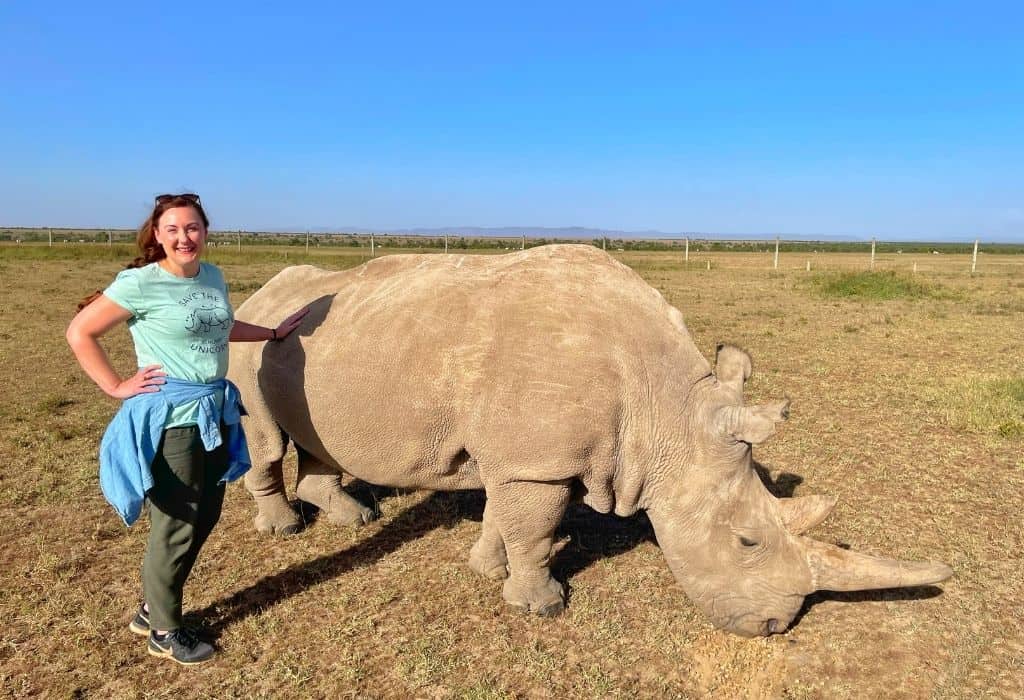
Here are a few ideas for what your itinerary could look like for 1, 2 and 3-week trips. I’ve written about all the destinations in more detail below so that you can build your own itinerary. You might want a more safari-focused Kenya itinerary, or you could do a little bit of safari and lots of beaches! The options are endless!
Kenya Itinerary – 1 Week
- Day 1 – 2: Nairobi
- Day 3 – 5: The Masai Mara
- Day 6 – 7: Diani Beach, Kilifi, Mombasa or Lamu
Kenya Itinerary – 2 Weeks ( Option A)
- Day 3 – 6: The Masai Mara
- Day 7 – 8: Amboseli National Park
- Day 9 – 10: Mombasa or Diani Beach
- Day 11 – 12: Kilifi
- Day 13 – 14: Lamu

Kenya Itinerary – 2 Weeks ( Option B)
This is the itinerary for my Rock My Kenya Adventure – check it out here.
- Day 1: Nairobi
- Day 2 – 5: Samburu National Reserve
- Day 6 – 7: Ol Pejeta
- Day 8: Lake Nakuru
- Day 9 – 11: Masai Mara
- Day 12 – 14: Lamu
Kenya Itinerary – 3 Weeks
- Day 12 – 13: Amboseli National Park
- Day 14 – 15: Tsavo National Park
- Day 16: Mombasa
- Day 17 – 18: Watamu or Malindi
- Day 19 – 21: Lamu Island
Other destinations you could add to your itinerary if you have more time include:
- Lake Turkana: 5 – 7 Days
- Mount Kenya National Park: 4 – 6 Days
- Lake Naivasha & Hell’s Gate National Park: 2 – 3 Days
Kenya Itinerary Map
Here’s a little visual guide to the places I mention above.
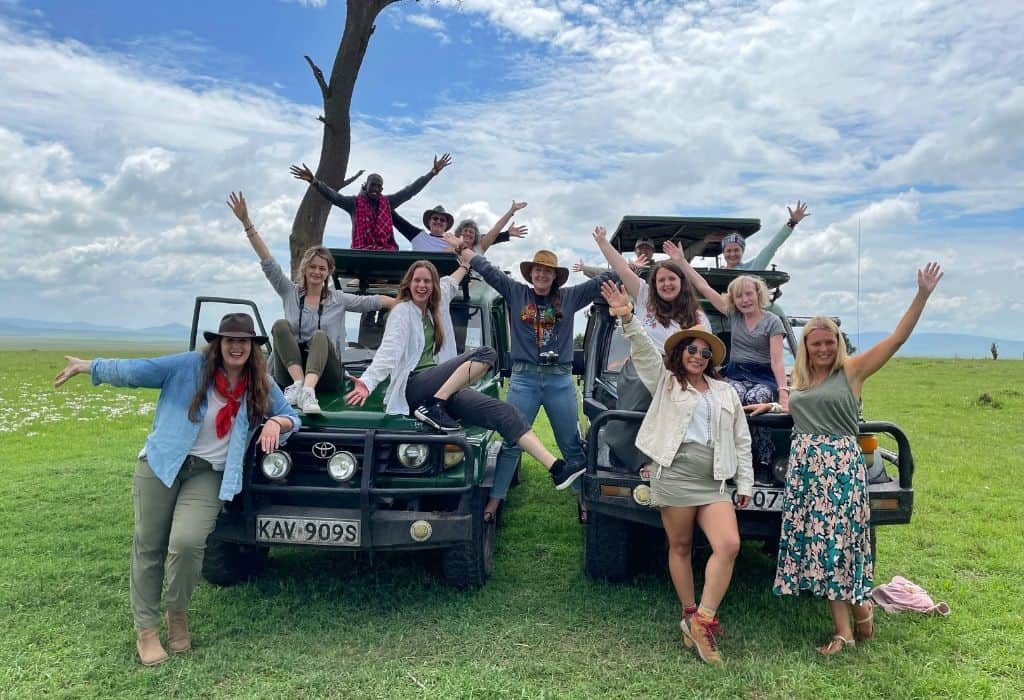
How to Get Around Kenya
One thing you need to consider when planning your Kenya itinerary is how you will get around.
Kenya is a relatively easy country to travel by public transport. There are good coaches between major cities, smaller minibuses known as matatus that go everywhere and even an excellent train network between Nairobi and Mombasa. There are also lots of taxis and in Nairobi, Uber is a popular way to get around.
However, if you are short on time, sometimes taking a Kenya group tour is a good option, saving you time (most importantly) and sometimes money, and you won’t waste precious time on your Kenya holiday trying to find groups to join.
I would try to avoid travelling by matatu for long journeys as they are not known for being the safest or most comfortable method of transport.
If you are heading up towards Lake Turkana, check the safety situation on the ground as you may need an armed escort to travel and between Malindi and Lamu, it is advisable to fly.
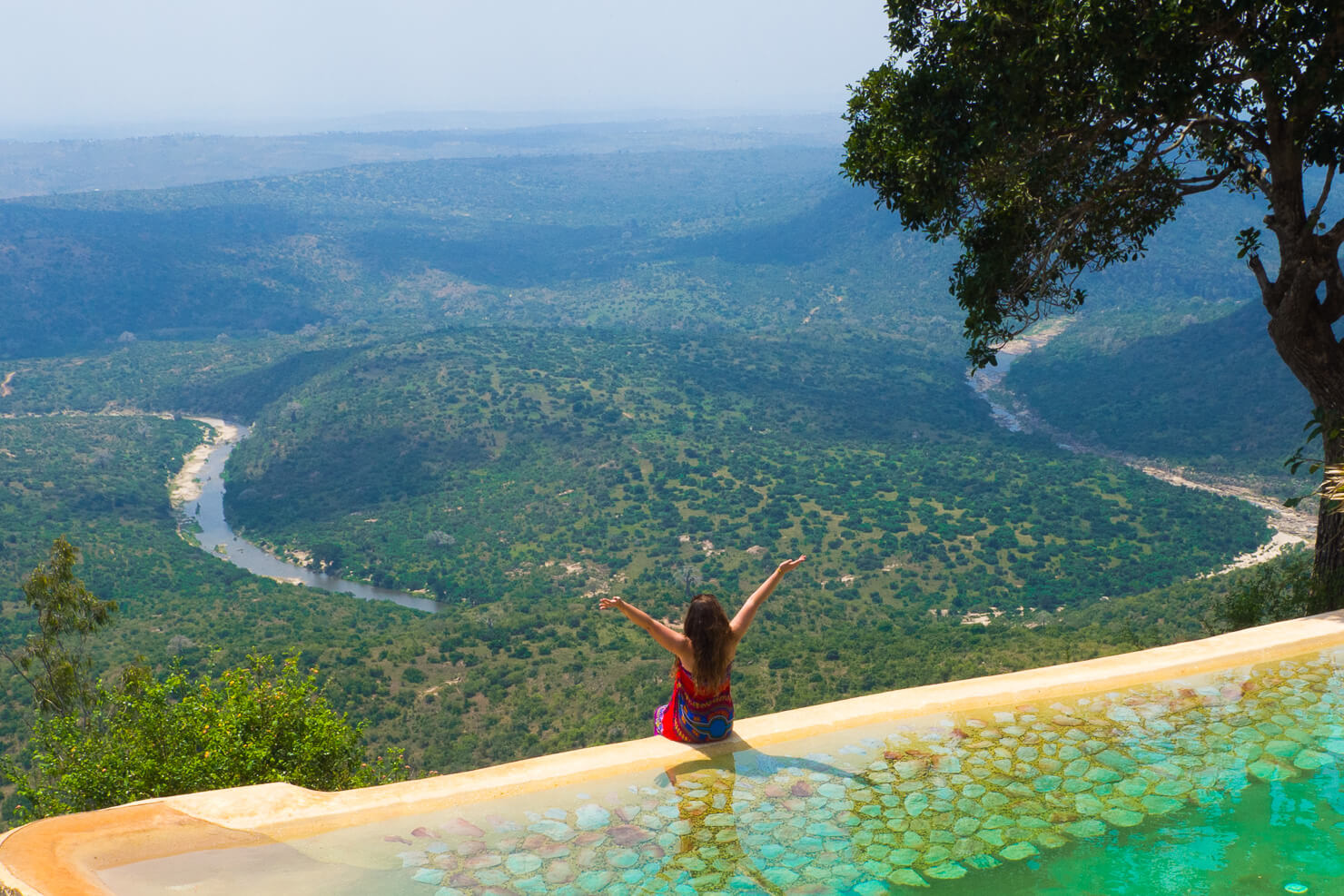
When To Visit Kenya
Kenya is best visited during the dry season from June to October. I would avoid the rainy season from mid-March to May. January and February can also be quite nice, although pretty hot in places.
If you’re hoping to see the Great Migration in the Masai Mara, July to September/October is usually the best time although sometimes the herds have arrived earlier, in June.
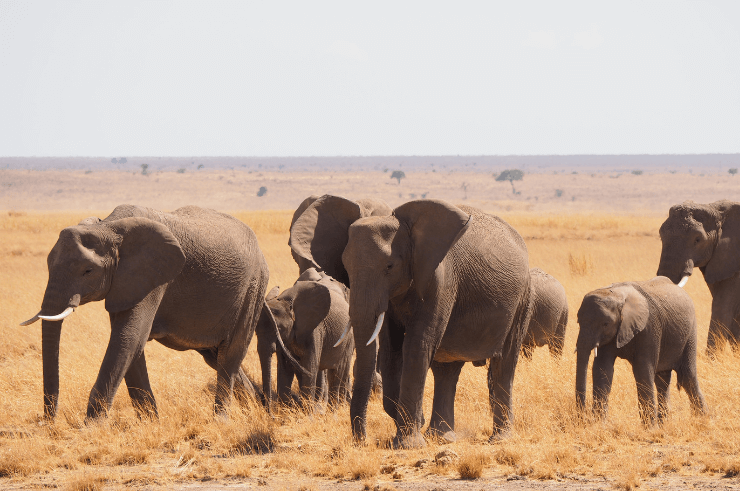
How Long To Spend in Kenya
On this Kenya itinerary, you’ll find a ton of different places to visit, as well as lots of things to do. Kenya has it all!
Kenya is a big country and it would be impossible to see it all in a one or two-week trip. But, in a couple of weeks, you can definitely get a good feel for the country.
Under each location, I’ve suggested the minimum amount of time I recommend you spend there. The full itinerary below would take around a month, but if you’re on a shorter trip, you can just miss certain places out.
For instance, Kenya is very safari heavy, so you could easily just pick 1 or 2 Kenya safari destinations and then spend the rest of your time soaking up the atmosphere in Nairobi or on the coast, near Mombasa.
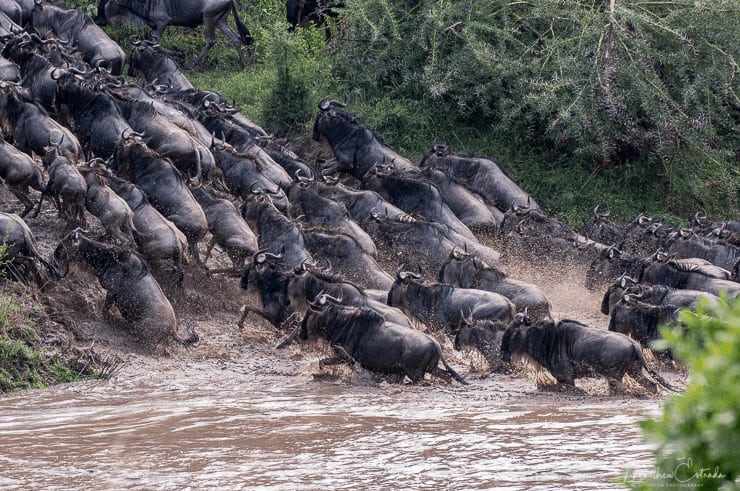
Combining Kenya & Tanzania
People often ask me which is better – Kenya or Tanzania ? They can easily be combined in one trip, but again, these countries are huge, so you won’t be able to see everything in 2 weeks, but you’ll still be able to have an incredible trip either way.
My Kenya & Tanzania Adventure tour takes in the major highlights of both countries – so definitely consider that if you want to maximise your time and let someone else (me) sort out the logistics for you!
For further ideas, check out my suggested Kenya & Tanzania itinerary and my Tanzania itinerary .
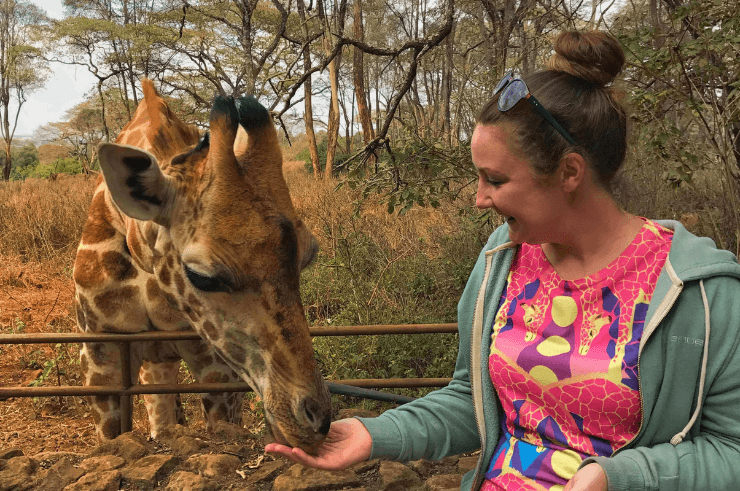
Detailed Kenya Itinerary
Nairobi may seem a bit intimidating for a first-timer to Africa, but it’s actually a great city. The first time I visited I wasn’t that impressed as it just seemed crowded, busy and congested.
But I’ve been back many times since then and now it feels like home. It’s still crowded and hectic, but it is also vibrant, exciting and full of adventure, I just didn’t see it the first time around.
Nairobi is the perfect place to begin or end your Kenya trip and you can either head straight out of Nairobi and come back later or spend a few days there first before you go on safari.
How Many Days to Spend in Nairobi
1 – 2 days. You could spend a night in Nairobi and then head straight out to other parts of the country, but there are lots of cool things to do in Nairobi too if you have time.
Things To Do in Nairobi
- Visit the Nairobi Giraffe Centre (they’re the same giraffes at Giraffe Manor).
- See the baby elephants at the David Sheldrick Wildlife Trust.
- Learn about Kenya’s tribes at Bomas of Kenya.
- Visit the Maasai markets.
- Go on safari in Nairobi National Park.
- Do a walking tour of the city.
Where to Stay in Nairobi
- Wildebeest Eco Camp : I often stay at Wildebeest Eco Camp which is a great place for groups and families. They have dorm tents too so perfect for solo travellers.
- After 40 : If you want to stay in the city centre, try After 40 for a mid-range option.
- Villa Rosa Kempinski : To treat yourself, stay in Villa Rosa Kempinski in the city centre.
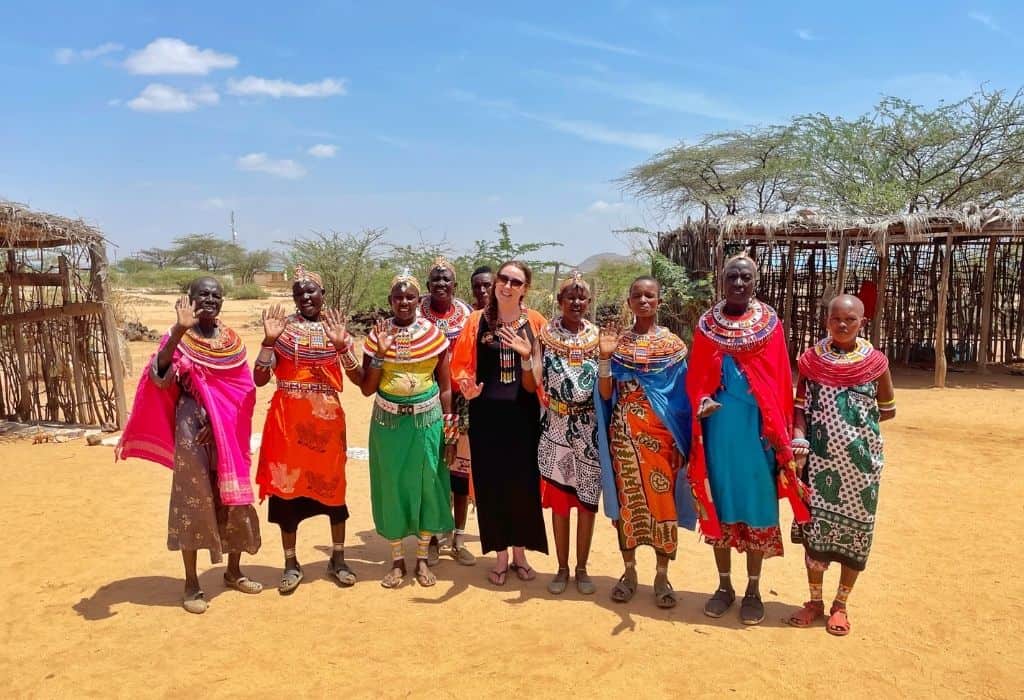
Samburu National Reserve
Samburu National Reserve lies around 300km north of Nairobi on the banks of the Ewaso Nyiro River.
Believe it or not, Samburu Reserve in Kenya was the first safari I ever went on back in 2009. I cried when I saw an elephant in the wild for the first time. It was such a special moment in my life.
I also visited Umoja Women’s Village, an initiative set up by a lady called Rebecca Lolosoli. The project was set up to help women and girls from the Samburu tribe who are the victims of violence from their husbands or forced into marriage with older men from a very young age.
If you don’t fancy the drive, you can fly up to Samburu from Nairobi’s Wilson Airport.
How Many Days to Spend in Samburu National Reserve
2 – 3 Days. As it’s a bit of a drive from Nairobi, I would recommend spending at least 2 – 3 nights there. It’s also a great place to stop if you are exploring Northern Kenya . and can easily be combined with a safari to Ol Pejeta Conservancy too.
Things To Do in Samburu National Reserve
- Go on safari in Samburu National Reserve or Buffalo Springs National Reserve on the other side of the river. The daily park fee covers you for both places. You can see my guide to Samburu National Reserve here .
- Visit the Umoja Women’s Village (see a Youtube video about the village here ). It costs 1000 KES per person to visit for the day.
Where to Stay in Samburu National Reserve
- Umoja Women’s Village: For a truly local experience, you can stay at the Umoja Women’s Village.
- Sabache Camp : Alternatively, I’d recommend Sabache Camp, a good mid-range option.
- Elephant Bedroom Camp : For a more high-end stay, have a look at the wonderful Elephant Bedroom Camp.
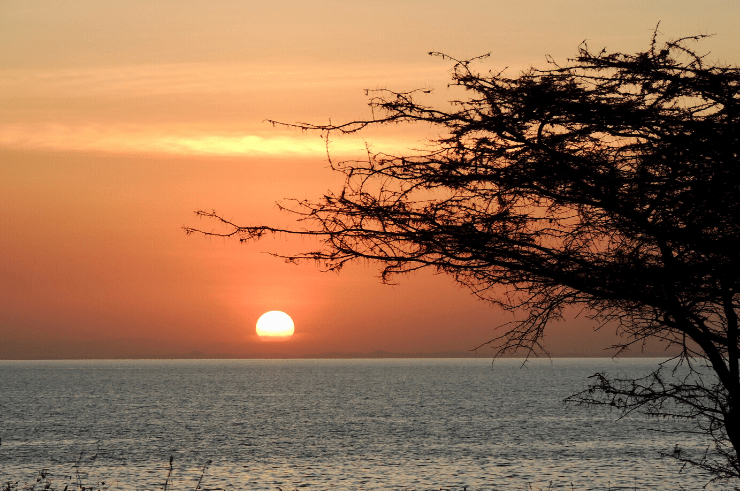
Lake Turkana
Remote Lake Turkana, also known as the ‘Jade Sea’, doesn’t find itself on many Kenya itineraries, but it can be an amazing adventure for the intrepid traveller, especially if you venture up there during the Lake Turkana Festival which takes place in June (usually – they have been known to move it).
The Lake Turkana Cultural Festival was created to help relations between the different tribes who live within the region and promote ‘cross-cultural interaction, harmony, cohesion, integration, cooperation and trading’.
At the festival, you will have the opportunity to observe and interact with people from around 14 remote Kenyan tribal groups, including the El Molo, Randille, Samburu and Turkana as well as learn about their way of life.
This is definitely something special if you can squeeze it into your Kenya itinerary. Just keep an eye on the safety warnings around the region and seek local advice before you drive up there.
How Many Days to Spend in Lake Turkana
5 – 7 days. The festival lasts for 3 days and it will probably take you a good couple of days to get up there and a couple of days to back down (even without stops), so allow a week altogether, unless you fly. Samburu, Mount Kenya or Ol Pejeta are good places to stop en route.
Things To Do in Lake Turkana
- See the Teleki Volcano.
- Go fishing on the lake.
- Visit some prehistoric sites.
- Take a boat ride on the lake.
- Go bird watching.
- Visit a local tribe.
- Take part in the Lake Turkana Festival.
Where to Stay in Lake Turkana
- Camping by Lake Turkana: The festival takes place in Loiyangalani. If you’re on a budget, camping is usually the best option – there is very little infrastructure so it is best to be self-sufficient.
- Malabo Resort : Don’t fancy camping try Malabo Resort.
- Eliye Springs Resort : On the other side of the lake, the most reliable option is Eliye Springs Resort.
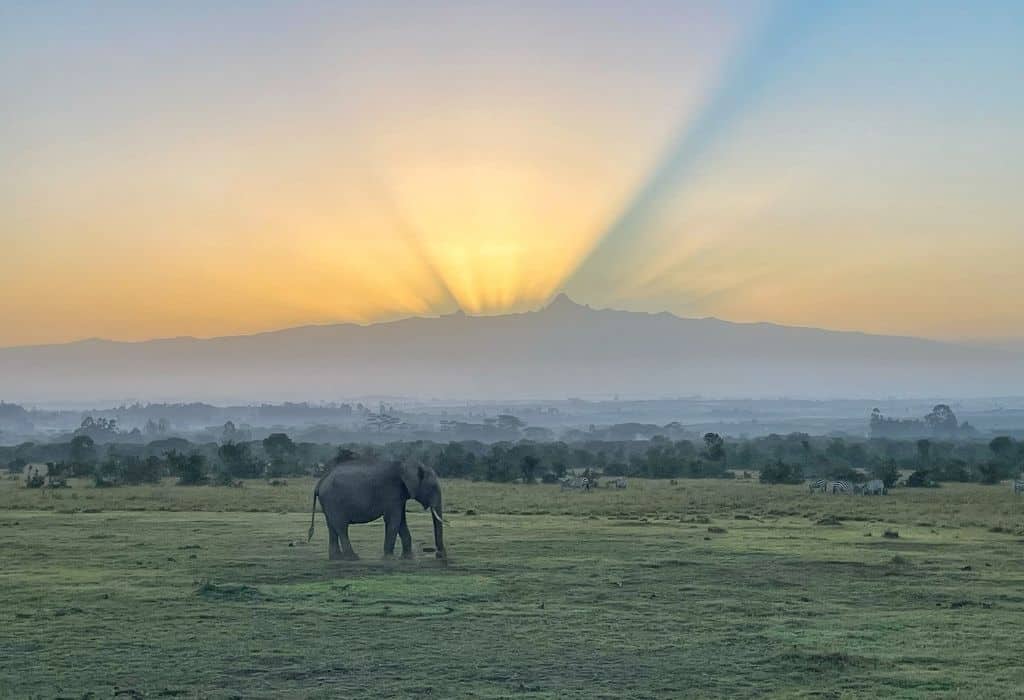
Mount Kenya National Park
Near to the Samburu National Reserve lies Mount Kenya, Kenya’s highest mountain at 5,199 metres – in fact, it’s the second-highest mountain in Africa.
Reaching the summit requires technical climbing, so most trekkers head to the 3rd highest peak, Point Lenana which usually takes between 4 and 6 days. Shorter treks are also available. Most trekkers start from the town of Naro Moru.
If you’re feeling less energetic you can take a helicopter ride over the summit. Flights usually depart from Nanyuki.
How Many Days to Spend in Mount Kenya National Park
4 – 6 days if climbing the mountain. More if you want to stay somewhere close the night before and after your trek or want to visit some of the other nearby areas, less if you are just passing through and doing a day hike.
Things To Do in Mount Kenya National Park
- Hike or climb Mount Kenya.
- Take a helicopter ride over the summit.
- Visit the Ngare Ndare waterfall.
- Visit nearby Meru National Park.
- Visit the Lewa Wildlife Conservancy.
- Visit Aberdare National Park.
Where to Stay in Mount Kenya National Park
- Noro Moru River Lodge : Some treks offer transfers from Nairobi but if you want to stay closer, try the Noro Moru River Lodge.
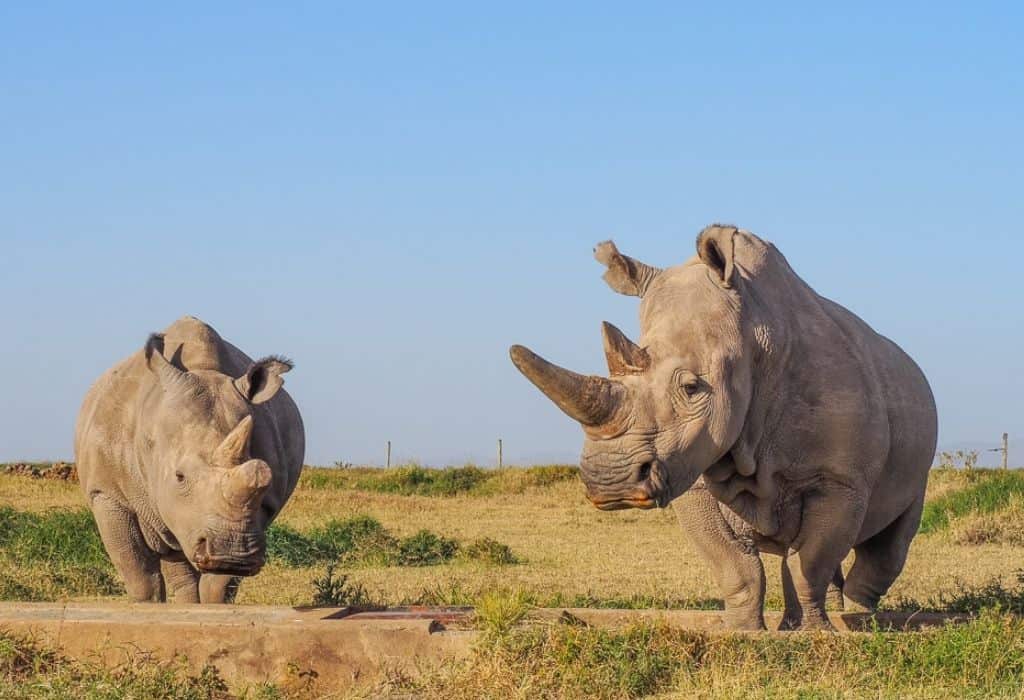
Ol Pejeta Conservancy
Ol Pejeta is one of my favourite places in Kenya . This privately-owned wildlife conservancy to the west of Mount Kenya National Park houses the largest population of the endangered black rhino in East Africa so sightings are pretty much guaranteed.
There are so many great things to do in Ol Pejeta and it’s perfect for families. You can even go horse riding through the reserve, allowing you to get close to the animals without scaring them, that includes the rhinos.
The great thing about this conservancy is that you don’t have to be staying there to visit. You can just pay to visit for the day. One of the main highlights is the waterhole at Sweetwaters Serena Camp where you will often see rhinos coming to drink.
How Many Days to Spend in Ol Pejeta
1 – 2 days at the minimum. But I reckon you could easily spend longer! Plan your stay around the activities you want to do. You can read more about planning your trip in my Ol Pejeta travel guide .
Where to Stay in Ol Pejeta
- Ol Pejeta Campsites : There are a number of campsites available inside the park.
- Sweetwaters Serena Camp : Part of the Serena portfolio, Sweetwaters Serena Camp is an excellent choice.
- Olepangi Farm : For a luxurious stay, I would suggest the Olepangi Farm which is just outside the park.
Things To Do in Ol Pejeta Conservancy
- Go horse riding to see Fatu & Najin the last two Northern White Rhinos.
- Visit Baraka, the blind black rhino.
- Join the K9 dog tracking team.
- Go on a lion tracking game drive.
- Visit the Sweetwaters Chimpanzee Sanctuary.
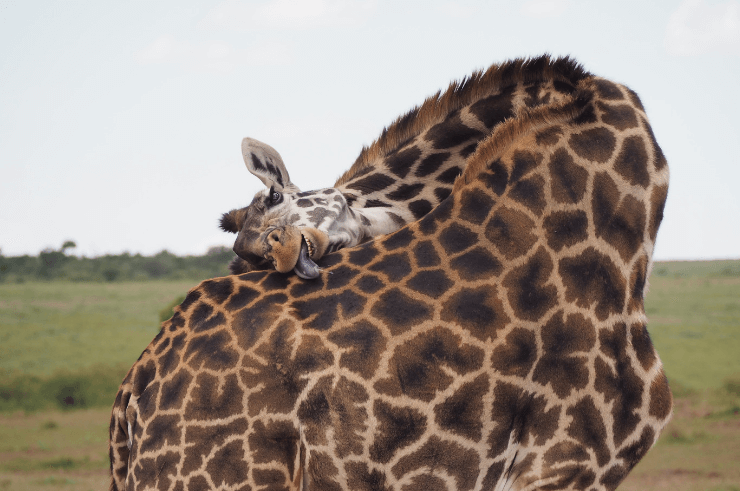
Lake Naivasha & Hell’s Gate National Park
The next stop on this Kenya itinerary is around Lake Naivasha and Hell’s Gate National Park.
On the way, you could stop at Thomson Falls , which lies between Ol Pejeta and Lake Naivasha, either for a picnic stop or an overnight stay if coming from further away.
Naivasha town lies close to Lake Naivasha. Nearby you’ll find the wonderful Hell’s Gate National Park, said to be the inspiration for the Lion King due to its dramatic landscape. What’s also special about Hell’s Gate, is that you can take cycling safaris allowing you to get a completely different safari perspective.
Naivasha is also close to the extinct Mount Longonot which can be climbed in a few hours and offers great views over Lake Naivasha, as well as Elsamere, home of Joy Adamson, the writer of Born Free.
How Many Days to Spend in Naivasha & Hell’s Gate National Park
2 – 3 days. If you were in a rush, 1 night could be ok if you’re not travelling to or from too far.
Where to Stay in Naivasha & Hell’s Gate National Park
- Camp Carnellys : The most popular budget option is Camp Carnellys.
- Elsamere Lodge : This is the lodge on the site of Elsamere, of Born Free fame, where Joy Adamson lived.
- Enashaipai Resort & Spa : The name of this lodge means ‘state of happiness’ in the Maasai language.
Things To Do in Naivasha & Hell’s Gate National Park
- Go cycling or do a safari at Hell’s Gate National Park.
- Take a dip in the Ol Karia Geothermal spa.
- See the flamingos at Lake Oloiden.
- Take a boat out on Lake Naivasha.
- Go walking on Crescent Island .
- Visit Elsamere.
- Climb Mount Longonot.
Lake Nakuru National Park
At one time, I would have definitely said to go to Lake Nakuru, which used to be famous for its flamingos, however, rising water levels have forced the flamingos to move to Lake Bogoria (around 4 hours north) and pollution from the nearby town has also had a negative effect – it’s very sad.
Saying that it’s still a good place to see rhinos, there are a couple of wonderful viewpoints and it’s a good stopover between the Mara and Ol Pejeta – but I probably wouldn’t include it as a main destination on your Kenya itinerary. Read more here .
How Many Days to Spend in Lake Nakuru National Park
1 day, for the reasons I mentioned above.
Things To Do in Lake Nakuru National Park
- Go on safari to see the white rhinos.
- Visit Baboon Cliff Viewpoint.
Where to Stay in Lake Nakuru National Park
- Lake Nakuru Lodge : This is a great mid-range option in the park.
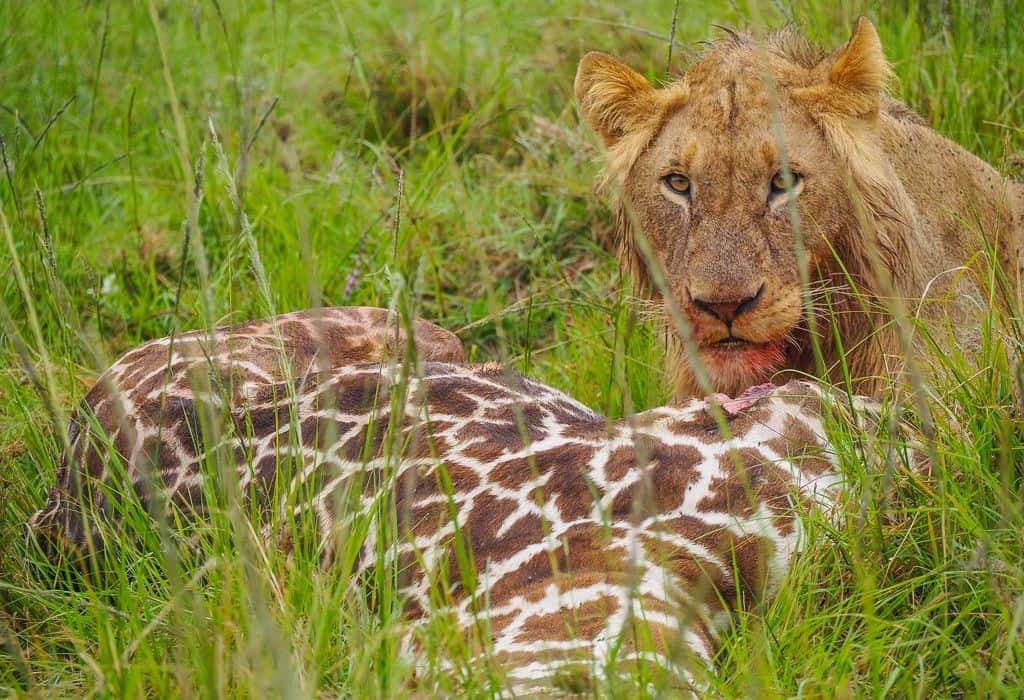
Masai Mara National Reserve
The next stop on our Kenya itinerary is the incredible Masai Mara, home to the ‘Big Five’ and arguably the most famous safari destination in the world.
As well as game drives through the park, you can take a balloon ride to see it all from above (with a champagne breakfast at the end), which is especially cool if you time it when the Great Migration is passing through ”“ this varies slightly from year to year, but usually happens around July, August & September.
If you want an amazing and varied Masai Mara safari, I’d definitely recommend coming along on my Rock My Kenya & Tanzania Adventure . It’s a really special and awesome trip (if I do say so myself)!
How Many Days to Spend in the Masai Mara National Reserve
3 – 4 days. It takes at least half a day to get to and from the Masai Mara by road (from Nairobi), so I would suggest spending at least 3 nights here. You can save a bit of time by flying into Keekorok Airstrip and I believe they are considering making this an international airport – watch this space.
Things To Do in the Masai Mara National Reserve
- Go on a Masai Mara safari.
- See the wildebeest & zabra migration (usually July – October).
- Spend time with the Maasai people.
- Go hot-air ballooning.
- Go on a horse riding safari.
- Visit the Sekenani township.
Where to Stay in the Masai Mara National Reserve
- Kobi Farm : My favourite place to stay is Kobi Farm, run by my friends who used to own Mara Explorers Camp.
- Governor’s Camp : Beautiful tented camp in the heart of the Mara.
- Mara Explorer Camp : Beautiful luxury camp, not to be confused with the old Mara Explorers Camp.
- Angama Mara : One of the best, Angama Mara is the place to go if you’re looking for somewhere really special with an ‘Out of Africa’ romantic vibe.
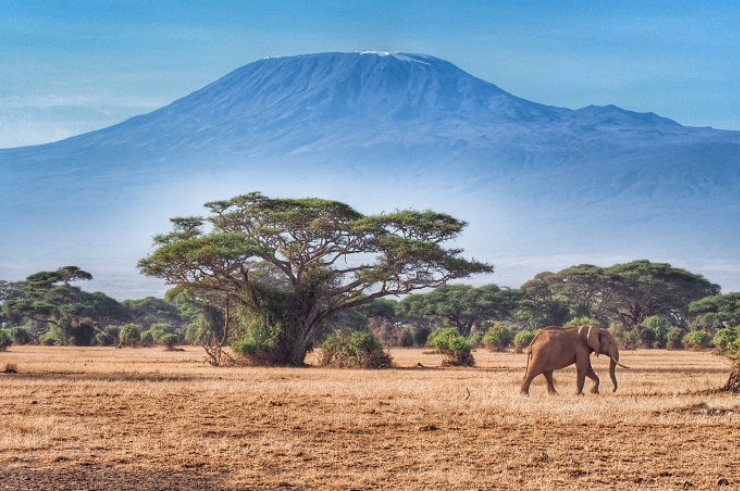
Amboseli National Park
When planning your Kenya itinerary, you should definitely consider Amboseli National Park, one of Kenya’s most iconic yet not that widely known travel destinations.
Amboseli is special for a couple of reasons, firstly for having one of the densest elephant populations in the world, and secondly for the fact that it lies at the base of Kilimanjaro, which provides an incredible backdrop for all of your photos. Simply magical!
Unless you fly between the Mara and Amboseli, you’ll probably need to stop over in Nairobi, otherwise, it would be a very long travel day.
Alternatively, you could also visit Tsavo National Park which is a little bit further on towards Mombasa.
How Many Days to Spend in Amboseli National Park
1 – 2 days. Allow yourself at least 1 full day to really enjoy your safari. Just be aware that the weather can affect the view of Kilimanjaro, so the longer you spend here, the more chance you will have for good views.
Things To Do in Amboseli National Park
- Spot elephants and other animals on safari.
- Admire Kilimanjaro.
- Visit the Maasai people.
Where to Stay in Amboseli National Park
- Kibo Safari Camp : My favourite place to stay in Amboseli is Kibo Safari Camp which has great views of Kili from the rooms.
- Amboseli Eco Camp : If you’re a fan of eco-camps, you might like to stay here.
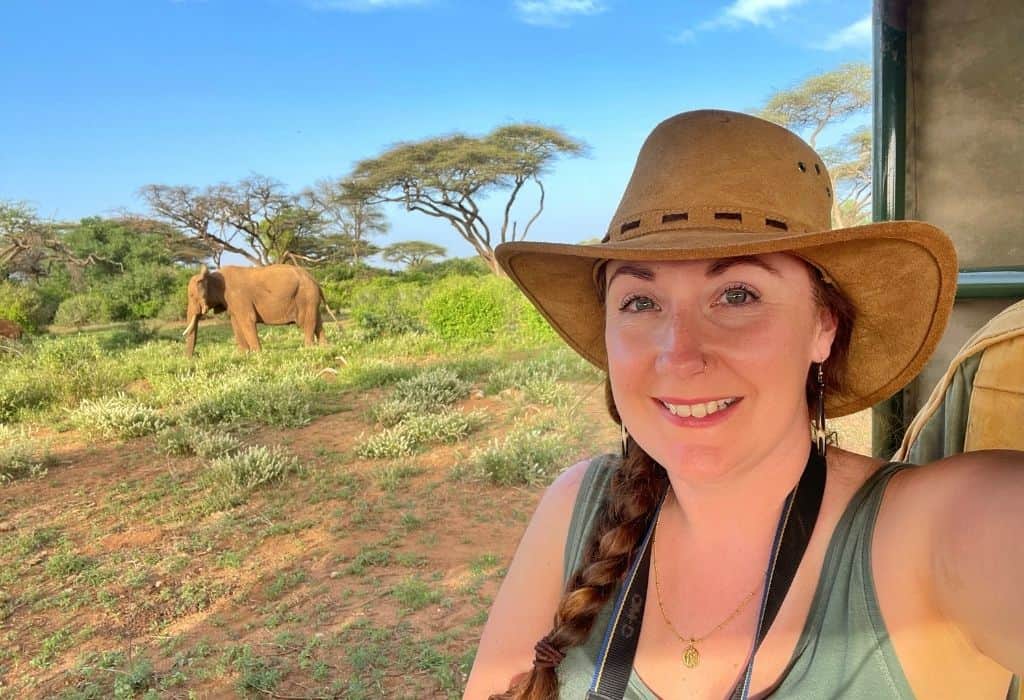
Tsavo National Park
I first read about Tsavo National Park in one of my favourite books, Love, Life, and Elephants: An African Love Story by Daphne Sheldrick, founder of The Sheldrick Wildlife Trust.
Tsavo is famous for having lots and lots of elephants and is split into two sections, Tsavo West and Tsavo East.
How Many Days to Spend in Tsavo National Park
2 – 3 days. You could spend more if you hadn’t been on too many other safaris during your trip.
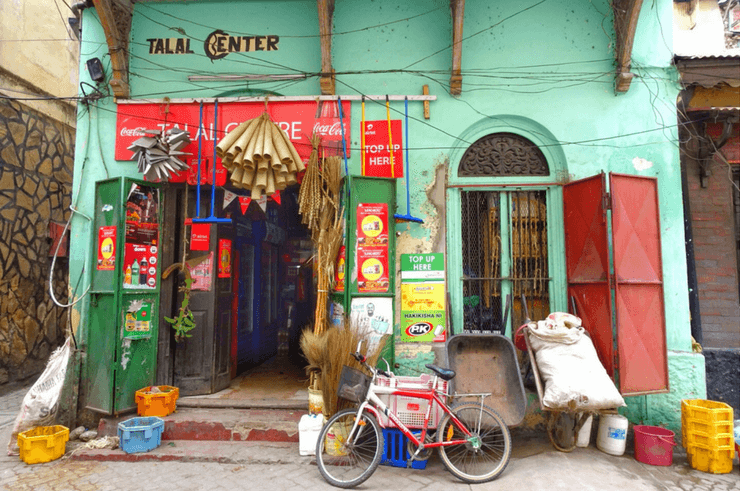
Mombasa is a fantastic coastal city, with a very different feel to Nairobi. Whereas Nairobi is a very cosmopolitan, Mombasa has a distinct old-world, meets new-world Swahili flavour.
Mombasa is steeped in history, being one of the oldest and busiest ports on the African continent and is a great place to immerse yourself in Swahili culture.
Take a tour of the city and enjoy some of the great restaurants and bars too.
If you don’t go through Amboseli or Tsavo, you can easily get the train from Nairobi to Mombasa. Alternatively, you can also jump on the train at various different towns, including Voi, near to Tsavo National park. Booking in advance is advisable as the train almost always books up.
How Many Days to Spend in Mombasa
1 – 2 days. Mombasa is a great and important historical city, however, it’s not my favourite place in Kenya so a day or two is enough for me.
Things To Do in Mombasa
- Take a city tour.
- See the Mombasa tusks.
- Visit Uhuru Park.
- Explore the spice markets.
- Visit Fort Jesus and the Old Town.
- Shop for souvenirs.
- Visit Haller Park and visit the Nguuni Wildlife Sanctuary.
Where to Stay in Mombasa
- Tulia House : The main backpacker hangout in Mombasa is Tulia House. The bathrooms aren’t great, and the rooms are ok, but they have a pool and sociable bar, great for meeting new friends.
- Best Western Plus Creekside : If you want somewhere reasonably priced, with nice views and close to town, check out this place.
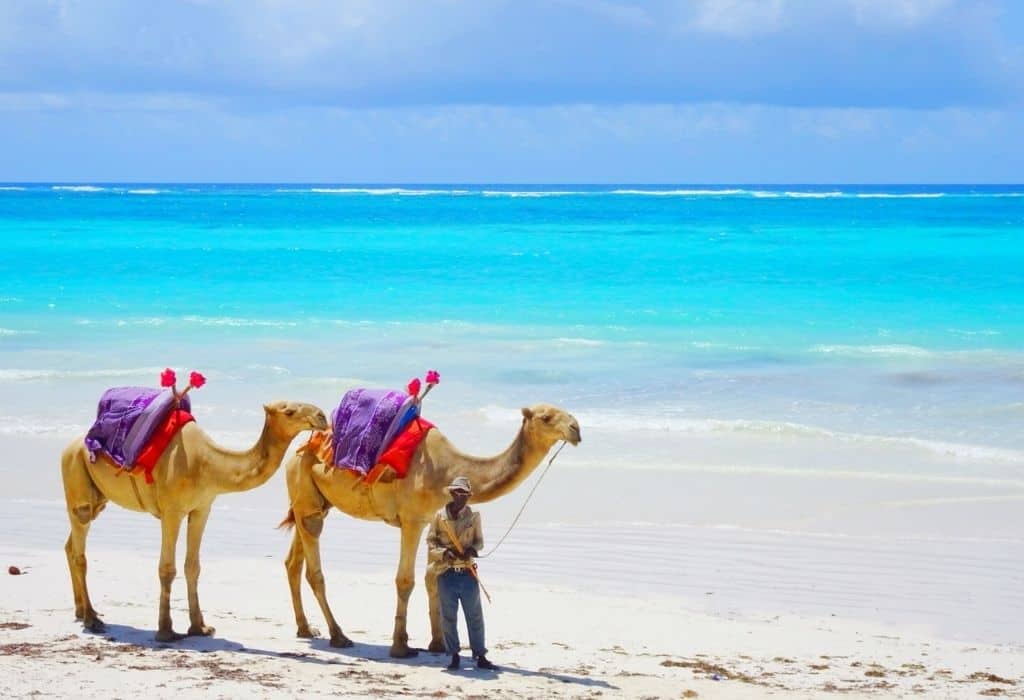
Diani Beach
You can end your Kenya holiday in Diani, one of those picture-perfect locations, known for beautiful blue seas and white, sandy beaches. Diani is a popular honeymoon spot, as well as a backpacker favourite, so it’s a great place to add to your Kenya itinerary.
Whether you’re looking to relax, get adventurous or party – there’s something for everyone.
The trade winds make Diani a popular spot for kite surfing and it’s also one of the best places for sky diving in Africa.
At night, the backpackers tend to gather at Forty Thieves (although I believe it’s closed at the moment) which is always fun, especially on the weekend.
How Many Days to Spend in Diani Beach
2 – 3 days. Diani Beach is a great place to relax!
Things To Do in Diani Beach
- Go skydiving over the Swahili coast.
- Explore Shimba Hills National Reserve.
- Take a dhow trip to Kisite-Mpunguti Marine National Park.
- Relax on the beach and party the night away.
Where to Stay in Diani Beach
- Stilts : Stilts is a backpacker place, set back from the beach in a jungle setting. It’s one of my favourites and you also get to use the facilities at their sister hotel, Flamboyant.
- Flamboyant : Owned by the same people as Stilts, for mid-range, try Flamboyant is a nice choice, with a pool and lying directly on the beach.
- AfroChic : For a more luxurious stay, check out AfroChic, part of the Elewana Collection.
- Diani Villa : If you have a big group, I would suggest Diani Villa.
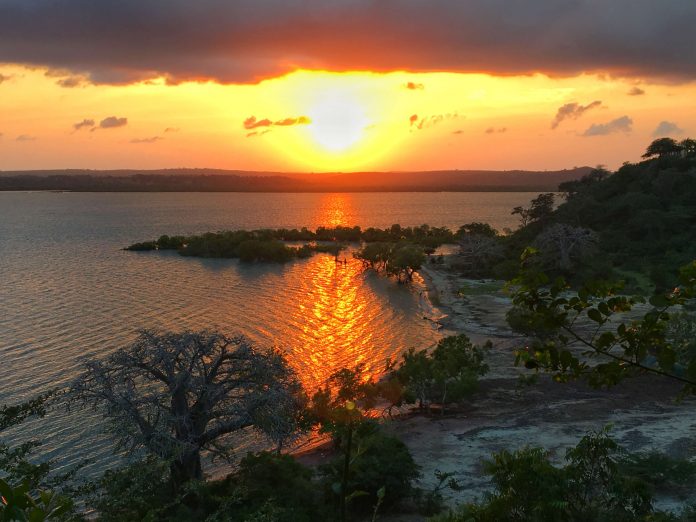
Kilifi, a town north of Mombasa, is one of my favourite places in Kenya.
I think a lot of this has to do with the incredible backpackers there, which is called Distant Relatives. It is truly is backpacker’s paradise and I’ve known many a person to go there for a couple of days and leave weeks, even months later.
The friendly, laid back-vibe tends to attract a lot of cool people including locals, independent travellers, so there’s always something going on and someone to hang out with.
You can spend your time relaxing in a hammock, swimming in the creek or the pool or taking a day trip out somewhere. There are lots of things to do in Kilifi.
Again, you could stay in Kilifi and easily explore Watamu and Malindi from there, but I guess your Kenya itinerary will depend on how much time you have – but the options are there!
How Many Days to Spend in Kilifi
How long is a piece of string? On a serious note, at least 2 full days.
Things To Do in Kilifi
- See the bioluminescence in the waters of Kilifi Creek.
- Relax on the white sands of Bofa Beach.
- Sail on a traditional dhow boat.
- Visit Vuma Cliffs.
- Go snorkelling or scuba diving.
- Take a village tour.
Where to Stay in Kilifi
- Distant Relatives Ecolodge & Backpackers : I love Distant Relatives. It’s one of those places that people either really love or they don’t and lots of people get ‘stuck’ there. It’s got a strong hippy/eco/permaculture vibe if you’re into that!
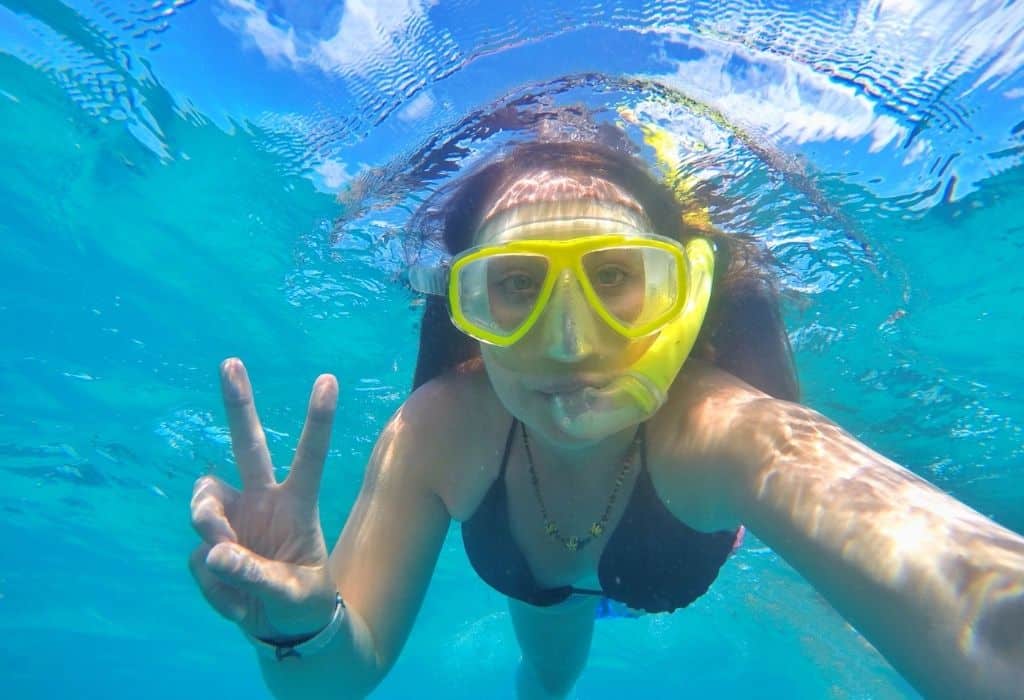
Watamu & Malindi
North of Kilifi, you’ll find Watamu and Malindi, two beautiful beach towns and popular Kenya holiday destinations, both with plenty of activities, hotels and restaurants to keep you busy for a good few days, if not longer.
I’m putting these two together because they are so close to each other (approx 30 mins) – so you could stay in one place and enjoy both. Kilifi is also nearby, but Kilifi holds a special place in my heart, so Kilifi gets a section of its own.
You can fly to Malindi from Lamu or Nairobi, or you can get a local minibus (matatu) from Mombasa.
How Many Days to Spend in Watamu & Malindi
2 days + (more if you can) – is there such a thing as too much beach time?
Things To Do in Watumu & Malindi
- Visit Arabuko Sokoke Forest.
- Go scuba diving or snorkelling at Watamu Marine National Park and Reserve.
- Explore the Gedi Ruins.
- Relax on Golden Beach.
- Hang out at Osteria Beach Restaurant.
- Visit the Marafa Depression.
- Do some watersports (SUP, surfing, kite surfing).
Where to Stay in Watamu & Malindi
- White Elephant Sea Lodge : Beach lodge in Malindi.
- Kobe Suite : Mid-range beach resort in Watamu.
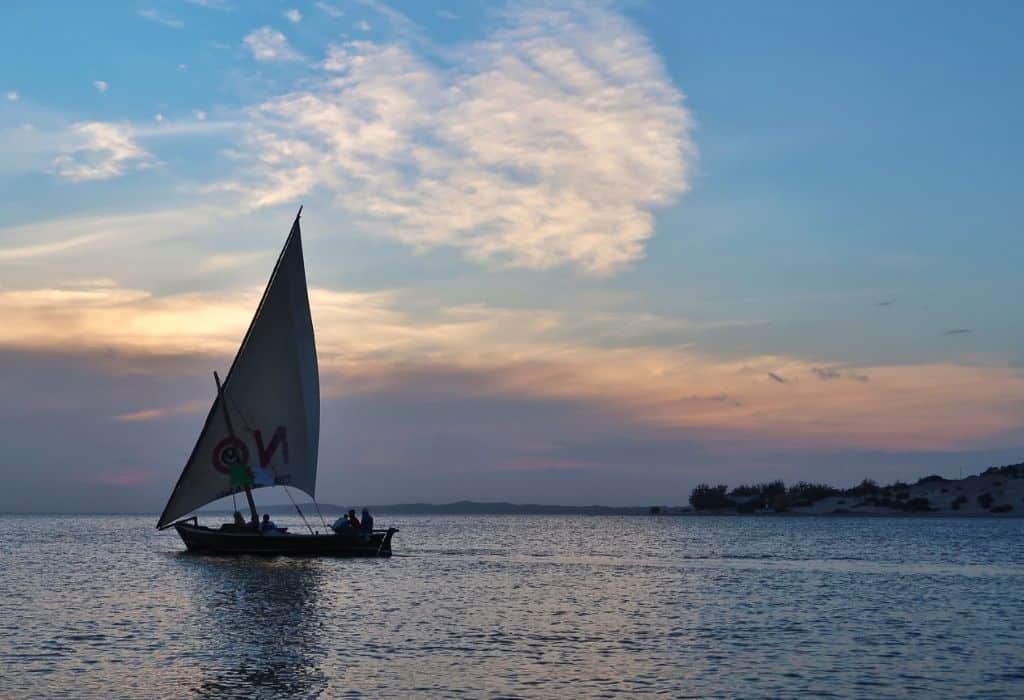
Lamu, in northern Kenya, is a UNESCO World Heritage Site and possibly the best place in the world to experience the traditional Swahili culture – even more so than Mombasa or Stone Town in Zanzibar .
Visitors to this sleepy island often spend much longer here than they intend to, sucked in by the laidback way of life. Spend your days getting lost in the alleyways, relaxing on the beaches and immersing yourself in this intoxicating place.
I absolutely love Lamu and wrote a whole Lamu travel guide to help you plan your own trip.
The road to Lamu is not known for being very safe, so it is advisable to fly. You can catch a flight from Nairobi, Mombasa or Malindi. Once you arrive, it’s a short ferry ride to Lamu from Manda Island.
How Many Days to Spend in Lamu
3 days at least. I spent 4 nights there and that was great, but I could have stayed longer.
Things To Do in Lamu
- Wander through Lamu town.
- Visit the market, fort and the museum.
- Take a trip on a dhow boat.
- Go to a festival.
- Go sunrise swimming and relax on Shela Beach.
- Visit the donkey sanctuary.
Where to Stay in Lamu
- Banana House & Wellness Centre : Check out this lovely Swahili house which also hosts retreats. This is where I stayed and I loved it!
- Manda Bay : Manda Bay is a beautiful, boutique beach lodge.
I hope this helps you plan an amazing Kenya itinerary! Got any questions? Leave them in the comments below!
Other Kenya posts you might enjoy…
- 25 Awesome Things to Do in Nairobi, Kenya
- The Perfect 2-Week Kenya & Tanzania Itinerary (Plus Map, Tips & Things To Do)
- A Little Guide to Lamu Island in Kenya
- Planning a Trip to Ol Pejeta Conservancy in Kenya – Everything You Need to Know
- Kenya vs Tanzania – Which is the Best Country to Visit?
- The Best Hostels, Guesthouses & Campsites in Kenya
- How To Get Visas for Kenya & Entry Requirements Explained
- 10 Unique Places To Visit in Northern Kenya
- How to Travel to the Masai Mara on a Budget (Under $500)
- A Guide to Visiting Samburu National Reserve in Kenya
- Visiting the Umoja Women’s Village in Kenya
- A Guide to Amboseli National Park – Kenya’s Most Iconic Unknown Safari Destination
Pin This Post For Later
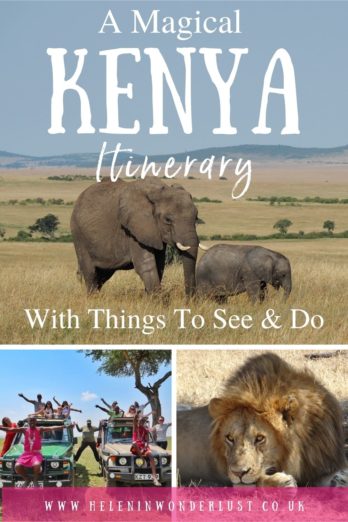
I love to travel all over the world, but it's Africa that holds a special place in my heart. My mission is to help people travel Africa in an authentic, safe, fun, adventurous and ethical way.
Similar Posts

17 Travel Lessons for Everyday Happiness
This time of year always leaves me feeling a little bit reflective and maybe a little bit melancholy, even though…
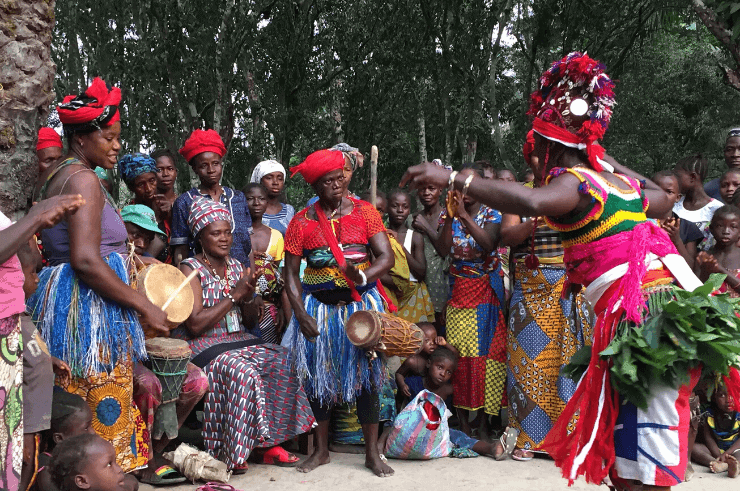
The Best Things To Do in Sierra Leone & Itinerary
Sierra Leone had been a bucket list destination of mine for years before I finally got to visit in 2019…
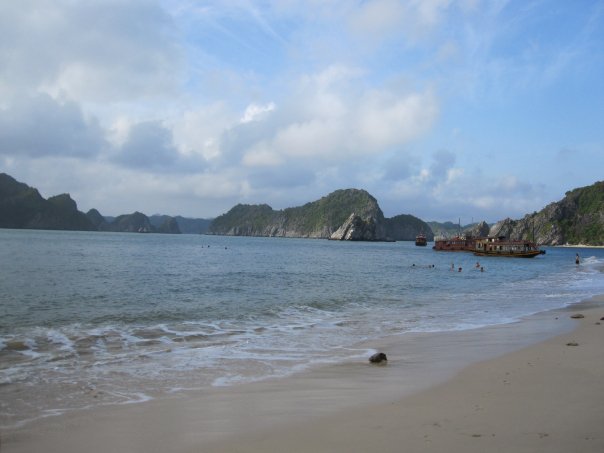
Vietnam – Halong Bay & Monkey Island Tour
On day two of our trip to Halong Bay in Vietnam, we were due to head to the mysteriously named…
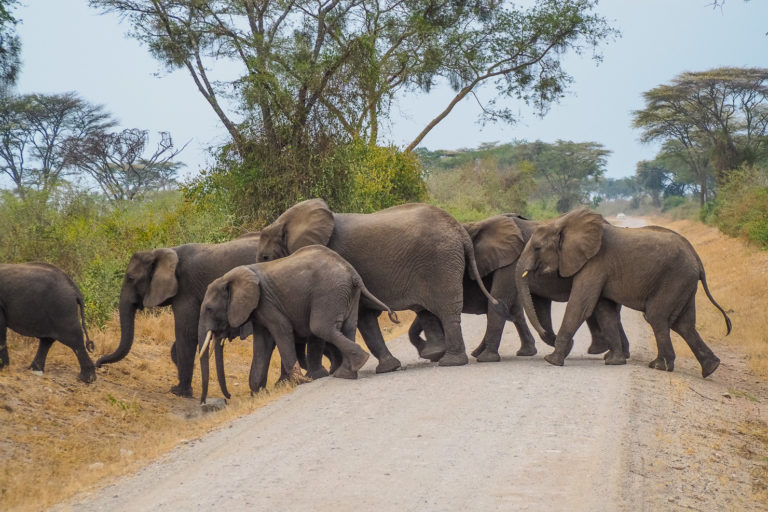
Come With Me to Africa! 2018 Rock My Adventure Tours Announced!
This year has been crazy. I left my job, I’ve drove Scotland’s North Coast 500, been to my first Glastonbury…
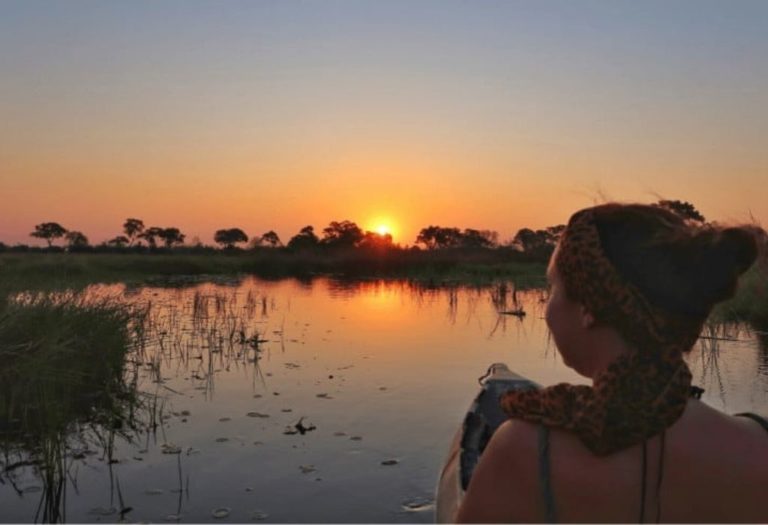
Visiting the Okavango Delta on a Budget – Everything You Need to Know
Leaving our campsite in Maun, we started our intrepid journey into the wilds of the Okavango Delta. Botswana was the…
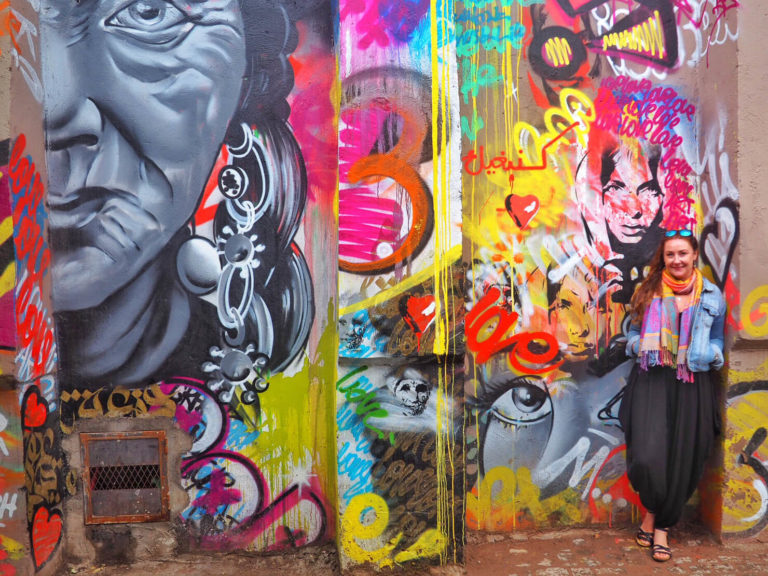
The Charm of Marrakech
If you want to read my top tips for Marrakech, click here. If you want to read about my first…
Hello Helen, Hope you’ve been well. May name is maggy and i really enjoyed reading your blogs. I would have sent you a private message but there is no contact me link. I just started a blog and i’m looking for people who have traveled to my city to share there story. If interested it will be honor to feature your articles and pictures. send me a message and let me know if it’s an option
Best regards Maggy
Hi Helen! I will be in Kenya over the Christmas and New Year holiday this year. I am traveling solo (female) and wonder where in Kenya, and perhaps what hostel, you’d recommend to spend New Years Eve.
Leave a Reply Cancel reply
Your email address will not be published. Required fields are marked *
Privacy Overview
Travel Guide Kenya
Book your individual trip , stress-free with local travel experts
- roughguides.com
- Travel guide
- Itineraries
- Local Experts
- Travel Advice
- Accommodation
Plan your tailor-made trip with a local expert
Book securely with money-back guarantee
Travel stress-free with local assistance and 24/7 support
We really got to be "on vacation" and just take it all in, knowing that you had everything planned and organised.
Lapped by the Indian Ocean, straddling the equator, and with Mount Kenya rising above a magnificent landscape of forested hills, patchwork farms and wooded savanna, Kenya is a richly rewarding place to travel. The country’s dramatic geography has resulted in a great range of natural habitats, harbouring a huge variety of wildlife, while its history of migration and conquest has brought about a fascinating social panorama, which includes the Swahili city-states of the coast and the Maasai of the Rift Valley.
Where to go in Kenya
Elephants and the environment, kenya’s peoples, kenya’s wildlife websites, tailor-made travel itineraries for kenya, created by local experts.

11 days / from 3089 USD
Bush To Beach Safari
Explore Kenya's vast national parks such as Lake Nakuru, the famous Maasai Mara and the well-known 'red' elephants in the Tsavo National Park. After a few days of waking up early to spot wildlife, relax on the fine sandy beaches of Diani in the Mombasa area.

10 days / from 4059 USD
Best of Kenya & Tanzania
A fascinating trip across the Maasai Mara and the Serengeti and Ngorongoro Conservation Areas in Kenya and Tanzania. Learn more about the traditions and cultures of the Maasai and stare in awe at the wild roaming wildlife on your several game drives in different national parks.

7 days / from 2791 USD
Family Safari in Kenya
Take your (grand)children and embark on the adventure of a (family) lifetime: 7 days in Kenya, with up-close animal encounters, game drives to see the Big 5 and plenty of fun day activities.
Kenya’s world-famous national parks, tribal peoples and superb beaches lend the country an exotic image with magnetic appeal. Treating it as a succession of tourist sights, however, is not the most stimulating way to experience Kenya. If you get off the beaten track, you can enter the world inhabited by most Kenyans: a ceaselessly active scene of muddy farm tracks, corrugated-iron huts, tea shops and lodging houses, crammed buses and streets wandered by goats and children. Both on and off the tourist routes, you’ll find warmth and openness, and an abundance of superb scenery – rolling savanna dotted with Maasai herds and wild animals, high Kikuyu moorlands grazed by cattle and sheep, and dense forests full of monkeys and birdsong. Of course the country is not all postcard-perfect: Kenya’s role in fighting Al-Shabaab terrorists in Somalia has resulted in reprisal attacks, while if you start a conversation with any local you’ll soon find out about the country’s deep economic and social tensions.
The coast and major game parks are the most obvious targets. If you come to Kenya on an organized tour, you’re likely to have your time divided between these two attractions. Despite the impact of human population pressures, Kenya’s wildlife spectacle remains a compelling experience. The million-odd annual visitors are easily absorbed in such a large country, and there’s nothing to prevent you escaping the predictable tourist bottlenecks: even on an organized trip, you should not feel tied down.

The major national parks and reserves, watered by seasonal streams, are mostly located in savanna on the fringes of the highlands that take up much of the southwest quarter of the country. The vast majority of Kenyans live in these rugged hills, where the ridges are a mix of smallholdings and plantations. Through the heart of the highlands sprawls the Great Rift Valley, an archetypal East African scene of dry, thorn-tree savanna, splashed with lakes and studded by volcanoes.
The hills and grasslands on either side of the valley – Laikipia and the Mara conservancies, for example – are great walking country, as are the high forests and moors of the Central Highlands and Mount Kenya itself – a major target and a feasible climb if you’re reasonably fit and take your time.
Nairobi, at the southern edge of the highlands, is most often used just as a gateway, but the capital has plenty of diversions to occupy your time while arranging your travels and some very worthwhile natural and cultural attractions in its own right.
In the far west, towards Lake Victoria, lies gentler countryside, where you can travel for days without seeing another foreign visitor and immerse yourself in Kenyan life and culture. Beyond the rolling tea plantations of Kericho and the hot plains around the port of Kisumu lies the steep volcanic massif of Mount Elgon, astride the Ugandan border. The Kakamega Forest, with its unique wildlife, is nearby, and more than enough reason to strike out west.
In the north, the land is desert or semi-desert, broken only by the highlight of gigantic Lake Turkana in the northwest, almost unnaturally blue in the brown wilderness and one of the most spectacular and memorable of all African regions.
Kenya’s “upcountry” interior is separated from the Indian Ocean by the arid plains around Tsavo East National Park. Historically, these have formed a barrier that accounts in part for the distinctive culture around Mombasa and the coastal region. Here, the historical record, preserved in mosques, tombs and the ruins of ancient towns cut from the jungle, marks out the area’s Swahili civilization. An almost continuous coral reef runs along the length of the coast, beyond the white-sand beaches, protecting a shallow, safe lagoon from the Indian Ocean.
Discover more places in Kenya

- The North Travel Guide
- The Rift Valley Travel Guide
- Western Kenya Travel Guide
Local overpopulation of elephants is usually the result of old migration routes being cut off, forcing the elephants into reserves – like the Maasai Mara and its neighbouring conservancies – where their massive appetites can appear destructive. Adults may consume up to 170kg of plant material daily, so it’s estimated that several thousand tonnes of foliage pass through the Maasai Mara elephant population’s collective gut each month. This foliage destruction puts new life into the soil, however, as acacia seeds dunged by elephants are released when dung beetles tackle the football-sized droppings, breaking them into pellets and pulling them into their burrows where the seeds germinate. Elephants also dig up dried-out waterholes with their tusks, providing moisture for other animals. Elephants are architects of their environment , setting the inter-species agenda by knocking over trees, creating deadwood habitats for invertebrates and causing hundreds of other impacts, all of which are natural functions in a dynamic ecosystem. The jury is still out on how it works when the wildlife corridors are closed, or the parks fenced in. What is not in doubt is that their ivory is increasingly valuable and poaching is on the rise again. And when they are closely managed and secured in safe sanctuaries, the elephant populations quickly reach unsustainable levels. The Kenya Wildlife Service is getting proficient at translocating elephants, moving them around to balance the numbers.
• With an area of 580,400 square kilometres, Kenya is about two and a half times the size of the UK and nearly one and a half times the size of California. The population , which for many years had a growth rate higher than that of any other country, is now beginning to stabilize and currently stands at around 44 million.
• Kenya regained independence in 1963 after nearly eighty years of British occupation and colonial rule. The Republic of Kenya is a multiparty democracy with more than fifty registered political parties.
• With few mineral resources (though potentially viable oil reserves were confirmed recently), most of the foreign currency Kenya needs for vital imports is earned from coffee and tea exports, and tourism. Most Kenyans scrape a living through subsistence agriculture and remittances from one or two family members in paid employment.
• Kenyan society consists of a huge, impoverished underclass, a small but growing middle class and a tiny elite whose success often owes much to nepotism and bribery. Unbridled corruption percolates every corner of the country and affects every aspect of the economy.
• More positively, more than 93 percent of Kenyans have a mobile phone , an exceptionally high figure for a developing country. The mobile money service M-Pesa, allowing anyone with a mobile phone to send money to another phone user, is one of the most advanced in the world, and has transformed the lives of many poor Kenyans working far away from their families.
For Kenya’s forty-plus ethnic groups, the most important social marker is language and the best definition of a tribe (a term with no pejorative connotation) is people sharing a common first language. It’s not uncommon for people to speak three languages – their own, Swahili and English – or even four if they have mixed parentage.
The largest tribe, the Kikuyu , based in the central highlands, make up about 20 percent of the population; the Kalenjin from the Rift Valley 15 percent; the Luhya of western Kenya 14 percent; the Luo from the Nyanza region around Kisumu 12 percent; and the Kamba from east of Nairobi 11 percent. Many people from these big ethnic groups have had a largely Westernized orientation for two or three generations and their economic and political influence is considerable. Which isn’t to say you won’t come across highly educated and articulate people from every tribal background. “Tribes” have never been closed units and families often include members of different ethnic background, nowadays more than ever. Politics still tends to have an ethnic dimension, however: people retain a strong sense of whether they are locals or newcomers. Inter-tribal prejudice, although often regarded as taboo, or at best an excuse for humour, is still quite commonplace and occasionally becomes violent.
Smaller ethnic groups include the closely related Maasai and Samburu peoples, who make up little more than two percent of the population. Well known for their distinctive and still commonly worn traditional dress and associated with the national reserves named after them, they herd their animals across vast reaches of savanna and, when access to water demands it, drive them onto private land and even into the big towns. Many Turkana and some of the other remote northern groups also retain their traditional garb and rather tooled-up appearance, with spears and other weapons much in evidence.
Kenya has a large and diverse Asian population (perhaps more than 100,000 people), predominantly Punjabi- and Gujarati-speakers from northwest India and Pakistan, mostly based in the cities and larger towns. Descendants in part of the labourers who came to build the Uganda railway, they also include many whose ancestors arrived in its wake, to trade and set up businesses. There’s also a dispersed Christian Goan community, identified by their Portuguese surnames, and a diminishing Arabic community, largely on the coast.
Lastly, there are still an estimated 30,000 European residents – from British ex-servicemen to Italian aristocrats – and another 30,000 temporary expats. Some European Kenyans maintain a scaled-down version of the old farming and ranching life, and a few still hold senior civil service positions. Increasingly, however, the community is turning to the tourist industry for a more secure future.
East African Wildlife Society eawildlife.org . Influential Kenya-based group, centrally involved in the movement to ban the ivory trade. Publishes the excellent Swara magazine.
Ecotourism Society of Kenya ecotourismkenya.org . This local organization promotes sustainable tourism by awarding ratings to lodges, tented camps and tour operators.
Friends of Nairobi National Park fonnap.wordpress.com. Works to keep open the migration route into the park, and raise awareness about the remarkable environment on Nairobi’s doorstep.
Green Belt Movement greenbeltmovement.org . Grassroots conservation and women’s movement founded by the Nobel Peace Prize winner Wangari Maathai, who died in 2011.
Kenya Forests Working Group kenyaforests.org . Promotes sound forest management and conservation.
Nature Kenya naturekenya.org . The website of the East African Natural History Society organizes regular activities and has a good online newsletter.
Wildlife Direct wildlifedirect.org. Chaired by Richard Leakey, this is where conservation fundraising meets a network of conservationists, including more than 50 bloggers from the field in Kenya.
Travel advice for Kenya
From travel safety to visa requirements, discover the best tips for traveling to Kenya
- Crime and personal safety tips Kenya
- Culture and Etiquette in Kenya
- Eating and drinking in Kenya
- National Parks in Kenya
- Travel Tips Kenya for planning and on the go
- Shopping tips for Kenya
- Entertainment and sport
- How to get to Kenya
- Getting around Kenya: Transportation Tips
- Travel Health Kenya
- Sports and Outdoor activities in Kenya
- Best time to visit Kenya
- 10 days in Kenya — 5 travel itineraries
The Rough Guides to Kenya and related travel guides
In-depth, easy-to-use travel guides filled with expert advice.

Find even more inspiration here

Planning your own trip? Prepare for your trip
Use Rough Guides' trusted partners for great rates
written by Rough Guides Editors
updated 26.04.2021
Ready to travel and discover Kenya?
Get support from our local experts for stress-free planning & worry-free travels.
- Travel advice
- Where to stay
Our local experts can design your trip based on your preferences
Warning - You are using an outdated browser. Please upgrade your browser to properly view this website.

- Destinations
- Africa middle east
- Plan your trip
Planning a trip to Kenya
Plan your trip to Kenya with our in-depth travel information:
• Visa and entry requirements
• Embassies and consulates
• Transport
• Health and safety
• Money and budgeting
• What to read
Visas and Passports
All visitors must be in possession of a valid passport with an expiry date at least six months after the end of their intended stay in Kenya. Visas are required by everyone except citizens of some Commonwealth countries and certain countries with which Kenya has reciprocal waiver arrangements.
Citizens of the Australia, Canada, Ireland, New Zealand, UK, USA, and most European countries require visas. South Africans do not require a visa for a stay of less than 30 days, but do require one for a longer stay.
Fortunately, visas can now be obtained upon arrival at any international airport and most overland borders to Kenya. This is a quick and straightforward procedure. Single entry visas cost US$50, multiple-entry US$100 and transit US$20.
Those who prefer to apply for a visa in advance should obtain an application form from the nearest Kenyan Embassy or High Commission, and allow at least a week for processing.
Since these arrangements may change, it is essential to double-check on visa requirements with airlines, tour operators or Kenyan High Commissions or consulates abroad well ahead of the trip.
No visitor is permitted to take up work or residence in Kenya without the authority of the Principal Immigration Officer.
Embassies and Consulates
Foreign embassies in nairobi.
ICIPE House, Riverside Drive (400 metres off Chiromo Road),
Tel: 020 427 7100
www.kenya.embassy.gov.au
Limuru Road, Gigiri, PO Box 1013, 00621 Village Market, Nairobi
Tel: 020 366 3000
www.canadainternational.gc.ca/kenya
Centenary House, Ring Road Westlands Lane
Tel: 020 235 7242
New Zealand (Honorary Consul)
Room 2C, Mirage Plaza, Mombasa Road
Tel: 020 600 1074
South Africa
Roshanmaer Place, Lenana Road
Tel: 020 282 7100
British High Commission, Upper Hill Road
Tel: 020 284 4000
www.gov.uk/world/kenya
United Nations Avenue, Village Market, Gigiri
Tel: 020 363 6000
https://ke.usembassy.gov
The Kenya Airports Authority (KAA) is in charge of the country’s three international airports, as well as seven of its busiest domestic airports. An excellent website www.kenyaairports.co.ke includes a detailed overview of facilities at all airports operated by KAA, as well all airlines that use the airport, and up-to-the-minute information on scheduled departures and arrivals. Airport taxes are charged on all flights to Kenya, but these are now always included in the fare. For those who require them, visas can be bought at all three international airports.
The most important of the country’s three international airports is Nairobi’s Jomo Kenyatta International Airport (JKIA), which lies alongside the Mombasa Road, in the suburb of Embakasi, about 10km (6 miles) southeast of the city centre. The sixth busiest airport in Africa, JKIA serves around 5 million passengers annually, and the modern facilities include 24-hour currency exchange, ATMs, a post office, internet cafés and numerous duty-free shops, as well as restaurants, coffee shops and bars. There are currently three terminals, of which Units 1 and 2 are mainly for international flights and Unit 3 is for domestic flights. A fourth terminal was under construction in early 2012.
Mombasa’s Moi International Airport, situated on the mainland about 8km (5 miles) west of the island-bound city centre (and linked to it by a road causeway) is a less popular point of entry than JKIA, but it has good facilities and it now receives quite a number of international flights, being particularly popular with charter beach packages.
Eldoret international airport, in western Kenya, is currently international in name only, and while it does receive a few cargo flights from outside the country, it is seldom used by tourists.
International Flights
The award-winning national carrier Kenya Airways operates one of the best and most extensive intra-African networks, with regular flights to most of the continent’s major capitals, and it also flies directly to several European cities, including London, Paris, Amsterdam and Rome. It also has good connections to the Middle East and Asia, but doesn’t fly to the Americas or Australia. Full timetables, details of booking agencies within and outside Kenya, and a user-friendly online booking service can be accessed at www.kenya-airways.com .
Nairobi and, to a lesser extent, Mombasa are major regional transit and entry points, and JKIA in particular is serviced by most major European and African airlines. There are no direct flights to Kenya from the Americas or Australia, so most visitors route through London, Amsterdam, Johannesburg or Addis Ababa.
Major carriers to Nairobi include the following airlines:
Air India tel: 020 327 4747; www.airindia.in
British Airways tel: 020 822555; www.britishairways.com
Brussels Airlines tel: 020 444 3070; www.brusselsairlines.com
Egypt Air tel: 020 226821/3; www.egyptair.com
Emirates tel: 020 329 0000; www.emirates.com
Ethiopian Airlines tel: 020 221 7558; www.ethiopianairlines.com
KLM tel: 020 327 4210; www.klm.com
South African Airways tel: 020 224 7342; www.flysaa.com
There is no viable train route into Kenya. A line constructed in the colonial era connects Nairobi to Kampala (the capital of Uganda) and to Dar es Salaam and Arusha (the two main urban tourist hubs in mainland Tanzania) but neither route has operated commercially in years.
The only circumstance wherein you would be likely to enter Kenya in a private road vehicle is if you were driving there yourself, or catching an overland truck from Southern Africa or Europe. If you do drive yourself, note that the following paperwork will be required:
• International touring documents: Carnet de Passage
• International Certificate of Insurance
• International Driving Licence (visitors may use their domestic licence for up to 90 days, after which they should apply for a Kenya driving licence).
Further advice can be obtained from the Automobile Association of Kenya, tel: 020 682 5060/6; www.aakenya.co.ke .
From the north: access by road is difficult because of problems of uncertain transit through northeast Africa. But it is not impossible, with the most viable route currently going through Sudan and Ethiopia. A handful of companies in London organise group overland safaris to Kenya, though such trips are designed for the adventurous. These include Truck Africa ( www.truckafrica.com ) and African Trails ( www.africantrails.co.uk ). Advertisements can also be found in the national press.
If you are tempted to organise your own private overland expedition, thorough advance planning is necessary, and you will need to consult with the embassies of countries on your chosen route. Bold travellers have done the journey solo by motorbike, but most people would be advised to travel with two or more 4x4 trucks, fully rigged for long desert crossings.
From the south and west: driving to Kenya from the south or west is less problematic. A popular route runs from South Africa via Zimbabwe, Zambia and Tanzania to Nairobi, variations on which might take you through Namibia, Botswana, Mozambique, Malawi, Rwanda or Uganda. For self-drivers, the main routes through this region are all surfaced, and can be driven in almost any saloon car, but a 4x4 is preferable, as it will allow better access to national parks and other game reserves. There are also plenty of overland truck trips between Southern Africa and Nairobi, typically starting or ending at Cape Town or Victoria Falls. Companies running these trips include African Overland Safaris ( www.african-overland-safaris.com ) and Getaway Africa ( www.getawayafrica.com ).
It is possible to travel to Kenya by coach, bus and other local public transport, all the way from South Africa, via Tanzania, as well as from Kampala (Uganda) or Kigali (Rwanda). Buses in East Africa tend to be poorly maintained and dangerously driven, and while there are no absolute exceptions to this rule, the most reliable option is probably Scandinavia Express ( www.mwanza-guide.com/howtoget/Scandinavia_express.htm ), which has a network covering main routes in Kenya, Uganda, Tanzania and Zambia.
Getting Around
Normal 0 false false false EN-GB X-NONE X-NONE
The overwhelming majority of tourists are on bespoke or package safaris that include all transportation within the country, whether it be by air, or road, or a combination of the two. Domestic flights are the quickest, the easiest and (except in turbulent weather) the smoothest way of getting around, but road travel tends to be a lot cheaper, and it allows you to see far more of the countryside, which is often spectacularly scenic. Flights aside, public transport (whether by road or by rail) tends to be slow, crowded and relatively unsafe, and it does not service the internal road circuit of any national parks or other reserves.
To and from Airports
There are no public bus or shuttle services to any airports in Kenya. However, most safaris are inclusive of all tourist airport transfers, failing which any upmarket hotel will offer an airport transfer or shuttle to their guests. In addition, plenty of taxi companies are represented at all urban and suburban airports, offering cabs at fixed or slightly negotiable fares. Typically, a taxi from JKIA or Wilson Airport to elsewhere in Nairobi will cost US$10 to US$30, depending on the exact distance. It is also worth noting that the appalling traffic in Nairobi means that it can take anything from one to three hours to get to the airport from elsewhere in town. From Moi International Airport, taxis to central Mombasa and beaches immediately north of the city cost around US$20, while those to Diani and other destinations south of Likoni Ferry cost around US$40 to US$50.
An excellent network of domestic flights links Nairobi and other main centres to all parks and reserves, several of which have numerous airstrips allowing quick road access to all camps and lodges. Medium-sized planes tend to be used between Nairobi and Mombasa, but other routes are covered by light aircraft ranging upwards from five-seaters. Although there are several scheduled flights daily to all major reserves, the exact timing and the sequence of airstrips at which they land varies from one day to the next, depending on which camps the airline needs to drop passengers at, and collect them from. Note that the luggage restriction on most light aircraft flights is 15kg (33lbs) per passenger; this includes hand luggage and is strictly enforced.
With the notable exception to the national carrier Kenya Airways, whose domestic flights all leave from JKIA, most domestic carriers operate out of Wilson Airport ( www.kenyaairports.co.ke ). Older than JKIA, this small but busy airport was established in 1933 as Nairobi Aerodrome, and renamed in honour of the pioneering aviator Florence Kerr Wilson in 1962. It is situated about 4km (2.5 miles) south of the city centre and some 15km (9 miles) from JKIA, and it handles an average of more than 300 take-offs and landings daily, almost all of them light aircraft.
The main domestic carriers include the following:
SafariLink (tel: 020 6000 777; www.flysafarilink.com ) – excellent domestic operator with extensive domestic network and user-friendly website booking. Daily flights connecting Nairobi, Naivasha, Tsavo West, Amboseli, Samburu, Shaba, Maasai Mara, Nanyuki, Lewa Downs, Kiwayu and Lamu, as well as Kilimanjaro International Airport in Tanzania.
Kenya Airways (tel: 020 327 4747; www.kenya-airways.com ) – scheduled services from Nairobi to Mombasa, Malindi, Lamu and Kisumu.
Air Kenya (tel: 020 391 6000; www.airkenya.com ) – operates regular flights from Wilson Airport to a similar set of destinations as SafariLink.
Mombasa Air Safari (tel: 073 4400 400; www.mombasaairsafari.com ) – Mombasa-based company specialising in flights along the coast.
Train travel is very good value and comfortable. The main line runs from Mombasa on the coast via Nairobi to Kisumu in the west. Trains run from Nairobi to Mombasa on Monday, Wednesday and Friday, and the other way on Tuesday, Thursday and Sunday, leaving at 7pm and arriving between 8.30am and 9am. The old-fashioned sleepers and dining car are all a bit shabby and trains are slow, but it’s still a relaxing and enjoyable way to travel. First class tickets in two-bed cabins cost US$65 per person one-way. Second-class cabins, taking four passengers, cost US$55 one-way per person. These rates include dinner and breakfast. Tickets are best reserved in advance, either directly through the ticket office at Nairobi or Mombasa station, or through Kenya Train Travel (tel: 020 219 0241; www.kenyatraintravel.com ), a specialist operator that takes PayPal and credit cards.
By Bus/ Matatu
Buses and coaches are the cheapest form of travel in Kenya, with a nationwide network wherever there are decent roads. The long-haul buses out of Nairobi and Mombasa are by no means excluded to visitors, but they are definitely rough and ready, and also often rather dangerously driven.
One of the more reliable bus operators is Akamba Public Road Services , tel: 072 220 3753 or 073 3333 659 or Mombasa 041 249 0269/0696; www.akambabus.com . Also recommended as above average is Coast Bus Ltd; tel: 041 2220916; www.coastbus.com .
A popular alternative to buses are matatus , private minibuses that offer a cheap service around the urban centres and between towns. Legally, matatus are only allowed to carry 14 passengers and their speed is controlled by speed governors. Nevertheless, they are crowded, sometimes dangerous, and not recommended to visitors.
Taxis and Tuctucs
There are a number of properly organised taxi services operating in Nairobi and Mombasa, from the international airports to hotels or the suburbs. If you want to pre-book a cab, it is best to do this through your hotel reception. Alternatively, private taxis can usually be hailed down anywhere in central Nairobi or Mombasa. These are usually marked with yellow stripes but otherwise they are a decidedly motley collection of vehicles, in various stages of dilapidation, and none with meters. The fares are always negotiable, which presumes foreknowledge of reasonable rates.
Tuctucs are an inexpensive alternative to taxis. A type of modified motorcycle that takes up to three passengers, these were first introduced to Kenya in the late 1990s and they are now ubiquitous in most urban centres. Because they are so much lighter on fuel, fares are typically about half the taxi equivalent.
Although the overwhelming majority of visitors to Kenya travel around on organised safaris, either flying between places of interest, or being driven by a local driver-guide, it is also technically possible just to hire a car and set off yourself. Be aware however, that driving conditions in Kenya are likely to prove quite challenging and stressful to visitors from Europe or North America. The two main cities, Nairobi and Mombasa, tend to be very congested, while the surfaced roads between larger towns are mostly single-carriageway and clogged up with slow trucks that tempt faster vehicles into kamikaze overtaking manoeuvres. Signposting is erratic at the best of times and non-existent in many reserves and parks, where dirt roads often become tricky in the rainy season. Because of this, rather than driving yourself you might want think about renting a vehicle with a driver – indeed, many companies will only rent a vehicle on that basis, blurring the line between car rental and a tailored safari.
If you do opt to rent a self-drive vehicle, a saloon car is fine for travelling between main towns and exploring the coast as far north as Malindi, but a 4x4 is more-or-less a prerequisite for most reserves and parks, especially in the rainy season. When you pick up the vehicle from your rental company, check it over carefully: make sure the tyres are not dangerously worn, that there is at least one good spare tyre (ideally two, if you’ll be on safari), that a functioning jack and other tools are supplied, and the brakes are in good working order.
You will find things more relaxing if you limit travel distances to around 200 − 300km (125 − 185 miles) per day (depending to some extent on road conditions); pre-book your accommodation; and make sure you have sufficient maps, food and water (for yourself and the car). Be sure to fill your tank whenever you have the opportunity, since fuel stations tend to be few and far between in some areas. Driving at night is generally not recommended. In more remote areas, such as the road north to Turkana, you ideally want to drive in convoy with somebody with local experience.
Avis operates in Nairobi and Mombasa, together with numerous other local entrepreneurs offering everything from Range Rovers to small saloons. Recommended companies include:
Adventure Upgrade Safaris & Car hire
Tel: 020 228725
www.adventureupgradesafaris.co.ke
Tel: 020 2533 610
www.avis.co.ke
Central Rent-a-Car
Tel: 020 2222 888
www.carhirekenya.com
Elite Car Rental
Tel: 020 358 1027
www.elitecarrentaltours.com
Muthaiga Travel
Tel: 020 248 9985/6
www.muthaigatravel.com
Southern Cross Safaris
Tel: 020 807 0311/6
www.southerncrosskenya.com
Health and security
Malaria is a perennial hazard in most parts of Kenya below altitudes of 1,800 metres (6,000ft), and occasional outbreaks are recorded at slightly higher altitudes, such as Nairobi. Prophylactics are essential, and all prospective visitors are advised to consult a specialist travel clinic as to which pills are most appropriate for Kenya at the time you intend to travel. As an added precaution against the mosquito bites that spread the disease, wear long trousers, socks and long sleeves in the evenings, apply insect repellent to any bare skin and sleep under a mosquito net whenever possible.
Protection against yellow fever is an international requirement for entering Kenya, but cholera protection is not mandatory. Consult your doctor or a specialist travel clinic for advice.
Medical Services
Medical services are better in Kenya than in most other African countries. On the coast and in Nairobi there are some first-rate hospitals with specialist physicians and surgeons, as well as some fine dentists and opticians.
Medical Insurance
All visitors to Kenya are strongly urged to buy full medical insurance from a reputable organisation in their home country, ideally a policy that allows for repatriation where required.
Another worthwhile option is to buy inexpensive insurance from the famous Flying Doctor Service in Kenya. In the event of serious illness or accident on safari, a doctor will fly out from the service’s headquarters at Wilson Airport and either treat the casualties on the spot or fly them to a hospital in Nairobi. For details call AMREF (tel: 020 600 2299; www.amref.org ).
Africa Air Rescue (AAR; tel: 020 271 5319; www.aarhealth.com ) sells visitors insurance packages that include the use of their service’s health facilities throughout the country, including medical evacuation in conjunction with International SOS Assistance, mobile casualty units and air evacuation within Kenya.
There is no shortage of pharmacies (chemists) in Kenya, all of which are staffed by qualified pharmacists.
Most drugs are available, although sometimes you may encounter unfamiliar brand names. If your specific prescription is not available, the pharmacist will often be able to prescribe a suitable alternative without the need of a visit to the doctor. Advice and treatment for minor ailments is always generously available.
Most pharmacies close on Saturday afternoon, Sunday and public holidays. When closed, the name and location of the duty chemist is usually posted on the shop door, or may be obtained at the nearest hospital. Weekend opening times are advertised in the local newspapers.
Crime and Safety
Kenya as a whole is considered to rank among the safest countries in Africa. In terms of common crime such as pickpocketing, confidence tricks and muggings, Nairobi – nicknamed “nairobbery” – is the main hotspot, and it is probably unwise to explore the city centre without a local guide at any time, but especially after dark. Suburban Nairobi carries fewer risks for tourists, but it is advisable to use taxis to get around.
Some of the beaches around Mombasa have a bad reputation for snatch theft and muggings, so avoid isolated locations. Crime levels are less significant in smaller towns, but it remains a good idea to keep out of dark backstreets at night, wherever you are, and to avoid the sleazier bars and dance dives in the coastal towns. Don’t carry valuables or too much money around, and avoid wearing expensive jewellery, whether you are walking in town or on the beach.
Theft from hotel rooms is uncommon and where it happens, it is most often a case of cleaning staff or similar helping themselves to unsecured valuables. Most hotel rooms have a combination-lock safe, and it is strongly advised to leave all your money, important documents and other valuables here instead of lying out in the open. If your room lacks a safe, then either secure any valuables in a locked suitcase, or leave them at reception.
Rape and sexual assault are uncommon. Should you be accosted, it is more likely that the villain is after your property than your body.
It’s worth noting that street justice in Kenya can be harsh. If a victim shouts “thief”, a mob might well give chase and beat up – or, in extreme cases, kill – the perpetrator. So shout for help only if you think the situation warrants the severe beating the accused will receive.
The Police emergency numbers are 999 from a landline, or 112 from a mobile phone. These numbers can also be used to report a fire or to call an ambulance. The Tourist Police can be contacted at 020 272 7844. In the case of a medical emergency, a good first contact is Emergency Plus Medical Services (Emergency hotline: 0700 395395; www.eplus.co.ke), which is owned by the Kenya Red Cross Society and offers 24-hour ambulance and medical services.
Money and budgeting
The local currency is the Kenya Shilling (Ksh), which currently trades at around Ksh85 to the US Dollar, though it had been rather volatile in the 12-month period leading up to the publication of this edition. Bank note denominations are Ksh50, 100, 200, 500 and 1000 shillings, while coins are in denominations of Ksh40, 20, 10, 5 and 1. Although this means the largest note in circulation is worth little more than US$10, it can be surprisingly difficult to get change when you pay for an item with a larger denomination note, so try to carry a good stock of smaller bills.
Exchange rates are best at banks and exchange bureaux. Avoid changing currency at hotels unless you’re desperate. However, most hotels, lodges and tented camps – even out in the bush – can change currency, though they may limit the amount you can change. Of course it is a bad idea to carry around a lot of cash, so plan accordingly.
Cash and cards
Credit cards are widely accepted in Nairobi, Mombasa and at most tourist-oriented hotels, and they can also be used to draw local currency from ATMs in all urban centres of any substance. Visa is far and away the most widely accepted type of card in Kenya, though MasterCard and American Express are also accepted at some outlets.
Currency restrictions for visitors have been abolished, so there are no tedious currency declaration forms to fill out. But do not take a large amount of Kenya Shillings out of the country, since you will have trouble exchanging them when abroad.
As far as tipping is concerned, the rules that you probably use at home should apply in Kenya. For instance, add 10 percent to a restaurant bill unless a service charge is included.
On a safari, it is conventional to tip the driver-guide around US$10 per person or couple per day, while at some upmarket camps, you might be looking at a minimum of around US$30 per day divided between the driver-guide, the spotter, and the general hotel staff.
Budgeting for your trip
The majority of visitors to Kenya are on bespoke or package safaris/tours that typically include all accommodation, most meals (lodges and camps in reserves are usually bookable on a full-board basis only, while rack rates at most beach resorts include dinner and breakfast), all activities whilst on safari, domestic flights and/or transfers, services of a driver/guide and in some cases house drinks. This means that on-the-ground expenses are typically limited to a few meals, drinks, items of a personal nature, and tips.
To give an idea of average costs, a 500ml local beer typically costs around US$1.50 at a local bar and US$3–4 at more touristy places, while a glass of house wine (usually of the boxed variety) costs around US$4 and a bottle of wine anything upwards of US$20.
A main course at a local restaurant might cost US$2, while a smarter place catering to tourists would typically be in the ballpark of US$5–15 for a main course.
Most organised or bespoke tours include all transfers, but taxis are generally inexpensive: you shouldn’t pay more than US$20 for a cab from Jomo Kenyatta Airport to a hotel in Nairobi.
For many visitors, particularly on bespoke tours, a significant on-the-ground cost will be tips.
What to Read
Normal 0 false false false EN-GB X-NONE X-NONE Out of Africa by Karen Blixen. The famous autobiographic account of which inspired the Oscar-winning film of the same name.
Flame Trees of Thika by Elspeth Huxley. A collection of wonderfully told tales about the author’s childhwizrood in East Africa.
Petals of Blood by Ngugi wa Thiong’o. Controversial 1970s novel whose cutting political commentary is thinly veiled behind the trappings of a whodunnit set in a small village.
Wizard of the Crow by Ngugi Wa Thiong'o. Arguably the crowning achievement of Kenya’s greatest novelist, this hefty 700-page tome, set in the fictional republic of Aburiria, is a damning indictment of the hypocrisy and greed of many modern African leaders.
Born Free: The Full Story by Joy Adamson. Expanded 50th anniversary edition of the classic account of Adamson’s attempt to reintroduce the hand-reared lioness Elsa into the wild.
International Airlines
Air India tel: 020 327 4747; www.airindia.in
British Airways tel: 020 822555; www.britishairways.com
Brussels Airlines tel: 020 444 3070; www.brusselsairlines.com
Egypt Air tel: 020 226821/3; www.egyptair.com
Emirates tel: 020 329 0000; www.emirates.com
Ethiopian Airlines tel: 020 221 7558; www.flyethiopian.com
KLM tel: 020 327 4210; www.klm.com
South African Airways tel: 020 224 7342; www.flysaa.com
Long gone are the days when a leisurely cruise to Mombasa was an everyday event.
It is conceivable that a passenger berth can be found and negotiated on a cargo ship out of London or one of the European ports, but you’ll have to work hard to find a passage. Most people who arrive in Mombasa by sea are on a luxury cruise liner and stop over for just a few days. These visits can include short safaris around the country. Short cruises may be available on the Royal Star from Mombasa or Zanzibar; direct enquires to the African Safari Club (www.africansafariclub.com) or Maniago safaris (www.maniagosafaris.com).
It is also possible to take a dhow or catamaran to Mombasa from the Tanzanian ports of Tanga, Zanzibar or Dar es Salaam, but be warned that dhows are often very uncomfortable, sailing times are unpredictable and fatal accidents happen regularly.
From the south and west: driving to Kenya from the south or west is less problematic. A popular route runs from South Africa via Zimbabwe, Zambia and Tanzania to Nairobi, variations on which might take you through Namibia, Botswana, Mozambique, Malawi, Rwanda or Uganda. For self-drivers, the main routes through this region are all surfaced, and can be driven in almost any saloon car, but a 4x4 is preferable, as it will allow better access to national parks and other game reserves. There are also plenty of overland truck trips between Southern Africa and Nairobi, typically starting or ending at Cape Town or Victoria Falls. Companies running these trips include African Overland Safaris ( www.african-overland-safaris.com ) and Getaway Africa ( www.getawayafrica.com ).
It is possible to travel to Kenya by coach, bus and other local public transport, all the way from South Africa, via Tanzania, as well as from Kampala (Uganda) or Kigali (Rwanda). Buses in East Africa tend to be poorly maintained and dangerously driven, and while there are no absolute exceptions to this rule, the most reliable option is probably Scandinavia Express ( www.scandinaviagroup.com ), which has a network covering main routes in Kenya, Uganda, Tanzania and Zambia.
Read more from the travel guide to Kenya
- Top attractions
- Historical highlights
- Cultural features
- Top restaurants
- Useful phrases

Winter is here! Check out the winter wonderlands at these 5 amazing winter destinations in Montana
- Travel Destinations
- Africa & Middle East
The Ultimate Kenya Travel Guide
Published: October 16, 2023
Modified: December 28, 2023
by Corri Steiger
- Plan Your Trip
- Travel Guide
Introduction
Welcome to the vibrant and diverse country of Kenya, known as the jewel of East Africa. Nestled on the eastern coast of the continent, Kenya is a mesmerizing destination that offers a unique blend of breathtaking landscapes, incredible wildlife, and rich cultural experiences. Whether you’re an intrepid adventurer, a nature enthusiast, or a cultural explorer, Kenya has something for everyone.
Renowned for its iconic savannahs, stunning national parks, and vibrant cities, Kenya offers a myriad of opportunities to immerse yourself in the beauty of nature and wildlife. From the striking peaks of Mount Kenya to the vast plains of the Maasai Mara, you’ll be captivated by the sheer diversity and abundance of flora and fauna.
But Kenya is not just about its natural wonders – it is also a country steeped in history and culture. With more than 40 ethnic groups, each with its own unique traditions and customs, Kenya is a melting pot of diverse cultures. Immerse yourself in the Maasai’s ancient way of life, witness the Swahili influences along the coast, or explore the vibrant city of Nairobi, the beating heart of the country.
Whether you’re seeking thrilling safari adventures, stunning beach destinations, or immersive cultural experiences, Kenya has it all. This comprehensive travel guide will take you on a journey through the best that Kenya has to offer, providing you with invaluable insights, tips, and recommendations to make the most of your visit. So pack your bags, put on your safari hat, and get ready to embark on an unforgettable adventure in the land of the Maasai.
Best Time to Visit Kenya
When planning your trip to Kenya, it’s essential to consider the best time to visit in order to make the most of your experience. Kenya experiences a diverse range of climates and weather patterns throughout the year, so choosing the right time to visit will greatly enhance your travel experience.
The peak tourist season in Kenya falls between July and October, when the annual wildebeest migration takes place in the Maasai Mara National Reserve. During this time, the plains of the Maasai Mara are teeming with millions of wildebeest and other wildlife, making it a spectacle like no other. This is also the best time for game viewing, as the animals gather in large herds near the Mara River.
Another popular time to visit Kenya is during the dry season, which typically runs from June to October. The weather is pleasant with warm days and cool nights, and wildlife spotting is easier as the animals gather around water sources. This is an ideal time for a safari adventure, as the dry vegetation makes it easier to spot wildlife in the national parks and reserves.
If you’re interested in birdwatching, consider visiting Kenya during the wet season, which occurs from November to May. During this time, the landscape transforms into a lush green paradise, and numerous migrant bird species flock to Kenya. The rain can be sporadic, but it usually occurs in short bursts, allowing for plenty of sunny days to explore the national parks.
It’s important to note that the coastal areas of Kenya, such as Mombasa and Diani Beach, have a slightly different climate. These regions experience a hot and humid climate throughout the year, with rainfall occurring between April and June. If you’re looking for a beach getaway, the dry season from December to March is the best time to visit the coastal areas.
Ultimately, the best time to visit Kenya depends on your preferences and interests. Whether you want to witness the Great Migration, enjoy optimal game viewing, or experience the vibrant birdlife, there is a time of year that will cater to your desires. Be sure to check the specific weather patterns for the region you plan to visit, as conditions can vary.
Visa Requirements
Before embarking on your journey to Kenya, it’s important to familiarize yourself with the visa requirements to ensure a smooth and hassle-free entry into the country. The visa policies for Kenya vary depending on your nationality, so it’s crucial to check the specific requirements that apply to you.
Most visitors to Kenya are required to obtain a visa before arrival. Fortunately, Kenya offers an eVisa system, which allows travelers to apply for their visa online in advance. The process is straightforward and can be completed on the official Kenyan eVisa website. You will need to fill out the application form, submit the required documents (such as a passport-sized photo and a scanned copy of your passport bio page), and pay the visa fee online.
The eVisa is available for both tourism and business purposes, and it is valid for stays of up to 90 days. It is essential to apply for the eVisa at least a few days before your intended travel date to allow sufficient processing time.
For citizens of some countries, Kenya offers a visa on arrival option. This means that you can obtain your visa when you arrive at the airport or the land border. However, it is always advisable to apply for the eVisa beforehand to avoid potential queues and delays upon arrival.
It’s important to note that your passport should be valid for at least six months from the date of entry into Kenya. Additionally, you may be required to provide proof of a return or onward ticket and proof of sufficient funds to cover your stay in the country.
If you plan to visit multiple countries in East Africa, such as Kenya, Uganda, and Rwanda, you may consider applying for the East Africa Tourist Visa. This single visa allows you to travel between the three countries within a 90-day period, simplifying your travel logistics.
Lastly, if you are a citizen of a country that is exempt from obtaining a visa for Kenya, you can enter the country with just your valid passport. These visa-exempt countries typically include certain African and Commonwealth nations. However, it’s always advisable to check the latest visa requirements and exemptions before your trip.
By familiarizing yourself with the visa requirements and following the necessary procedures, you can ensure a hassle-free entry into Kenya and focus on enjoying all that this incredible country has to offer.
Getting to Kenya
Getting to Kenya is relatively easy with its well-connected transportation network and multiple international airports. Whether you’re flying in from another country or traveling overland from a neighboring country, there are several options to consider when planning your journey to Kenya.
If you’re arriving from overseas, the main entry point is Jomo Kenyatta International Airport (NBO) in Nairobi, which serves as the primary hub for international flights. Many major international airlines operate regular flights to Nairobi from various destinations around the world. From the airport, you can easily hire a taxi or arrange for a transfer to your accommodation in the city.
If you’re already in Africa, you may have the option to fly directly to other international airports in Kenya, such as Moi International Airport (MBA) in Mombasa or Eldoret International Airport (EDL). These airports cater to both domestic and international flights, providing convenient access to different regions of Kenya.
If you prefer overland travel, Kenya shares borders with several countries, including Tanzania, Uganda, Ethiopia, and Somalia. You can cross into Kenya by land at various border posts, but it’s important to check the specific visa requirements and regulations for each border crossing.
Once you’re in Kenya, the transportation options within the country are plentiful. The most popular and convenient way to travel long distances is by domestic flights. Kenya has a well-developed network of domestic airlines that operate regular flights between major cities, national parks, and beach destinations. This is especially useful if you want to save time and cover larger distances between regions.
If you prefer a more immersive and scenic experience, you can opt for traveling by road. Kenya has an extensive road network, and there are regular bus services that connect major cities and towns. However, it’s important to note that road conditions can vary, and travel times may be longer, especially in more remote areas.
For shorter distances within cities or towns, taxis, ride-sharing services, and matatus (shared minibusses) are popular options for getting around. They are relatively affordable and readily available, but it’s always advisable to negotiate the fare or ensure that the meter is used in taxis to avoid any confusion.
Lastly, if you’re looking for a unique and adventurous way to explore Kenya’s diverse landscapes, consider a train journey. Kenya has recently introduced a new standard gauge railway system, with regular passenger trains connecting Nairobi to Mombasa. This provides a comfortable and scenic option to travel between the two cities while taking in the breathtaking views.
Regardless of your chosen mode of transportation, getting to Kenya is an exciting part of your journey, offering you the opportunity to witness the stunning landscapes and vibrant culture of this incredible country.
Accommodation Options
When it comes to accommodation in Kenya, you’ll be spoilt for choice with a wide range of options to suit every budget and preference. From luxury lodges and resorts to budget-friendly guesthouses and campsites, Kenya offers something for every type of traveler.
If you’re looking for a luxury experience, Kenya boasts a plethora of high-end hotels and resorts. Nairobi, Mombasa, and the Maasai Mara are well-known for their luxury accommodation options, offering world-class amenities, stunning views, and exceptional service. These establishments often come with additional facilities such as swimming pools, spa centers, and fine dining restaurants to cater to your every need.
For those seeking a more intimate and immersive experience, staying in eco-lodges or boutique hotels is a great option. These establishments are often located within or near national parks and reserves, allowing you to be closer to nature while enjoying comfortable amenities. Many eco-lodges follow sustainable practices, ensuring minimal impact on the environment.
If you’re traveling on a tighter budget or prefer a more social atmosphere, guesthouses and backpacker hostels are abundant throughout Kenya. These accommodations offer affordable rates, comfortable rooms, and communal areas where travelers can connect and share experiences. They are an excellent choice for budget-conscious travelers, especially in popular tourist destinations like Nairobi, Mombasa, and Diani Beach.
For a truly unique and adventurous experience, consider staying in safari camps or tented camps. These campsites offer a closer connection to nature, allowing you to sleep under the stars while surrounded by the sounds of the wild. Some camps even offer luxury tented accommodation, providing a comfortable and lavish experience in the heart of the wilderness.
If you’re an outdoor enthusiast or looking to experience Kenya’s natural beauty from a different perspective, camping is a popular option. Kenya has numerous well-maintained campsites in national parks, reserves, and other scenic locations. This allows you to immerse yourself in the beauty of the surroundings while enjoying the simplicity of camping.
When choosing accommodation in Kenya, it’s also important to consider the location based on your travel plans. If you’re planning to explore the national parks and reserves, consider staying in lodges or campsites located within or near these areas. This will save you time and provide easy access to wildlife and nature.
Regardless of your budget or preference, it’s advisable to book your accommodation in advance, especially during peak tourist seasons. This will ensure availability and allow for better planning of your itinerary.
Whether you’re seeking luxury, simplicity, or a unique experience, Kenya offers a wide array of accommodation options to enhance your stay and provide a comfortable base for your adventures.
Exploring Nairobi
As the capital city of Kenya, Nairobi is a vibrant and bustling metropolis that offers a unique mix of modern amenities and rich cultural experiences. From its bustling markets and vibrant nightlife to its fascinating historical sites and renowned wildlife conservation centers, Nairobi has something for every traveler.
A must-visit attraction in Nairobi is the Nairobi National Park, located just a short distance from the city center. It is one of the few national parks in the world situated within a capital city, and it offers a chance to spot a wide array of wildlife, including lions, giraffes, zebras, and more. You can go on game drives, guided walks, or even arrange for a hot air balloon safari to witness the wildlife in their natural habitat.
For a taste of Nairobi’s rich history and culture, visit the Karen Blixen Museum, the former home of the renowned Danish author. This museum provides insight into the colonial era and the life of Karen Blixen, famous for her memoir “Out of Africa.” The nearby Giraffe Centre is another popular attraction, where you can observe and even feed the endangered Rothschild giraffes.
No visit to Nairobi is complete without exploring the vibrant markets and bustling streets. The Maasai Market is the perfect place to shop for traditional African clothing, jewelry, and art, while the City Market offers an array of local produce, crafts, and souvenirs. Additionally, the Kazuri Beads Women’s Cooperative provides a unique opportunity to witness the creation of handmade beads and pottery by local women.
If you’re interested in learning about Kenya’s diverse culture and traditions, the Bomas of Kenya is a cultural center that showcases traditional music, dance, and crafts from various tribes across the country. You can witness thrilling performances, participate in interactive workshops, and gain deeper insight into Kenyan traditions.
For those seeking a taste of Nairobi’s vibrant nightlife and culinary scene, the city offers a wide range of restaurants, bars, and clubs. From traditional Kenyan dishes to international cuisines, you can indulge in a variety of flavors and experiences. The Westlands and Kilimani neighborhoods are popular hotspots for nightlife, offering a selection of trendy bars and clubs.
As with any bustling city, it’s important to be mindful of your safety while exploring Nairobi. Avoid walking alone at night, keep your belongings secure, and be cautious of your surroundings. It’s advisable to use reputable taxi services or arrange for transportation through your accommodation when venturing out at night.
Nairobi is a city that seamlessly blends nature, culture, and urban life. Exploring the vibrant capital will provide you with a deeper understanding of Kenya’s history, culture, and natural beauty, making it an essential part of your Kenyan adventure.
Safari Adventures
A safari in Kenya is a dream come true for wildlife enthusiasts and nature lovers. The country is renowned for its incredible biodiversity and is home to some of the most iconic safari destinations in Africa. Prepare to embark on unforgettable wildlife encounters and immerse yourself in the untamed beauty of Kenya’s national parks and reserves.
The Maasai Mara National Reserve is undoubtedly one of the highlights of any safari adventure in Kenya. Known for its vast savannahs and abundant wildlife, the Maasai Mara is particularly famous for the Great Migration. Witness millions of wildebeest, zebras, and other herbivores crossing the Mara River in search of greener pastures, pursued by hungry predators. The Maasai Mara also offers exceptional opportunities for spotting the Big Five – lions, elephants, buffalos, leopards, and rhinos.
If you’re looking for a unique safari experience, consider visiting Amboseli National Park, situated at the foothills of Mount Kilimanjaro. Besides the incredible wildlife sightings, Amboseli is renowned for its scenic beauty, with sweeping views of the iconic snow-capped peak as a backdrop. Get up close to elephants grazing against this stunning backdrop and capture breathtaking photographs.
For an off-the-beaten-path safari experience, head to Samburu National Reserve. Known for its dramatic landscapes and unique wildlife, including the reticulated giraffe, Grevy’s zebra, and Somali ostrich, Samburu offers a more exclusive and intimate safari experience.
Rift Valley Lakes, such as Lake Nakuru and Lake Naivasha, are also worth visiting for their rich birdlife and stunning scenery. Lake Nakuru National Park is home to thousands of flamingos, while Lake Naivasha offers opportunities for boat safaris, allowing you to spot hippos, giraffes, and a wide variety of bird species.
When planning your safari adventure, it’s advisable to book your tour with a reputable safari operator or choose accommodations within the national parks or reserves. Safari lodges and camps provide expert guides who are knowledgeable about the region’s wildlife and ecosystems. They offer a range of safari activities, including game drives, guided walks, and even hot air balloon safaris.
It’s important to respect the wilderness and wildlife during your safari adventure. Follow the guidelines given by your safari guide to maintain a safe distance from the animals and avoid disturbing their natural behavior. Additionally, remember to pack essentials such as sunscreen, insect repellent, binoculars, and a good camera to capture the incredible moments you’ll encounter.
Embarking on a safari adventure in Kenya is a truly awe-inspiring experience that will leave you with memories to last a lifetime. From the thrilling game drives to the breathtaking landscapes, a safari in Kenya is an opportunity to witness the wonders of nature in its purest form.
National Parks and Reserves
Kenya is blessed with an array of national parks and reserves, each offering a unique safari experience and a chance to marvel at the country’s incredible wildlife and natural beauty. Whether you’re in search of lions and elephants, or rare species found nowhere else, Kenya’s national parks and reserves have it all.
The Maasai Mara National Reserve, located in southwestern Kenya, is undoubtedly the most famous and iconic safari destination in the country. Spanning over 1,500 square kilometers, the Maasai Mara is known for the Great Migration, where millions of wildebeest and other herbivores traverse the savannah in search of greener pastures. Witnessing this incredible natural phenomenon is an awe-inspiring experience. Aside from the migration, the Maasai Mara is home to an abundance of wildlife, including lions, elephants, giraffes, zebras, and much more.
Amboseli National Park is another must-visit destination, renowned for its stunning vistas and large elephant herds. Located at the foot of Mount Kilimanjaro, Amboseli offers unique opportunities to observe elephants up close against the backdrop of the snow-capped peak. The park is also home to other animals, such as lions, cheetahs, and a variety of bird species, making it a paradise for nature lovers and photographers.
For a more off-the-beaten-path experience, consider visiting Samburu National Reserve in northern Kenya. This semi-arid region is known for its unique wildlife, including the reticulated giraffe, Grevy’s zebra, and Somali ostrich. The reserve’s picturesque landscapes, dotted with acacia trees, offer a stunning backdrop for wildlife encounters and photography.
Other notable national parks and reserves in Kenya include Tsavo National Park, the largest park in Kenya, divided into Tsavo East and Tsavo West, offering diverse landscapes and a vast array of wildlife. Lake Nakuru National Park, famous for its flamingos and rhino sanctuaries. Aberdare National Park, a lush mountainous region with dense forests and waterfalls. And Mount Kenya National Park, home to the second-highest peak in Africa and unique alpine flora and fauna.
When exploring these national parks and reserves, it’s important to follow the guidelines provided by park authorities and respect the wildlife and their natural habitats. Engaging the services of experienced guides and rangers is highly recommended to ensure a safe and informative safari experience.
Each national park and reserve in Kenya offers its own unique charm and wildlife encounters, providing a plethora of opportunities to witness the natural wonders of this beautiful country.
Beach Destinations
Kenya is not only renowned for its incredible wildlife and natural wonders but also for its stunning beach destinations along the Indian Ocean coastline. With miles of pristine white sand, turquoise waters, and a relaxed tropical vibe, Kenya’s beaches offer the perfect setting for a rejuvenating and idyllic getaway.
Mombasa is the most popular beach destination in Kenya, known for its vibrant culture, historical landmarks, and beautiful coastline. Diani Beach, located south of Mombasa, is often regarded as one of the best beaches in Africa. With its palm-fringed shores, crystal-clear waters, and a wide array of water sports and activities, Diani Beach is a haven for sun-seekers and adventure enthusiasts alike.
Further north, Watamu Beach is a tranquil paradise nestled between a marine national park and lush mangrove forests. This protected marine reserve is a haven for snorkeling and diving enthusiasts, with vibrant coral reefs and abundant marine life. Whether you want to relax on the beach, swim in crystal-clear waters, or explore the underwater world, Watamu Beach has it all.
Lamu Island is another unique beach destination in Kenya, offering a blend of Swahili culture, historical charm, and pristine beaches. Designated as a UNESCO World Heritage site, Lamu’s narrow streets, ancient architecture, and captivating culture make it a truly enchanting destination. Relax on secluded beaches, take a dhow boat ride, or explore the ancient ruins and mosques that dot the island.
For a more secluded and off-the-beaten-path beach experience, consider visiting lesser-known spots along the coast such as Tiwi Beach, Nyali Beach, or Bamburi Beach. These hidden gems offer a quieter atmosphere and stunning natural beauty, perfect for those seeking tranquility and relaxation.
When visiting the beach destinations in Kenya, you’ll find a range of accommodations, from luxury resorts and boutique hotels to budget-friendly guesthouses and beachfront campsites. Many of these establishments offer breathtaking views, beach access, and a variety of amenities to ensure a comfortable and memorable stay.
It’s important to note that some beaches in Kenya, especially those adjacent to marine reserves, are protected areas with strict regulations to preserve the ecosystem. When visiting these beaches, be mindful of the environment, avoid damaging coral reefs or disturbing marine life, and follow the guidelines provided by park authorities.
Whether you’re looking for adventure, relaxation, or a cultural experience, Kenya’s beach destinations offer a perfect escape where you can unwind, soak up the sun, and immerse yourself in the beauty of the Indian Ocean coastline.
Cultural Experiences
Kenya is a country rich in cultural diversity, with more than 40 distinct ethnic groups. Exploring the cultural heritage of Kenya offers a fascinating glimpse into the traditions, customs, and way of life of its people. From visiting traditional Maasai villages to experiencing Swahili culture along the coast, Kenya offers a multitude of cultural experiences.
One of the most iconic cultural experiences in Kenya is visiting a Maasai village. The Maasai tribe is one of the prominent ethnic groups in Kenya, known for their traditional way of life and distinctive red attire. During a visit to a Maasai village, you can witness their unique customs, traditional dances, and even participate in activities like spear throwing or jumping competitions. This immersive experience allows you to gain insight into their traditional practices, beliefs, and their harmonious relationship with nature.
Along the Swahili Coast, particularly in cities like Lamu and Mombasa, you can delve into the rich Swahili culture and history. Experience the vibrant blend of Arab, African, and European influences as you explore the narrow streets lined with centuries-old houses adorned with intricate woodcarvings and ornate doors. Take part in Swahili cooking classes, learn traditional dances like Taarab, and visit ancient mosques and historical landmarks that showcase the region’s cultural heritage.
For art and craft enthusiasts, a visit to Kazuri Beads Women’s Cooperative in Nairobi is a must. Here, you can witness local women handcrafting colorful beads and pottery, using traditional techniques passed down through generations. Your visit not only supports local artisans but also provides an opportunity to purchase unique and authentic Kenyan souvenirs.
Attending traditional festivals and ceremonies is another way to immerse yourself in Kenyan culture. Festivals such as the Lamu Cultural Festival, Maralal Camel Derby, and Lake Turkana Cultural Festival showcase the diversity of Kenya’s cultural traditions through music, dance, food, and storytelling.
When interacting with local communities, it’s important to be respectful and open-minded. Observe cultural etiquette, ask for permission before taking photographs, and be aware of dress codes, especially when visiting religious sites and traditional villages.
Engaging with local communities through sustainable and responsible tourism initiatives is a meaningful way to support and contribute to their livelihoods. Consider staying in community-run lodges or participating in community-based tourism experiences to directly benefit local communities.
By immersing yourself in Kenya’s diverse cultural experiences, you’ll gain a deeper appreciation for the country’s rich heritage and create unforgettable memories of the warm hospitality and vibrant traditions practiced by its people.
Outdoor Activities
Kenya’s diverse landscapes and abundant natural beauty provide the perfect setting for a wide array of outdoor activities, catering to adventurers and nature enthusiasts alike. From thrilling hikes and scenic drives to adrenaline-pumping water sports and wildlife encounters, there is no shortage of outdoor activities to enjoy in Kenya.
For those seeking a physical challenge and breathtaking views, hiking Mount Kenya is an unforgettable experience. As the second highest mountain in Africa, Mount Kenya offers various trekking routes, catering to different skill levels. Whether you’re aiming to summit Point Lenana or explore the lower slopes, hiking in Mount Kenya National Park immerses you in the stunning alpine scenery and unique flora and fauna.
Kenya’s diverse river systems provide opportunities for exhilarating activities such as white-water rafting and kayaking. The Tana River, in particular, offers an exciting rafting experience with rapids ranging from Class II to Class V. Get your adrenaline pumping as you navigate the thrilling rapids while enjoying the scenic beauty of the surrounding landscapes.
The vast plains of the Maasai Mara and other national parks provide incredible opportunities for hot air balloon safaris. Drifting above the savannah at sunrise, you’ll witness a bird’s-eye view of the wildlife and the stunning landscapes below. This unique experience offers a different perspective and a chance to capture breathtaking photographs.
For those seeking a more leisurely outdoor activity, birdwatching is a popular pastime in Kenya. The country’s diverse habitats are home to over 1,000 bird species, making it a birdwatcher’s paradise. From the flamingos of Lake Nakuru to the African fish eagles along the riverbanks, you’ll be astounded by the variety of birdlife you can spot.
Kenya’s coastal areas provide a wealth of water sports activities, including snorkeling, diving, and deep-sea fishing. Explore the vibrant coral reefs teeming with marine life, dive alongside dolphins and sea turtles, or try your hand at catching the elusive marlin or sailfish offshore.
For a unique and adrenaline-pumping experience, consider sandboarding on the dunes of the Kenyan coastline. This thrilling activity allows you to glide down the sandy slopes, surrounded by the stunning coastal scenery.
When partaking in outdoor activities, it’s important to prioritize safety by following the guidelines and instructions provided by experienced guides or instructors. Ensure you have the necessary equipment, dress appropriately, and stay hydrated, especially in hot and arid regions.
With its diverse landscapes and thrilling outdoor activities, Kenya offers endless opportunities to get closer to nature, challenge yourself, and create unforgettable memories of adventure and exploration.
Local Cuisine
Kenya’s culinary scene is as diverse as its culture, blending various influences to create a vibrant and flavorful cuisine. From traditional staples to fusion dishes, exploring the local cuisine of Kenya is a delightful journey for food lovers.
One of the most iconic dishes in Kenya is Nyama Choma, which translates to “roasted meat.” It is typically made from beef, goat, or chicken, marinated in a blend of spices and roasted over an open fire. Enjoyed with a side of Ugali (a thick maize porridge) and a selection of flavorful sauces, Nyama Choma is a beloved traditional dish, often shared in social gatherings.
Mandazi, or Swahili donuts, are a popular street food in Kenya. These deep-fried, sweet pastries are often enjoyed with a cup of tea, especially during breakfast or as a snack. They come in various shapes and flavors, with some variations filled with coconut or sprinkled with powdered sugar.
Pilau is a fragrant rice dish that reflects the influence of the Indian community in Kenya. The rice is cooked with a blend of spices, including cumin, cardamom, and cloves, along with meat or vegetables. It’s a flavorful and satisfying dish that is often served during special occasions or as a celebratory meal.
For those seeking a taste of the coast, Swahili cuisine offers a range of delightful dishes. One such dish is Biriyani, a flavorful rice dish infused with an assortment of spices and often layered with meat, vegetables, or seafood. It’s a signature dish that represents the fusion of East African and Indian culinary traditions.
If you’re in Nairobi, be sure to try the famous Kenyan street food, called “Mutura.” Mutura is a sausage made from a mixture of minced meat, offal, and spices, stuffed in a casing made from the animal’s intestines. It is usually grilled and served with kachumbari, a fresh tomato and onion salsa, and Ugali.
Kenya is also known for its refreshing and nutritious drinks. One popular beverage is “Maji ya Madafu,” which translates to “coconut water.” This natural and hydrating drink is extracted from young coconuts and is a perfect choice for quenching your thirst on a hot day.
Don’t miss the opportunity to try traditional Kenyan snacks like Samosas, a pastry filled with savory fillings such as meat, vegetables, or lentils, and Mahamri, a deep-fried bread that is slightly sweet and often enjoyed with coconut chutney.
When dining in Kenya, make sure to explore the local eateries, known as “Nyama Choma” joints or “Kibandas,” which serve delectable local dishes at affordable prices. These establishments offer an authentic culinary experience where you can interact with locals and savor the flavors of Kenya.
With its diverse blend of flavors and culinary influences, the local cuisine of Kenya offers a delightful adventure for your taste buds, showcasing the rich culinary heritage of this incredible country.
Safety Tips
When visiting Kenya, it’s important to prioritize your safety to ensure a smooth and enjoyable trip. By following these safety tips, you can minimize risks and have a memorable experience exploring this beautiful country.
1. Stay informed: Before your trip, research the current situation in the areas you plan to visit. Stay updated on any travel advisories and heed the advice from reliable sources such as your embassy or consulate.
2. Secure your belongings: Keep your valuable belongings secure at all times. Use a money belt or a secure bag to carry your passport, cash, and important documents. Avoid displaying expensive items and be cautious of your surroundings, especially in crowded areas.
3. Transportation safety: Choose reputable transportation services, particularly when traveling by taxi or public transportation. Opt for registered taxis or use trusted ride-sharing services. Avoid sharing taxis with strangers, and when using public transportation, keep an eye on your belongings.
4. Health precautions: Consult with your healthcare provider before traveling to Kenya to ensure you have the necessary vaccinations and medications. Carry a basic first aid kit, including any necessary prescription medications. Be cautious of consuming tap water and opt for bottled water or use water purification methods when necessary.
5. Wildlife encounters: While wildlife viewing is a highlight of visiting Kenya, it’s important to follow the guidelines provided by park authorities and experienced guides. Maintain a safe distance from animals and never attempt to feed or touch them. Listen to the instructions from your guide to ensure a safe and respectful wildlife experience.
6. Respect local customs and traditions: Kenya is a culturally diverse country, and it is important to respect local customs and traditions. Dress modestly in rural areas and around religious sites. Seek permission before taking photographs of people, especially in local communities.
7. Be cautious of petty crime: Exercise caution in crowded areas, markets, and tourist hotspots where petty theft can occur. Avoid displaying excessive wealth and keep an eye on your belongings at all times. Stay vigilant and be aware of your surroundings.
8. Stay connected: Ensure that you have a reliable means of communication such as a local SIM card or an international roaming plan. Share your itinerary with a trusted person and keep them updated on your whereabouts. Additionally, have the contact information of your embassy or consulate at hand.
9. Use accredited tour operators: When booking tours or safaris, choose accredited and reputable tour operators who prioritize the safety and well-being of their clients. Read reviews, ask for recommendations, and verify the operator’s credentials.
Remember, while taking precautions is essential, embracing the local culture, engaging with the locals, and being open to new experiences will enrich your journey in Kenya. With proper planning and awareness, you can have a safe and unforgettable trip exploring the wonders of this remarkable country.
Kenya, with its diverse landscapes, rich culture, and abundant wildlife, is a destination that captures the hearts of travelers from around the world. From the iconic Maasai Mara to the stunning coastlines and vibrant city life, Kenya offers a wealth of experiences that cater to every traveler’s interests and desires.
By visiting Kenya, you’ll have the opportunity to witness the awe-inspiring Great Migration, immerse yourself in the traditions of the Maasai tribe, and explore the stunning national parks and reserves teeming with wildlife. You can relax on beautiful beaches, indulge in delicious local cuisine, and delve into the rich history and culture that permeates the cities and towns.
While exploring Kenya, it’s important to prioritize your safety, respect the local customs, and engage in responsible tourism practices. By doing so, you’ll contribute to the preservation of Kenya’s natural beauty and support the livelihoods of local communities.
With this comprehensive travel guide, you now have the knowledge and insights to plan your unforgettable adventure in Kenya. Whether you’re seeking thrill and adventure, tranquility and relaxation, or cultural immersion, Kenya offers an abundance of experiences and memories waiting to be made.
So pack your bags, embrace the spirit of adventure, and get ready to embark on a journey through the breathtaking landscapes, vibrant cultures, and awe-inspiring wildlife encounters that await you in Kenya.
Welcome to Kenya, a land of enchantment and endless possibilities!

- Privacy Overview
- Strictly Necessary Cookies
This website uses cookies so that we can provide you with the best user experience possible. Cookie information is stored in your browser and performs functions such as recognising you when you return to our website and helping our team to understand which sections of the website you find most interesting and useful.
Strictly Necessary Cookie should be enabled at all times so that we can save your preferences for cookie settings.
If you disable this cookie, we will not be able to save your preferences. This means that every time you visit this website you will need to enable or disable cookies again.

Kenya Travel Planner
This Kenya Travel Planner is the culmination of countless hours of research, travel and experiences of living in Kenya. On this page, you’ll find my favourite Kenya travel resources to help you plan your trip to Kenya.
I’m downloading all my knowledge on to one page and sharing links to the best hotels, travel companies, tour guides and anything else that I think will make your travel in Kenya easier, safer and more exciting.
Health and Safety
This Kenya Travel Planner lists sites which offer a great starting point to ensure you stay safe and healthy whilst travelling in Kenya. However, I do recommend that you seek the advice of your doctor or a specialist travel clinic before you travel to Kenya.
See my blog on Health and Safety in Kenya here.
- Foreign & Commonwealth Office (UK)
- Travel.State.Gov (US)
Health Info
- World Health Organisation :
- Centers for Disease Control and Prevention :
- NHS Malaria Prevention and Treatment
Yellow Fever
- Center for Disease Control and Prevention :
- World Health Organisation Yellow Fever Ino
Travel Insurance
I recommend World Nomads to travellers. World Nomads cover most African countries and places and you can add on insurance for dangerous activities such as hiking over 4000m, white water rafting, and bungy jumping.

Kenya Travel Planner - Visa Information
Visiting visa for kenya.
Visitor visas are valid for 3 months with the possibility of extending in country for another 3 months.
The process of getting a visa to visit Kenya is simple with eVisa system. An online portal (www.evisa.co.ke) which allows you to apply and receive approval for your visa in one central place. Visa approval is done in real-time.
NOTE: you are no longer able to get your visa on arrival into Kenya, all applications must be done in advance via the eVisa portal.
Visa application process
- Visit www.evisa.co.ke and enter your details you will need to upload a passport size photo and a copy of your passport for the online application to be complete.
- The application fee of 50 USD is Visa fee is payable only in USD and is non-refundable since the application will be processed for approval or non-approval
- You will be notified if your application has been successful or not via email.
Packing for Kenya

Kenya Accommodation
Travelstart for hotels.
Travelstart is Africas leading agency for hotels, flights, cars and tours. Buy local and take advantage of an agency that really knows the continent.
Booking.com for hotels
This global favourite is easy to use, with a great selection of hotels, competitive prices, and no fees
Agoda for hotels
I find that Agoda most often has the best rates for booking hotels in Kenya.
Flipkey TripAdvisors version of Airbnb. It has TripAdvisors in depth review system so you get a bit more knowledge about what you are booking than with Airbnb.
TripAdvisor for checking out reviews
Even if I book through another site I never press go on the button unless I’ve checked out the TripAdvisor reviews first. This is an absolute essential. You can also book directly through TripAdvisor for flights, hotels and more
Book budget airport parking in advance with companies like Flyparks to save on unnecessary costs. (For example saving costs with Airport Parking Melbourne , Sydney or Brisbane)”
Booking Cheap Travel in Kenya
Kayak best all rounder.
Kayak is a travel search engine which searches 100’s of other travel sites to find the most competitive prices on flights, hotels and tours. I use them primarily for flights but have a mooch around and you can pick up some great deals
Travelbag for flights and tours
UK agency Travelbag really do have all your needs wrapped up in one bag, I use them for booking flights but they have a bunch of tours and hotels for really competitive prices.
Jambojet for local flights
The only local airline to use really (unless you are taking a smaller plane to Safari). Jambojet fly multiple times a day to destinations in Kenya and East Africa.
SGR Madaraka Express – high speed train
The new high speed train is the cheapest way to get from Nairobi to the coast. A second class ticket costs just 10USD and a first class is 30 USD. The train is modern and clean and the views of Kilimanjaro and Tsavo on the way are second to none. At the moment they only accept M-PESA as payment, so you’ll either need to find someone with M-PESA to do it for, go through a booking agent or go down to the station yourself.
Discover Cars for rental cars
Discover Cars gives you the cheapest cars available, by searching across a number of platforms. There is 24/7 support, no cancellation fee and no hidden costs
Whilst driving in Kenya can often feel like a game of chicken the roads are mostly tarmacked and it’s definitely the best way of getting around. Be warned, if you are planning a self drive safari then hire a capable 4×4
Kenya Bus Service
Runs local buses which travel long distances all over Kenya.
Kenya Safari Guides & Travel Companies
Getyourguide – top choice of tour guides.
My preferred choice of Kenya tour company, Get Your Guide is a globally recognised tour company that arranges short / medium tours across Kenya. They do all the biggies: Mount Kenya/ Maasai Mara and Amboseli but a few intruiging and lesser known tours as well. I love that they use local guides and tour companies.
Viator for tours and activities
The greatest collection of tours around the world — food tours, day trips, transfers between cities, anything. Whatever you’re looking for, they’ve got it.
Tour Radar offers an excellent selection of tours to local and international travellers all over Kenya and Africa

Other Helpful Travel Sites and Apps
This is the best website for working out how to travel between places. Simply put in your start and end point and it’ll tell you all the ways to travel; plane, boat, car, train…sometimes in Kenya walking. It’s amazing
The Points Guy
If you’re into collecting points and travelling for free then this is a top resource, with tips for airlines and hotels globally. Yours truly may have published the odd article with them too.

Books to inspire travel in Kenya
Circling the sun – by beryl markham.
When I learned I was coming to Kenya my friend lent me this book. It changed the way I felt about living here and gave me a new appreciation for this wild land and it’s people. This book changed my apprehension from fear to excitement. It meant a lot. Kenya still vibrates with the rhythm of these people. These pioneering, fabulous, often cruel, conceited and spoilt people. These adventurers.
Circling the Sun takes us from the brittle glamour of the 1920s Happy Valley set, fuelled by gin and adultery, to the loneliness of life as a scandalous divorcee; from the spectacular beauty of the Kenyan landscape to the manicured lawns of Nairobi’s Muthaiga Club. Dazzlingly beautiful, brave, passionate and reckless, Beryl is an unforgettable heroine, whose tragic loss in love compels her to pursue her own dream – of flight, and freedom
Out of Africa – by Karen Blixen
Can you provide guide to travel in Kenya and not suggest Out of Africa. It’s a classic, the film is worth a look too and it’s written about Karen where I live.
In 1914 Karen Blixen arrived in Kenya with her husband to run a coffee farm. Instantly drawn to the land, she spent her happiest years there until the plantation failed. Karen Blixen was forced to return to Denmark in 1931 and it was there that she wrote this classic account of her experiences. A poignant farewell to her beloved farm, Out of Africa describes her strong friendships with the people of her area, her affection for the landscape and animals, and great love for the adventurer Denys Finch-Hatton.
The Sun Also Rises – by Ernest Hemmingway
This novel depicts the wild lives of the “lost generation” expats living in Paris and traveling around Europe in the 1930s.
The White Maasai – By Corinne Hoffman
At once a hopelessly romantic love story, a gripping adventure yarn and a fine piece of social anthropology, The White Masai is a compulsive read. Whilst on holiday Corinne Hoffman fell in love with a Masai warrior. After overcoming all sorts of obstacles she moved into a tiny shack with him and his mother and spent four years in Kenya. Slowly but surely, the dream began to crumble. She eventually fled back home with her baby daughter. From wild animals through starvation to ritual mutilation, this is a book steeped in humanity and one that tells a fascinating tale.
On the Road – by Jack Kerouac
My coming of age book. This hit all the rights notes for me. Dreams of cutting lose, travelling and being free. I’ve done all those things. My times on the road are where I learned the most about myself.
Sal Paradise (Sam Riley), a young innocent, joins his hero Dean Moriarty (Garrett Hedlund), a traveller and mystic, the living epitome of Beat, on a breathless, exuberant ride back and forth across the United States.
Eat, Pray, Love – by Elizabeth Gilbert
It gets a lock of schtik this book, but that doesn’t mean its not inspiring and unlifting an encouraging of a life lived more fully.

Essential Travel Gear for Kenya
Pacsafe portable safe.
It pays to be prudent whilst traveling, not all hotels (in fact most hotels) don’t have safes. This TravelSafe keeps your most important items safe and is the one thing I’d highly recommend you take a look at.
Buy Portable Safe here
Rubber Doorstop
It may seem a bit random but I picked this tip up when I was backpacking years ago. You won’t always have a lock your bedroom/ bathroom but even if you do a doorstop placed beneath the door will make it difficult for people to enter your room.
Buy your doorstop here
Portable Mosquito net
Most places will have mosquito nets but they can very often have holes in them. If you want to protect yourself from those malarial mosquitos at the coast or on safari then pack a net. This net is what we use and I have never seen similar in Kenya so buy before you leave.
Shop mosquito net here
Deet Mosquito repellent
Again, mosquitos. Even if Nairobi where there is no malaria they are annoying a hell. Buy a really good mosquito repellent. This Lifesystems brand was recommended to me by the doctors before i travelled to Africa.
Shop Life systems Deet here

Technology and Digital Resources
Unlocked phone / mpesa.
In Kenya we use Mpesa, a mobile banking service that allows you to store and transfer money on your mobile phone. Honestly it’s amazing, no need to carry cash or cards. It’s the best thing you can bring for travel in Kenya, with your phone you can pay everywhere, from supermarkets to the smallest villages. Just get yourself a SIM card from a Safari.com when you land.
Kindle e-reader
I resisted a Kindle for years but now I have one I can never go back. No longer lugging a bag filled with heavy books. This is a must for travellers, make sure you get the one with a backlight for reading in the dark whilst camping or or safari. Shop Amazon e-readers Here
RAVPower 26800mAh Portable Charger Power Bank
Electricity is patchy at best in Kenya and often non existence in the bush. This power bank charges an iphone 6 times and is a safari / camping essential . Add this to your Kenya travel planner today.
Shop Powerbanks here
A really good camera
I’m not a photographer but my photos have got 100% better since my husband bought me the Canon SX740 HS Powershot for Christmas. Fed up of going on safari and having some blurry image of a dot in the grass that could, or could not be a lion. This camera has an incredible zoom to provide high quality images. It’s compact and not too flashy which is great if you are out and about and don’t want to make yourself a target lugging a huge lens around. I can highly recommend it.
Shop Canon Camera’s here
Sharing is caring!
Leave a Reply Cancel reply
This site uses Akismet to reduce spam. Learn how your comment data is processed .
- The Netherlands
- Switzerland
- The Philippines
- South Africa
- The United States of America
- New Zealand
- French Polynesia
- Our destination wedding
- Budget tips
- Travel photography
- Packing lists
- Hotel guides
- Travel guides
- Itineraries
- Work with us
- Search for: Search Button
Itinerary Kenya: 2 & 3 week itineraries for backpacking Kenya!
In this blog, you can read everything about different itineraries through Kenya. Depending on which destinations you choose, we have a 2 to 4-week backpacking itinerary through East Africa. Have fun planning your holiday and if you have any questions, we’d love to hear from you.
Itinerary Kenya
Creating an itinerary for Kenya can be quite difficult. This large country has so many different destinations to see and visit. How do you know which safari park to choose for a trip through Kenya? In addition, the travel distances between these highlights are often great. We have spent one-month backpacking Kenya and are happy to help plan your itinerary.
To help you get started we’ve mapped out 3 ultimate itineraries for Kenya. This way you can independently visit the destinations and highlights you want to visit in two to three weeks . Whether you want to climb Mount Kenya, visit many safari parks or enjoy the Kenyan coast, these itineraries will help you determine your perfect itinerary.
We have also written travel guides for many hotspots in Kenya. These travel guides are full of our experiences, photos, hotel tips and fun activities to do. In addition, we have written an extensive Kenya budget blog . This gives you a good idea of how expensive backpacking through Kenya is and how you can save money on your trip.
How to travel independently in Kenya?
Kenya, in general, has well-paved roads . Especially around popular destinations. There are also good bus connections to most cities and corners. This makes Kenya a great destination for independent travel . You do not need a travel agency. Instead, you plan and book your holiday yourselves. The easiest and most enjoyable way to explore Kenya is by car. For independent travellers, there are several transport options to travel through Kenya.
Taking the bus in Kenya | Itinerary by local and public buses
Kenya has a good network of bus connections . There are more than enough bus companies to choose from. These differ quite a bit in price and comfort. Reliable bus companies are Modern Coast Bus and Easy Coach bus. The large buses operate with fixed departure and arrival times. Backpacking in these large buses is (often) safe , relatively cheap and comfortable . Where the larger bus companies do not run, especially in the north of Kenya, you can use minibuses, also called matatus .
Low budget backpacking through Kenya: Take a matatu!
If you want to backpack Kenya on a budget, there are the so-called matatus . These local buses go to every corner and also run on fixed routes. Unfortunately not at fixed times. The matatus only leave when they are full. Officially there are 12 to 14 seats in the minivan. In reality, the bus is just packed with more people. After all, the more people, the more money the driver makes. This ‘adventurous’ way of travelling is the cheapest way of transport through Africa! This means of transport is therefore popular among locals and backpackers.
We ourselves travelled to the Masai Mara from Nairobi with matatu. Our experience with the matatu is very positive. Okay, sometimes you are very crammed together, and not every passenger smells fresh. The ride itself was effortless. In the end, the itinerary took us 5 hours, and that is fast!
Tip: Watch out for pickpockets and pay close attention to your luggage at all times.
Travel Kenya by plane
You can always fly to the larger destinations and hotspots in Kenya. This is often the fastest way to travel. Fly540 , for example, offers cheap domestic flights. Nairobi is the hub for both domestic and international flights.
Special train itinerary Kenya
Looking for a special train journey ? Then take the train from Nairobi to Mombasa. This is one of the few train itineraries in use. This train ride is therefore popular among tourists because this train passes through the Tsavo Parks . If you take the train early in the morning, you can get lucky and spot elephants. Most hotels in Nairobi and Mombasa can book a train ticket for you. Unlike the Netherlands, travelling by train in Kenya is not fast.
Itinerary Kenya | Travel Kenya by car
The easiest and finest way of travelling around Kenya is by jeep or car . In this way, you determine your own pace and you have complete flexibility to discover Kenya. Be aware that people drive on the left side of the road. And that you should not drive at night because of safety reasons. If you rent a jeep, you can also it for game-drives in safari parks.
Free travel guide: inspiration on how to organise a budget safari in Masai Mara !
Itinerary Kenya: Where to go in Kenya?
To help you choose the destinations you want to go to, we’ve briefly outlined the highlights of Kenya . We provide a hotel tip for each destination. We slept here ourselves or received these tips from friends. At the end of this blog, you will find the best itineraries for backpacking in Kenya.
Map of Kenya: Highlights and top attractions
Where are all the highlights located in Kenya? On the map below, you will find almost all the highlights and top safari parks of Kenya. A description of the hotspots of Kenya can be found below. This makes planning your itinerary through this African country a lot easier.
Which destinations do you pick for your Kenya itinerary?
Planning your itinerary through Kenya can be difficult. How do you know which safari parks to visit ? There are more than 20 national parks and reserves where you can spot wildlife! The supply for jeep safaris is enormous . From our own experience, we can say that 2 to 3 safari parks are enough to visit. At some point, they become more or less similar.
How do you know which Kenyan coastal destinations suit you? Here again, you have many options to choose from. Is Nairobi worth a visit? Which lakes do you want to visit in Kenya ? Lake Victoria, lake Naivasha, lake Nakuru or perhaps the remote Lake Turkana? Do you want to climb a mountain ? Are you going to climb Mount Kilimanjaro or rather the lesser-known Mount Kenya? Therefore, below a description per destination.
Travel Kenya | Top safari parks and game-drives in Kenya:
Like Tanzania, Kenya is a fantastic country for nature lovers. In Kenya, you may have the best nature parks in all of Africa. When you go on safari in Kenya you will be spoiled with all the different and many animal species you encounter. Below are some fantastic safari parks in Kenya.
1. Masai Mara | Big Five, and especially a lot of wild animals!
The Masai Mara Nature Reserve is one of the best and most wildlife-rich national parks in all of Africa. Every year in the months of July to October ‘ the big migration ‘ takes place, where 2,000,000 migrating wildebeest and zebras cross the Mara River. The Masai Mara is adjacent to the Serengeti National Park in Tanzania. Together these two parks form a gigantic ecosystem. In the savannah plains, you can encounter hyenas, giraffes and antelopes in addition to the big 5 .
Hotel tip: Camping Oseki Maasai Mara , Talek Bush Camp
2. Amboseli National Park | On a game-drive with a marvellous view of Mount Kilimanjaro!
Located at the foot of Kilimanjaro (situated in Tanzania), Amboseli National Park is one of the most iconic and scenic safari areas on the African continent. The picture of large groups of elephants trekking across the savanna plains with the snow-capped peak of Africa’s highest mountain in the background is phenomenal. This park is the place to see the African elephant with its huge tusks. Other wild animals you will encounter are zebras, giraffes, wildebeests and buffaloes. In the middle of the Amboseli National park is the shallow Kioko lake where you can see many different bird species such as flamingos and pelicans.
Hotel tip Amboseli: Ol Tukai Lodge Amboseli Safari tip Amboseli: check out this link for cool and affordable safaris ánd a budget way to sleep in Amboseli National Park.
3. Samburu National Park | Unique animal species, flora and fauna
Samburu National Reserve is located north of Mount Kenya . This area has unique flora, fauna and special animal species. It is the transition area from the fertile Mount Kenya soil to the desert-like north of Kenya. Here you can encounter the East African Spiesbok, the grevy’s zebra, the gerenuk and the Somali ostrich with its blue legs. You will also come across the Samburu tribe , nomadic population group, who have their own language and habits. Also, worth a visit.
Hotel tip: Lion’s Cave Camp
4. Hell’s Gate National Park | Cycling between zebras and buffaloes!
Hell’s Gate National Park is one of three parks that you can explore on foot, by bike or by car . The park is near the dormant Mount Longonot volcano . During your bike ride through the park, you may encounter buffaloes, giraffes, zebras, impalas and wildebeests. This landscape is full of gorges. Perfect for hiking. A nice walking itinerary is the Njorowa Gorge . Read in this travel blog more about our experience of visiting Hell’s Gate National Park .
Hotel tip: Crescent Camp Naivasha
Read more: all about Lake Naivasha and Hell’s Gate National Park!
5. Mount Kenya | Climb the highest mountain in Kenya!
With a height of 5199 meters, Mount Kenya is the highest mountain in Kenya. The mountain peak Lenana (4985 m) is the peak climbed by most tourists. The other summits are only suitable for experienced mountain climbers. Within 4 days it is already possible to climb Mount Kenya. Although Kilimanjaro (5895 m) is the highest mountain in Africa, it is a lot cheaper to climb Mount Kenya. Are you considering climbing Mount Kenya? Click here for more information for a multi-day trek. From €1026 per person.
Hotel tip: Bessotted Farm Stay
6. Nairobi | Shopping malls, museums and nightlife
With more than 4 million inhabitants, Nairobi is the 5th largest city in Africa. Nairobi is more than the flight hub of East Africa. Don’t be put off by ‘Nairobbery’. Yes, pickpockets are lurking. So do not show off with your belongings and travel safely by taxi as much as possible. Nairobi has positively surprised us and is a nice city to spend a few days. Nairobi has a vibrant nightlife, interesting museums, many shopping malls and good restaurants. Also take a look at the hip Westland District where you have a nice mix of locals, tourists and ex-pats.
Nairobi is a perfect base for visiting nature and wildlife in Kenya. From €58 per person you can already visit Nairobi National Park . This park is unique since you can spot wildlife while having skyline of Nairobi as a background. Book here your tickets easily online . Another fun daytime activity for the family is to visit Nairobi Elephant and Giraffe Sanctuary. Click here for more information about this fun day activity.
You can also easily book a visit to the Masai Mara from Nairobi online. Click here for more information about the 3 days / 2 nights group safari. From €375 per person.
Hotel Tips: Acacia Tree Lodge (budget option), Severine Cottages , Fairview Hotel
7. Lake Naivasha | Hippos and birdwatching
Lake Naivasha is the highest freshwater lake (1884 meters) in Kenya. Many hippos, crocodiles and many bird species live here, including the osprey and the African spoonbill . This lake is close located to Hell’s Gate and these two destinations are therefore easy to combine in an itinerary. Hell’s Gate National Park and Lake Naivasha can easily be visited in one day from Nairobi. This is possible from €155 per person. Click here for more information.
Hotel tip: Crescent Camp Naivasha
8. Lake Nakuru | Spotting flamingos and rhino’s
Lake Nakuru is known for its large concentration of pink flamingos . Like Lake Naivasha, Lake Nakuru has a rich birdlife with more than 400 different species. In the safari park, you can also encounter rhinos, giraffes, zebras, buffaloes and hippos. Close to Lake Nakuru National Park is the Menengai crater : the largest volcanic crater in the world! The Menengai crater is, just like Hell’s Gate National Park, ideal for hiking, because there are no dangerous animals.
Hotel tip: Hotel Kambi Amani
Travel Kenya | Kenya’s most beautiful coastal destinations
The coast of Kenya is a perfect way to unwind after a safari or hiking Mount Kenya. Many people, therefore, choose to spend the last days of their itinerary on the Kenyan coast. Some travellers, combine a holiday to Kenya with the pearly white beaches of Zanzibar. Good to know is that the coastal destinations of Kenya are quite different. So, make your choice carefully. Lovely and beautiful coastal destinations to consider are Lamu , Diani Beach , Watamu and Malindi .
1. Lamu | The Persian World of Kenya
Once you arrive at Lamu , you feel like you are in another country. This island is completely different from the rest of Kenya. That makes a visit to this island so much fun. Lamu, especially Shela, is the perfect place to relax and get acquainted with the Swahili culture that originated here. We liked Lamu so much that we spent 9 days here.
Hotel Tip : Jua House
2. Diani Beach | Great beaches and blue oceans
Looking for snow-white beaches, graceful palm trees & crystal-clear waters? Located south of Mombasa, Diani Beach is a popular Kenyan coastal destination with many resorts and hotels. Various monkey species live around the forests of Diani Beach, so pay attention to your food and snacks! Diani Beach is a perfect destination for snorkelling and diving.
Hotel tip: Resort The Sands at Chale Island
Click here for a free travel guide for Lamu in Kenya!
Travel Kenya | The best itineraries for backpacking Kenya!
In this travel blog, you find multiple itineraries for visiting Kenya. These itineraries can be travelled by public bus or by a car (a so-called self-drive). You can follow these itineraries for a backpacking adventure in East-Africa or use them as inspiration for determining your own ultimate travel itinerary. After all, you decide how long you stay at a certain destination. Travel Kenya in 2-weeks or 3-weeks or combine a holiday in Kenya with other countries in East-Africa. Below, you find the best travel itineraries for backpacking Kenya.
Itinerary Kenya: 2 weeks | Travelling and backpacking Kenya on a budget
This 2-week itinerary takes you to various national parks of Kenya. Perfect for jeep safaris and wildlife photography. If you like a more active safari consider hiking or cycling through Hell’s Gate National Park . Other highlights of this itinerary of 2 weeks are visiting Lake Naivasha and Lake Nakuru . Both lakes are unique and have their own flora and fauna. You end your road trip on the Swahili coast of Kenya on the authentic island of Lamu . Don’t forget to take one or two days off to discover Nairobi! The 2-week itinerary is as follows:
Nairobi – Masai Mara – Lake Naivasha (Hell’s Gate) – Lake Nakuru – Nairobi – Lamu – Nairobi
Itinerary Kenya: 3 weeks | Travel Kenya and chasing all the highlights
This 3-week itinerary includes almost all the highlights of Kenya. A perfect trip for backpacking and soaking up all the wildlife and the best beaches. You start with a visit to the Masai Mara , a beautiful game reserve full of wild animals (among others the Big 5). Afterwards, you take a boat trip at Lake Naivasha and maybe walk among the zebras in Hell’s Gate National Park . Before you start the multi-day trek to climb Mount Kenya , you will be in a luxury resort with a beautiful view of Samburu National Reserve . After literally experiencing the highlight of your holiday on Mount Kenya, you can relax in Kenya’s most beautiful coastal destinations . This 3-week itinerary looks as follows:
Nairobi – Masai Mara – Lake Naivasha – Hell’s Gate – Samburu National Reserve – Mount Kenya – Lamu or Diani Beach – Amboseli National Park – Nairobi
Travel tips: the ultimate Africa packing list ! What to pack for a trip to Africa?
Travel East-Africa | Best backpacking experience ever!
A holiday to Africa is an unforgettable experience. Game drives, safari’s, beaches, mountains and friendly local people. Africa has it all. Choosing just one country to visit can be hard. Why not combine countries when visiting East-Africa? In this way, you see and discover more parts of Africa. Crossing borders in East-Africa is not difficult. Are you ready for your best backpacking experience while visiting multiple African countries?
A 4-week itinerary for backpacking Uganda, Rwanda & Kenya on a budget
A trip to Kenya is easy to combine with Uganda and Rwanda. The East-Africa visa makes this possible. With this visa, you can easily visit all three countries with just one visa. In this way, you save on visa costs. Besides, you can decide to pick the cheaper wildlife parks for safaris. In general, game drives in Uganda are cheaper than in Kenya. This is a budget-friendly way to save money. Possible 4-week itinerary backpacking through East Africa is as follows:
Nairobi – Lamu – Masai Mara – Lake Naivasha or Lake Nakuru – Kisumo – Jinja – Kampala – Lake Bunyonyi – Kigali -Nyungwe Forrest National Park – Gisenyi of Kibuye – Volcanoes National Park or Bwindi National Park – Queen Elisabeth National Park – Fort Portal – Murchison Falls National Park – Rhino Sanctuary – Kampala
Like this post? Pin it!
More travel blogs about Kenya
Masai mara safari: how to do a budget safari in masai mara in kenya, jua house on the island lamu: the most relaxing place and hotel in whole kenya, africa packing list: essential packing tips for east africa and madagascar, lake naivasha and hell's gate national park in kenya: 6 cool things to do, 10 comments.
Hi .I find it comprehensive..however how can I join for my Mountaineering services in kenya..Thanks in advance. UIAA Mountaineering guide/leader and conservationist John What's up cell phone number +254 720 247 457
Hi John, Sorry I don't understand your question? Kind regards, CHarlotte
We are those people behind the scenes who are keen to help you, we are an African-based company that wants to change the perception of African hotels.
What a great article. This is very useful info. Thanks!
Did you do your game drives as part of a Safari (4-5 days) it kind of seems like you did it on your own? Very confusing.
Hi Thilani, We did the game drives on our own. Meaning, we went with public transportation to the location of park and there booked a game-drive. We did not book a multi-day safari and therefor arranged everything like food, hotel, transport ourselves. Read more about how we did this for Masai Mara in this blog: https://www.charlotteplansatrip.com/en/kenya/safari-masai-mara/ Good to know, when we would have traveled with a slightly bigger budget (like we did in Uganda), we would have rented a car and still would have done the game-drives ourselves. But this time even with our own car. This is also perfectly doable, but you do need to love adventure for this! Hopefully this helps, I am sorry I didn't see your response earlier! Kind regards, Charlotte
For any of the intineraries (but interested in the 4 week), how would you recommend traveling between destinations? Would you rent a car or take mini buses between places? THanks, Phil
Hi Phil We traveled often with mini busses, which was purely a budget choice. For convenience I would highly recommend renting a car! So much easier! Kind regards, Charlotte
Hi Charlotte, thanks for writing these very informative posts! I have a few questions. I am planning to go there in August this year. I am wondering: Do I need to come back to Nairobi from each of the locations? My plan is: Nairobi> Masai Mara> Lake Naivasha> Nakuru> Ambesoli>Diani beach> lamu island> Nairobi I am not sure how to reach Ambesoli from Lake Naivasha also Ambesoli to Diani Beach. Also I have 15 days. is this too much? I am traveling on budget, so public transport as much as possible. I am looking for airlines as well within the country but haven't had much luck. Again, thanks a ton for sharing your experiences! Regards, Upasana.
Hi Upa, Yes you often need to come back to Nairobi, especially if you are traveling with Public Transport. Most airlines are pretty expensive and there aren't that many destination within Kenya which have a public airport. So unless you decide to travel by private helicopter, you will have to go back to Nairobi from: Nakuru, Amboselli and Diani Beach. Lamu you will only reach by flight. To be honest, I do think this is way to much for just 15 days. Especially since you will need at least 6 intense travel days. If I were you I would visit: Nairobi, Masai Mara, Lake Naivasha, perhaps Amboselli and then Dianai/Lamu. That is already an intense itinerary but probably doable. Good luck! kind regards, Charlotte
Leave a reply Cancel reply
Your email address will not be published.

Travel Guide
- Things to Do
- Getting Around
- Regions in Brief
- Tips on Accommodations
- Special-Interest Vacations
- Calendar of Events
- Getting There
- Planning An Excursion
- Sustainable Travel & Ecotourism
- Entry Requirements & Customs
- Health & Safety
- Tips for Families
- Tips for Gay and Lesbian Travelers
- Tips for Senior Travelers
- Tips for Single Travelers
- Tips for Travelers with Disabilities
- Tips for Women Travelers
- Staying Connected
- Planning a Trek
- Suggested Itineraries
Planning a Trip in Kenya
Plenty of amazing wildlife destinations exist on the continent, but few can combine endless plains studded with umbrella-shape acacia trees and herds so vast they appear as ants; dormant volcanoes carpeted with dense, lush jungle; clouds of butterflies and gemlike birds that flit in their wake; salt-lined soda lakes that tinge the feathers of flamingoes that feed and breed there a deep pink; rivers in which huge pods of hippo wallow, indifferent to the baleful glare of crocodiles on their banks -- all lapped by an ocean that hides a treasure trove of color just beneath the surface. This is East Africa's promise, and Kenya has the oldest, best-developed tourism infrastructure in it.
Aside from the huge number of professional tourism operators, best browsed on www.katokenya.org or www.tatotz.org, which list operators according to the activities they specialize in and provide annual turnovers to indicates their size and success (though not necessarily the quality), Kenya also has a huge choice of accommodations catering to varied budgets. Relative to Tanzania, however, parks such as the Masai Mara can feel pretty crowded, so if you're looking for a more exclusive experience, you'd do well to focus your time in the lesser-known and relatively underutilized Kenyan reserves or splash out on a semi-permanent camp in the Masai Mara's southern neighbor, the borderless Serengeti, in Tanzania.
Tanzania contains some of the world's greatest natural wonders, but due to a socialist government that more or less shunned contact with the outside world, much of it remained relatively inaccessible until the 1980s, when major reforms to its foreign tourism policies were finally implemented. Since then, Tanzania has played an impressive game of catch-up with Kenya, though it has consciously pursued a low-density, high-quality tourism policy, making it a far more exclusive (and pricey) destination than its northern neighbor. This means that Tanzania, with the exception of Zanzibar and the coast, is not a budget destination, and from park fees to lodgings, you'll need to prepare yourself for a relatively hefty price tag. It's also worth being forewarned that unless you are traveling at the very top end of the market (which companies such as &Beyond and Singita typify), the facilities, infrastructure, and service levels seldom measure up to the rates charged (then again, the untouched beauty of Tanzania's landscapes, the most awe-inspiring on the continent, more than make up for this).
The most popular safari destinations in Tanzania are located in the north, on what is commonly referred to as the Northern Circuit. From Arusha, the country's "safari capital" and a short hop by plane or bus from Nairobi, the famous parks of Kilimanjaro, Ngorongoro, and Serengeti beckon, and there are numerous operators who cater to the ever-increasing number of visitors keen to explore this spectacular region. Regular visitors to Tanzania shun this well-trod circuit for the wilder Southern Circuit, which is best reached from Dar es Salaam, though there are also direct air connections from Arusha. Certainly, the first-time visitor will -- and should -- make a beeline for the Northern Circuit, but time and budget allowing, a sojourn in the south is recommended as an add-on or as an alternative on a repeat visit. Active travelers may choose to conquer Kilimanjaro, the tallest mountain in Africa but one of the most accessible ascents in the world. Depending on the route, you'll need to allow 5 to 7 days for this.
Having spent 3 to 5 days on safari, most visitors head for some downtime on the beach. Aside from an undulating coastline of white sands, lined with family-friendly resorts, Kenya offers the little-known Lamu archipelago, a stunning string of isles with chic lodgings that global island-hoppers in the know have tried in vain to keep a secret. Alternatively, there's Zanzibar and Pemba off the coast of Tanzania, both relatively easy to access from Kenya and offering a greater variety of lodgings than the Kenyan coast. Zanzibar, the largest and most atmospheric, is understandably the most popular, with a plethora of accommodations options as a result, but if you're looking for a castaway fantasy come true, head for little-known Mafia Island, which offers some of the best snorkeling and diving sites on the African coast.
The main potential obstacle to your trip is getting around on a budget, as the infrastructure is not designed to make completely independent travel a viable option for vacationers. If you have relatively unlimited time -- assuming you're up for a serious adventure -- it's possible to piece together a holiday without the aid of a ground operator and use local transport between destinations, but you are likely to miss out on the real safari experience, surely the main reason to travel here. Self-drive holidays are also not recommended, except for the hardiest adventurers (roads are rough, routes are unpredictable and often poorly marked, and local drivers can be quite dangerous). Even with a driver, you'll have to endure long, dusty, and bumpy rides in Land Rovers, which is why travelers with limited time prefer to fly between destinations. Kenyan and Tanzanian parks are well connected by light aircraft companies, which link the parks and reserves, as well as the coast and cities, on daily scheduled flights; although these can be pricey, they are well worth budgeting for, as you save so much time (and the views from the air can be pretty spectacular). You'll need to weigh costs and plan accordingly, but it's crucial to have your holiday properly mapped and booked in advance of your arrival.
The sensible way of organizing a hassle-free holiday is to arrange everything through a reputable, reliable operator. Aside from the peace of mind this brings, the advantage of such thorough planning is that your operator will be able to tell you the entire cost of your trip in advance. The best international agents have direct relationships with ground operators; some foreign agents travel here regularly to familiarize themselves with the destination (www.africatravelresource.com and www.expertafrica.com are good examples), but many rely completely on their local operator, and you can save a lot money dealing direct with a local operator. Note, however, that many operators, foreign and local, tend to stick with lodgings where they have negotiated the best commissions; when it comes to accommodations, the independent advice you receive in this guide will prove invaluable, and you should use these to set your own lodging itinerary.
The only other major considerations will be getting yourself immunized against tropical diseases and taking malaria prophylactics. If you are traveling via a country where yellow fever is present, you will need to produce a certificate proving that you have been inoculated or have it done at the border ($50); this is the only legal requirement, but there are a few other inoculations we recommend.
Finally, it's worth noting that, for some, Africa requires some amount of emotional preparation; even if you spend the majority of your time in luxurious safari camps, you will encounter human poverty, as well as ways of life that you might never have imagined still exist. Prepare to have your reality turned on its head -- for many, Africa represents an unforgettable shift of consciousness.
Note : This information was accurate when it was published, but can change without notice. Please be sure to confirm all rates and details directly with the companies in question before planning your trip.

- All Regions
- Australia & South Pacific
- Caribbean & Atlantic
- Central & South America
- Middle East & Africa
- North America
- Washington, D.C.
- San Francisco
- New York City
- Los Angeles
- Arts & Culture
- Beach & Water Sports
- Local Experiences
- Food & Drink
- Outdoor & Adventure
- National Parks
- Winter Sports
- Travelers with Disabilities
- Family & Kids
- All Slideshows
- Hotel Deals
- Car Rentals
- Flight Alerts
- Credit Cards & Loyalty Points
- Cruise News
- Entry Requirements & Customs
- Car, Bus, Rail News
- Money & Fees
- Health, Insurance, Security
- Packing & Luggage
- -Arthur Frommer Online
- -Passportable
- Road Trip Guides
- Alaska Made Easy
- Great Vacation Ideas in the U.S.A.
- Best of the Caribbean
- Best of Mexico
- Cruise Inspiration
- Best Places to Go 2024
This article is free to read if you register or sign in.
Simply register at no cost.
Questions or problems? Email [email protected] or call 0711 046 000 .
HOSPITALITY
Kenya to host over 3,000 at annual magical travel expo, the regional tourism fair is scheduled to run between october 2-4 at the uhuru gardens , nairobi..
- Last year, about 2,500 tourism business people participated in the 3-day long fair.
- Kenya's 2023 tourism arrivals grew by more than 460,000 in the period to December.
Kenya Tourism Board (KTB) targets a 20 per cent growth in the number of delegates set to participate in the 13th edition of the Magical Kenya Travel Expo (MKTE).
The regional tourism fair, scheduled to run between October 2-4 at the Uhuru Gardens National Monument and Museum in Nairobi, is expected to bring together about 3,000 participants including tour operators, hoteliers, travel agents and travel trade visitors.
Last year, about 2,500 tourism business people participated in the 3-day long fair that is increasingly gaining popularity as a premier regional travel show with KTB seeking to position the expo for bigger global involvement.
The 13th edition of the expo is part of the destination repositioning activities geared towards the attainment of the targeted number of three million visitors to the country by the close of the year.
KTB chief executive officer June Chepkemei has expressed optimism that the expo will go a long way in repositioning Kenya for tourism business not only within the continent but globally.
For the past 12 years, MKTE has been the premier business-to-business tourism platform for the region bringing together all tourism players for insightful business transactions.
"This continues to be a trademark of the expo even as we work to maintain Pan African travel trade participation and cement Kenya's position as a leading tourism destination,” Chepkemei said.
The travel fair is coming at a time when Kenya is setting eyes on the African market that has shown resilience and steady growth in the highly competitive and fragile tourism industry.
According to last year’s tourism sector performance, Africa closed at about 0.8 million visitors to Kenya representing a 41 per cent market share of total international arrivals into the country.
The Europe market reported a 30 per cent market share with 0.6 million arrivals in Kenya while the Americas market posted a 17 per cent market share with about 0.3 million visitors to Kenya.
MKTE is highly structured for business, bringing in about 160 carefully selected and vetted buyers from Kenya’s key source markets in Europe, the US, Asia, and Africa.
The expo has also been instrumental in allowing over 60 per cent of local small and medium travel enterprises and startups to access international markets and build linkages.
Kenya's 2023 tourism arrivals grew by more than 460,000 in the period to December, marking the third consecutive growth since 2021 when the numbers started rising.
The annual tourism sector performance report shows arrivals rose from 1,483,752 in 2022 to 1,951,185 in 2023, a 31.5 percent increase.
This is however way less compared to the previous year (2021-2022) when the numbers grew by about 71 per cent.
August recorded the highest number of visitors at 11 per cent of the total arrivals, attributed to the wildebeest migration experience in Maasai Mara around late July to August.
The growth is attributed to the good value for money perception by tourists, implying their belief that the country offers quality experiences, services and attractions relative to the cost of their travel.
Tourist arrivals from South Africa up 38% on visa free plan
June chepkemei named kenya tourism board ceo, ktb banks on west africa to grow tourist numbers, most popular, iconic hilton hotel to shut down after 53 years operation, latest videos, state sets up multi agency emergency response centre on floods, ruto chairs emergency multi agency response team on floods, sign up for the free star email newsletter and receive the latest kenya news daily..

IMAGES
VIDEO
COMMENTS
Explore Serengeti National Park. Serengeti National Park. Day 6. Transfer to the Ngorongoro Crater, Game Drive. Karatu. Day 7. Fly to Nairobi, Depart Kenya. Taking place mainly in Tanzania, you'll start and finish the trip in Kenya with a few days to check out the wildlife and culture in the capital.
This 10 day Kenya Itinerary is a unique roundtrip where you'll visit the highlights of Kenya. It includes a safari, you might be able to spot the big five! A citytrip to Nairobi, and days of relaxing at the Kenyan Beaches! Nairobi - 1 day. Kenya - 1 day. Lake Nakuru & Lake Naivasha - 2 days.
Itinerary #1: Bush to beach safari. Itinerary #2: Classic Kenya Explorer. Itinerary #3: Best of Kenya and Tanzania. Itinerary #4: Off-the-beaten-path Kenya. Itinerary #5: Ultimate Kenyan Safari. Tailor-made travel itineraries for Kenya, created by local experts. 11 days / from3089 USD.
2. Pack smart for Kenya - it's not always hot. Early morning safaris can be chilly, so it's wise to take layers for a trip to Kenya. Similarly, temperatures can drop at night in the highlands. Fleeces and even windproof waterproofs are recommended. On the other hand, staying cool is key by the coast or in the city.
Kenya itinerary: Final thoughts. A trip to Kenya is one of those bucket-list vacations that you'll never forget. With a magical mix of wildlife, history and natural beauty, I hope this 2 weeks in Kenya itinerary has given you some inspiration to plan and book a trip to this incredible country!
Air ticket costs: When planning a trip to Kenya, you should be aware that international flight tickets can represent a significant portion of your budget. However, in Kenya, domestic flights are sometimes the most convenient way to travel long distances, especially to remote areas or game reserves. A round-trip flight between Nairobi and ...
10-day Kenya itinerary map. Here is my ideal 10 day Kenya itinerary to see unique and authentic places. The itinerary makes you go on safari, see various national parks, hike or mountain bike through the mountains, wake up in the forest, explore Nairobi for a day and end up relaxing on pristine beaches! Day 1: Nairobi.
Plan on the go with our free. With Wanderlog's mobile travel planner on Android and iOS, access and edit your trips wherever you go — even while offline. Keep your places to visit, flight/hotel reservations, and day-by-day itineraries for your trip to Kenya in our web and mobile app vacation planner.
Kenya Wildlife Safari - 10 Days. This exciting 10-day itinerary allows you to truly discover Kenya's diverse wildlife and dramatic landscapes. Your trip will start in the bustling central city, Nairobi before you depart for the countryside and visit Amboseli National Park, which is home to Africa's highest peak, Mount Kilimanjaro.
Itinerary #3: Kenya Safari & Uganda Gorilla Trek. Split your time between Kenya and Uganda on this wilderness-focused trip that takes you to the natural habitats of mountain gorillas, white rhinos, lions, cheetahs, elephants, and various other endangered animals. A gorilla in Uganda's Bwindi Impenetrable Forest. Day.
The cheapest 4-day budget camping safari you can find in Kenya is $450 per person. The average nightly rate for a budget safari lodge is $100 and midrange safari lodge is $250. We spent around $150/day on transport provided by the lodges (that includes game drives).
Preparing for Your Safari. You'll need a passport that is valid for at least six months prior to your arrival. Your passport must contain a minimum of two blank pages for stamps. You'll also need ...
Itinerary tips from Kellen: your Kenya Travel Expert. Recommended Kenya itineraries. 7-day Kenya itinerary. 10-day Kenya itinerary. 14-day Kenya itinerary. Kenya Itinerary 1 - Northern frontiers. Kenya Itinerary 2 - Western lakes, savannas and forests. Kenya Itinerary 3 - Southern beaches, culture and national parks.
How to Get Around Kenya. One thing you need to consider when planning your Kenya itinerary is how you will get around. Kenya is a relatively easy country to travel by public transport. There are good coaches between major cities, smaller minibuses known as matatus that go everywhere and even an excellent train network between Nairobi and Mombasa.
10 Day Itinerary for Kenya. Kenya is one of the top destinations in Africa. It's home to unforgettable safaris, unspoiled beaches, diverse landscapes, and one-of-a-kind hotels. With so much to see and do in the country, planning an itinerary can feel overwhelming. For my first trip to Kenya, I decided to focus on some of my big bucket list items.
Explore Kenya's vast national parks such as Lake Nakuru, the famous Maasai Mara and the well-known 'red' elephants in the Tsavo National Park. After a few days of waking up early to spot wildlife, relax on the fine sandy beaches of Diani in the Mombasa area. view trip ⤍. 10 days / from4059 USD.
If you want to experience all of Kenya's top destinations—while also getting the chance to lay back and relax—this exciting 12-day itinerary is for you. You'll start the trip in the bustling capital Nairobi before departing for Kenya's national parks to discover majestic landscapes, see the Big Five, spot diverse bird species, visit chimpanzees, watch an animal migration at Maasai Mara ...
We'll remember our experience with Shadows for a lifetime…and have been dreaming of a return trip ever since we arrived safely back home. We would highly recommend Shadows of Africa, Inge, Paul, and Loma to anyone planning a trip to Rwanda and Tanzania. Jeff Mar 2020. Your local travel organizer for Kenya
Best Time to Visit Kenya. When planning your trip to Kenya, it's essential to consider the best time to visit in order to make the most of your experience. Kenya experiences a diverse range of climates and weather patterns throughout the year, so choosing the right time to visit will greatly enhance your travel experience.
Kenya Travel Planner This Kenya Travel Planner is the culmination of countless hours of research, travel and experiences of living in Kenya. On this page, you'll find my favourite Kenya travel resources to help you plan. Kenya Trip Planner - my ultimate travel resource manual to plan a trip to Kenya.Travel safely and affordably in Nairobi and ...
Day 4. Transfer to Lake Naivasha, Afternoon Water Safari. Lake Naivasha. Day 5. Day Trip to Hell's Gate, Transfer to Nairobi, Depart. Your safari adventure begins in Nairobi, where a driver will be waiting to take you three hours northwest to Lake Nakuru National Park, located within the Great Rift Valley.
A perfect trip for backpacking and soaking up all the wildlife and the best beaches. You start with a visit to the Masai Mara, a beautiful game reserve full of wild animals (among others the Big 5). Afterwards, you take a boat trip at Lake Naivasha and maybe walk among the zebras in Hell's Gate National Park.
Planning a Trip in Kenya. Plenty of amazing wildlife destinations exist on the continent, but few can combine endless plains studded with umbrella-shape acacia trees and herds so vast they appear as ants; dormant volcanoes carpeted with dense, lush jungle; clouds of butterflies and gemlike birds that flit in their wake; salt-lined soda lakes ...
Last year, about 2,500 tourism business people participated in the 3-day long fair. Kenya's 2023 tourism arrivals grew by more than 460,000 in the period to December.